After I dropped the kids off at school Monday, my day off could be spent however–catching up on housework, catching up on real work, or birding. Tough decision–thought no birder ever. What was a tough decision was how I was going to bird. A tantalizing list-serv report came in the middle of the night of a Great-tailed Grackle just 40 miles away. Though it may be a trash bird in the south, this potential state bird has already been the object of two failed chases but could have the honor of being Minnesota #300 if the third chase was successful. But would it be there the next day? Would I fail again and own that disgraceful statistic? I have also been hard-pressed to find a Willet for my life list and with the median migration date fast approaching, I thought it would be prudent to look for such a thing instead of going for the Grackle. The possibility of exploring and discovering was winning out over the possibility of chasing and being disappointed.
I started the day by heading down to the Bird Island sewage ponds, a known mecca for shorebirds during migration. Except this day; one Yellowlegs sp. Looks like I chose wrong. The day was young, though, so I thought I’d check one more spot for shorebirds before joining Evan for lunch at his school. On the way I got a text from Melissa who added Common Loon to our yard list as a bird flew so low and yodeled so unmistakable (to any Minnesotan) and loud that she heard it from inside the house. This was a pretty exciting addition to the list as there is not water around us for several miles!
I knew my next stop for shorebirds was a long shot for a Willet. But I had to try. As I walked a fence line on the property, the ground exploded at my feet with rushing wings. Pheasants? Small-bodies, gray birds, no long tails, rusty outer tail feathers…not pheasants–GRAY PARTRIDGES!!!
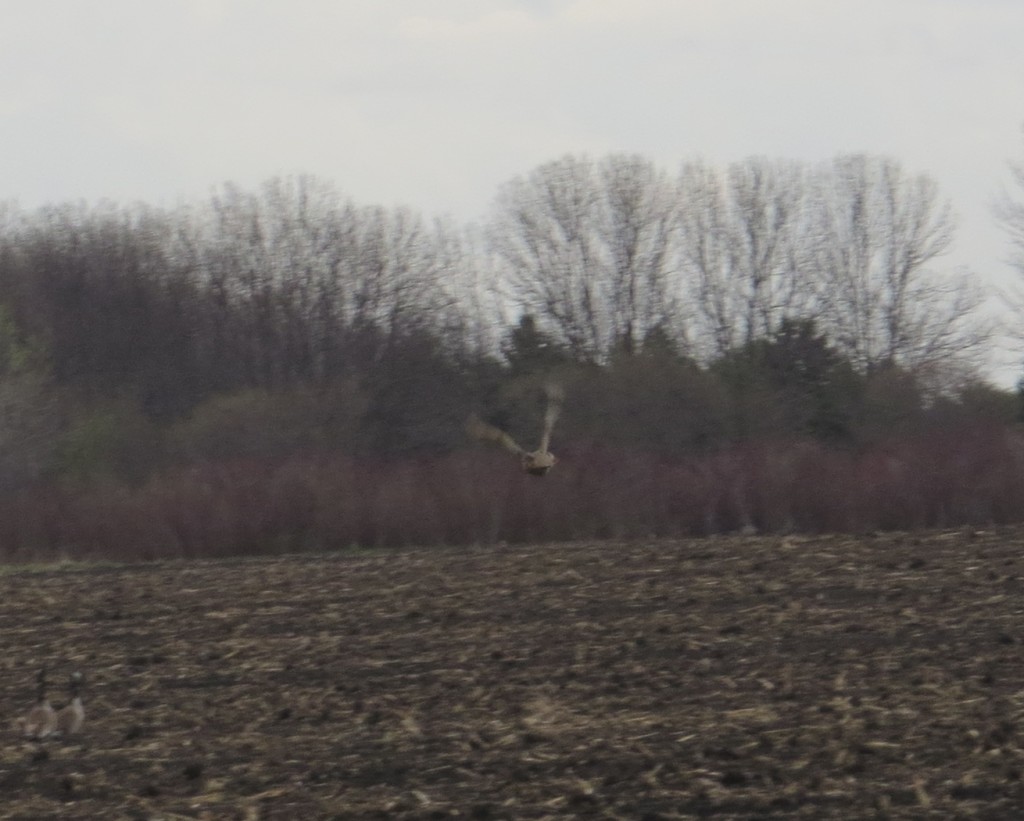 Sure, it’s a crummy photo but this was taken on the draw as I stalked the two birds for a second flush. The thrill of this encounter is tough to put into words. Gray Partridges are tough, tough birds to find in anywhere in Minnesota. They are most often seen in the dead of winter at dawn or dusk when they are feeding out in the plowed fields. Their dark bodies are easy to spot against the snow. But even this is a rare occurrence for the luckiest of birders who happen to be traveling down the right gravel road. Gray Partridges like short grass areas where the cover is “thin” and small in area, quite the opposite of Pheasants. They hold tight and can hide among little/no cover. Unless a birder is getting off the beaten path and hiking old fence lines, drainage ditches, and abandoned farm sites, they likely will never see this bird. I actually have seen this bird before and in Minnesota, but I did so as a Pheasant hunter. A few years before I was a birder, a buddy and I kicked up a covey of about 10 birds and harvested one (it was and still is a legal game bird). But that was the last time I laid eyes on one. Since then I have started doubting their existence and begun to think, as some bird bloggers have, that this is a mythical bird. The thought of one in my own county was even more preposterous. Yet with a new county bird–and an exceptional one at that!–count me among the believers again.
Sure, it’s a crummy photo but this was taken on the draw as I stalked the two birds for a second flush. The thrill of this encounter is tough to put into words. Gray Partridges are tough, tough birds to find in anywhere in Minnesota. They are most often seen in the dead of winter at dawn or dusk when they are feeding out in the plowed fields. Their dark bodies are easy to spot against the snow. But even this is a rare occurrence for the luckiest of birders who happen to be traveling down the right gravel road. Gray Partridges like short grass areas where the cover is “thin” and small in area, quite the opposite of Pheasants. They hold tight and can hide among little/no cover. Unless a birder is getting off the beaten path and hiking old fence lines, drainage ditches, and abandoned farm sites, they likely will never see this bird. I actually have seen this bird before and in Minnesota, but I did so as a Pheasant hunter. A few years before I was a birder, a buddy and I kicked up a covey of about 10 birds and harvested one (it was and still is a legal game bird). But that was the last time I laid eyes on one. Since then I have started doubting their existence and begun to think, as some bird bloggers have, that this is a mythical bird. The thought of one in my own county was even more preposterous. Yet with a new county bird–and an exceptional one at that!–count me among the believers again.
Because I have seen Gray Partridges in Minnesota in the past but could not recall the date, this has been the one species that has caused my MN eBird list and my actual MN list to be out of balance. This find rectified that; I am still reveling in the synchronization.
I have literally hunted (successfully) Gray Partridges, or Hungarian Partridges, in Montana two decades ago; but no worries, I won’t be chasing these two with a shotgun. In fact, I’m not even sharing the location with birders because I think these two might be nesting at this site. I will be taking Evan out there in the coming week as he told me he would like to get this lifer.
Speaking of Evan, I dashed into town full of birdrenaline to meet him for lunch. And then I went for dessert up in Swift County:
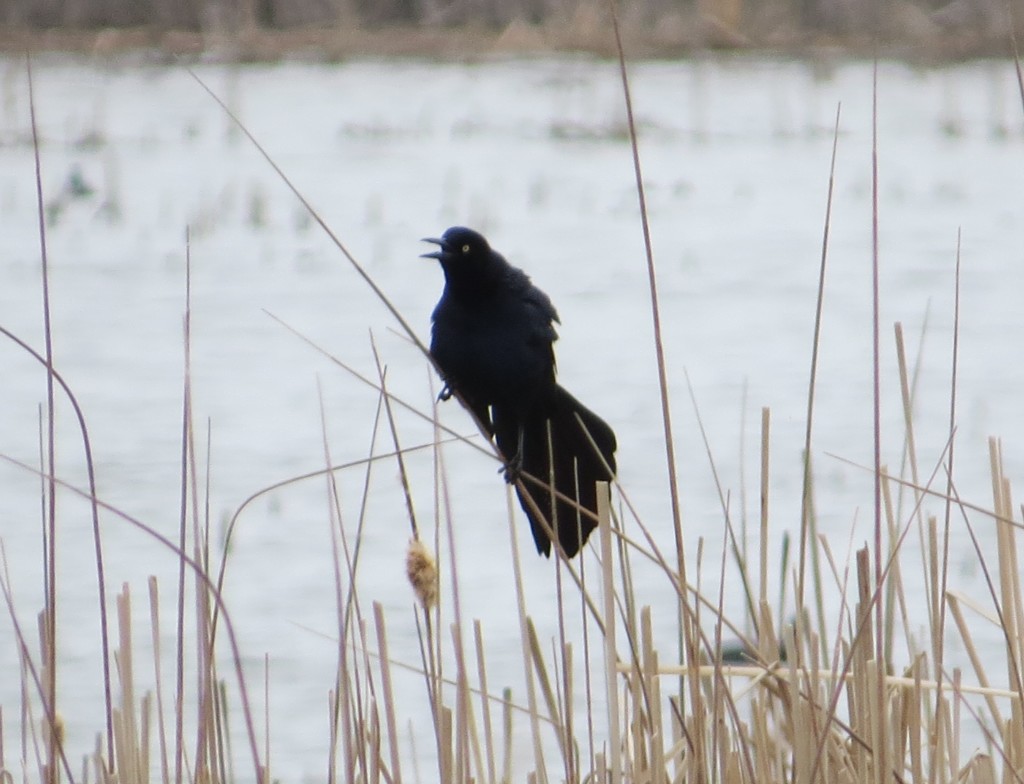
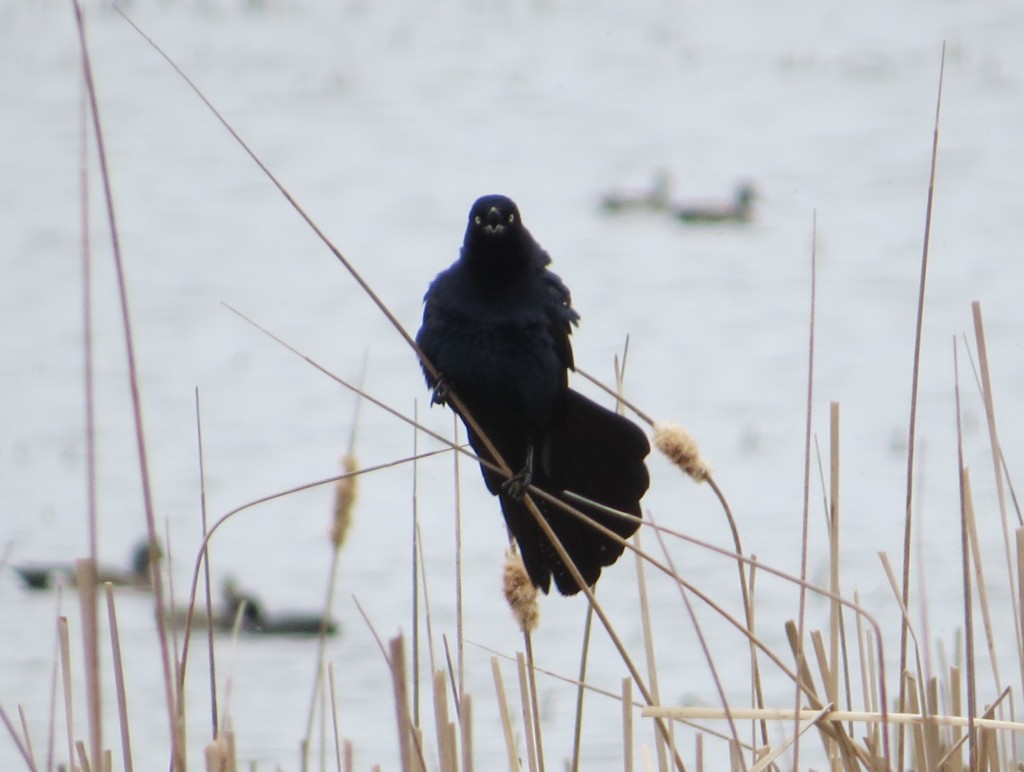 New yard bird (the state bird!), new county bird(!!), eBird list harmony, new Minnesota bird, 300th MN bird–all in one day. Good times!!
New yard bird (the state bird!), new county bird(!!), eBird list harmony, new Minnesota bird, 300th MN bird–all in one day. Good times!!

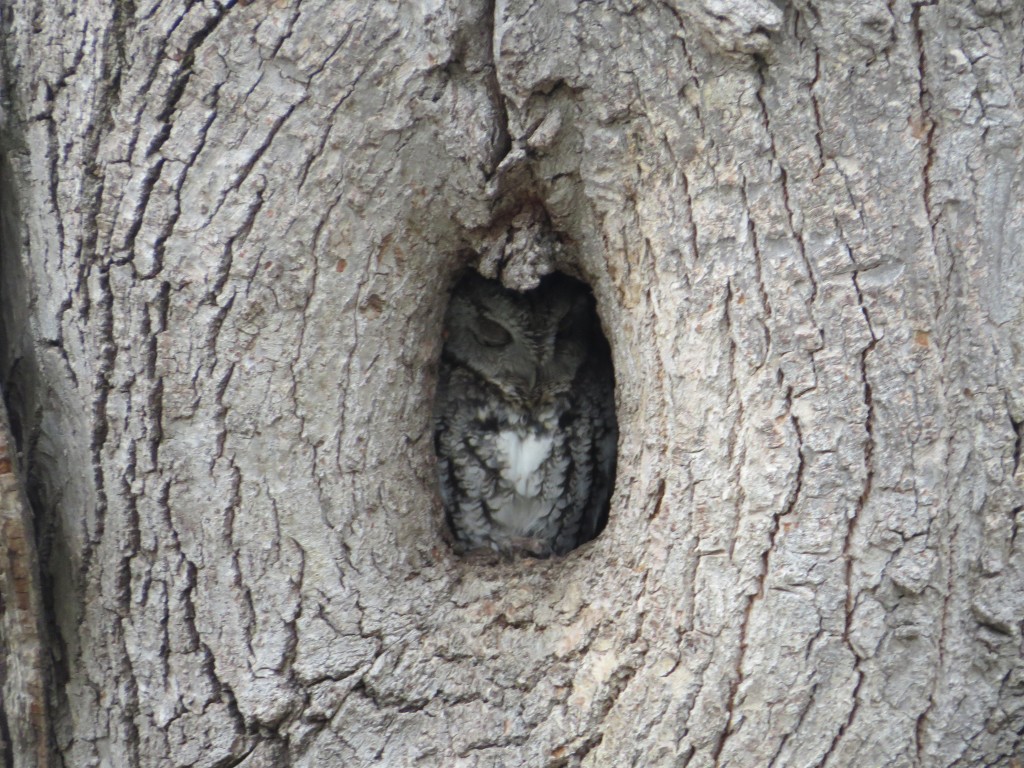 Maybe it’s work, maybe it’s my unfinished taxes, maybe it’s the fact that the regulars have become blasé, but my obliviousness is mostly due to my OCD over ESOWs for TOBY (Tommy’s Owl Big Year). Nights are filled with mining the data, pumping the contacts, and even prowling the woods. There has been little time for the ordinary. This indifference should not be mistaken for a lack of awareness of my surroundings or of the current events in the birding world.
Maybe it’s work, maybe it’s my unfinished taxes, maybe it’s the fact that the regulars have become blasé, but my obliviousness is mostly due to my OCD over ESOWs for TOBY (Tommy’s Owl Big Year). Nights are filled with mining the data, pumping the contacts, and even prowling the woods. There has been little time for the ordinary. This indifference should not be mistaken for a lack of awareness of my surroundings or of the current events in the birding world.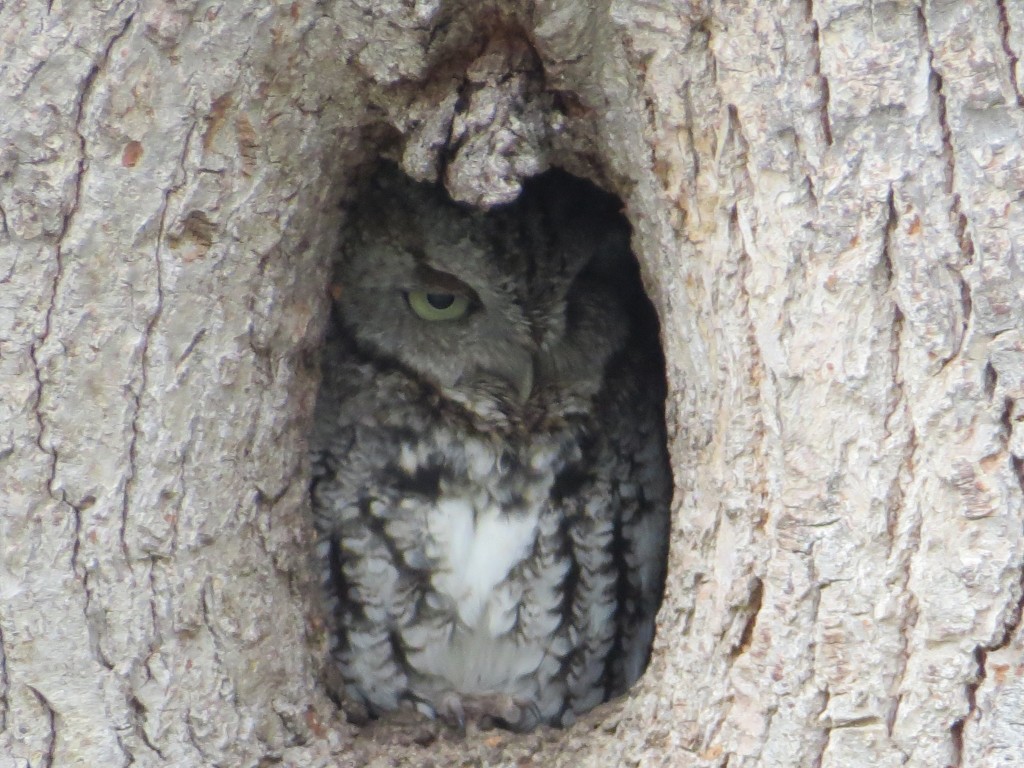 Sometimes things do catch my attention requiring me to investigate matters further.
Sometimes things do catch my attention requiring me to investigate matters further.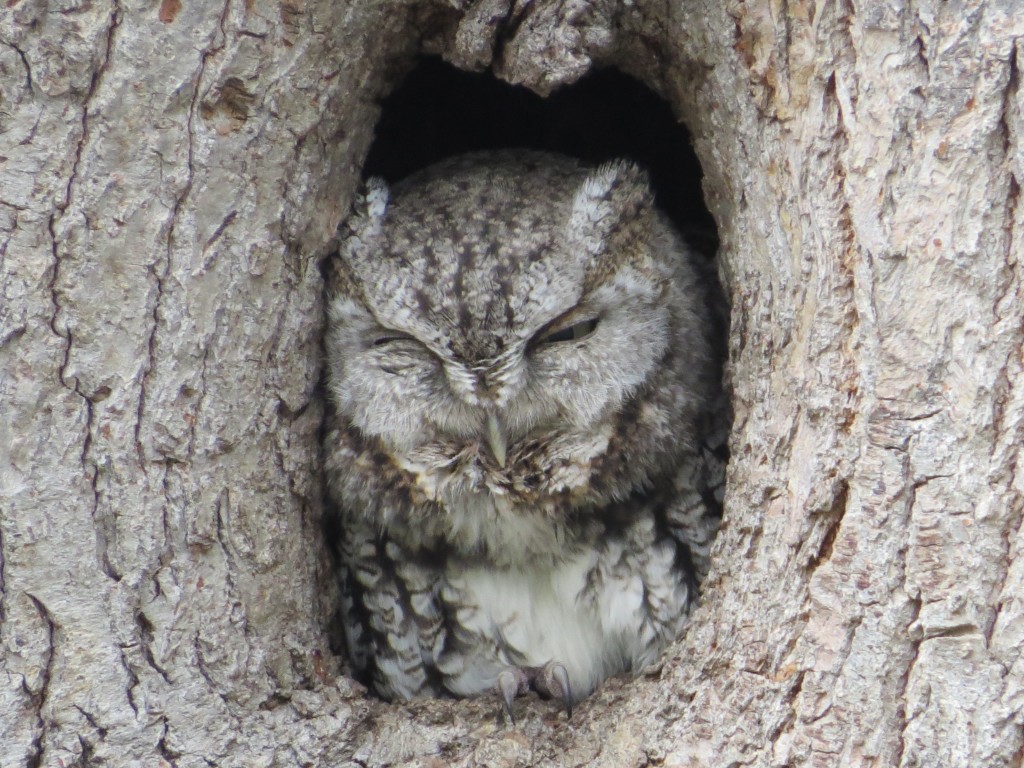
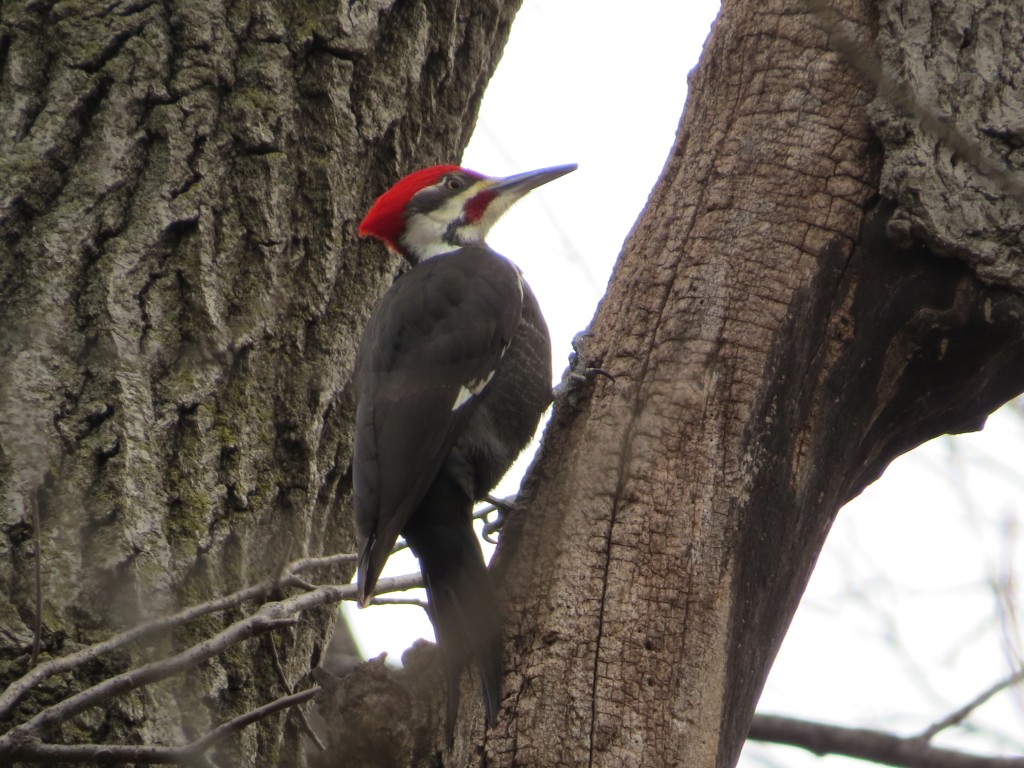
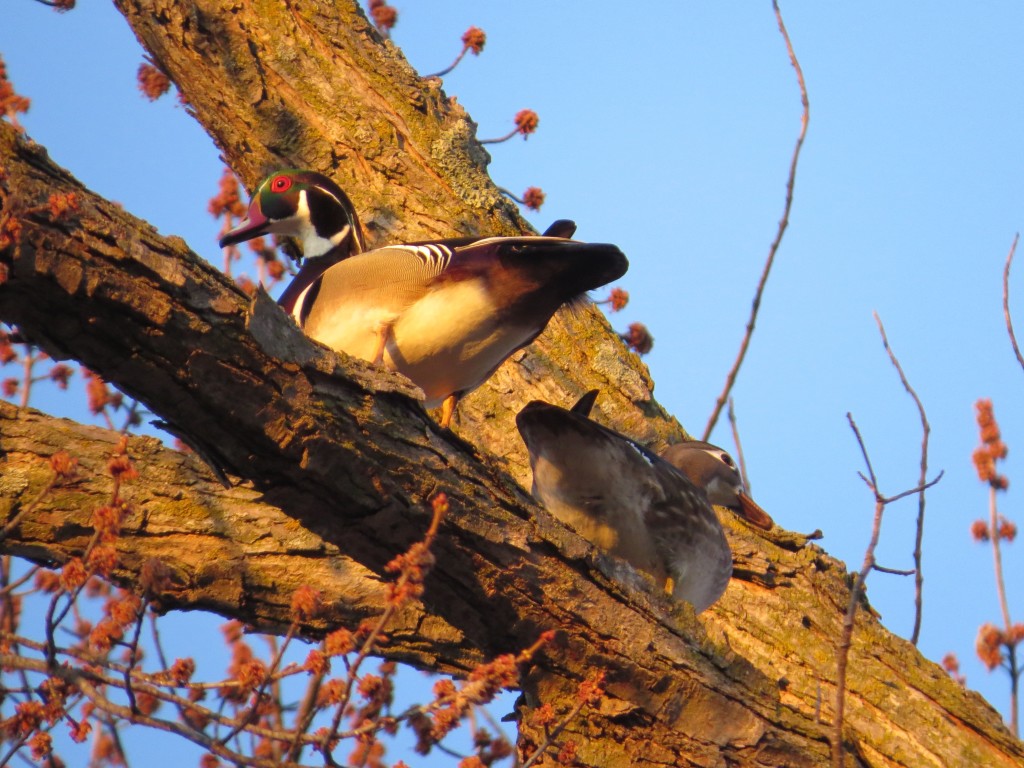
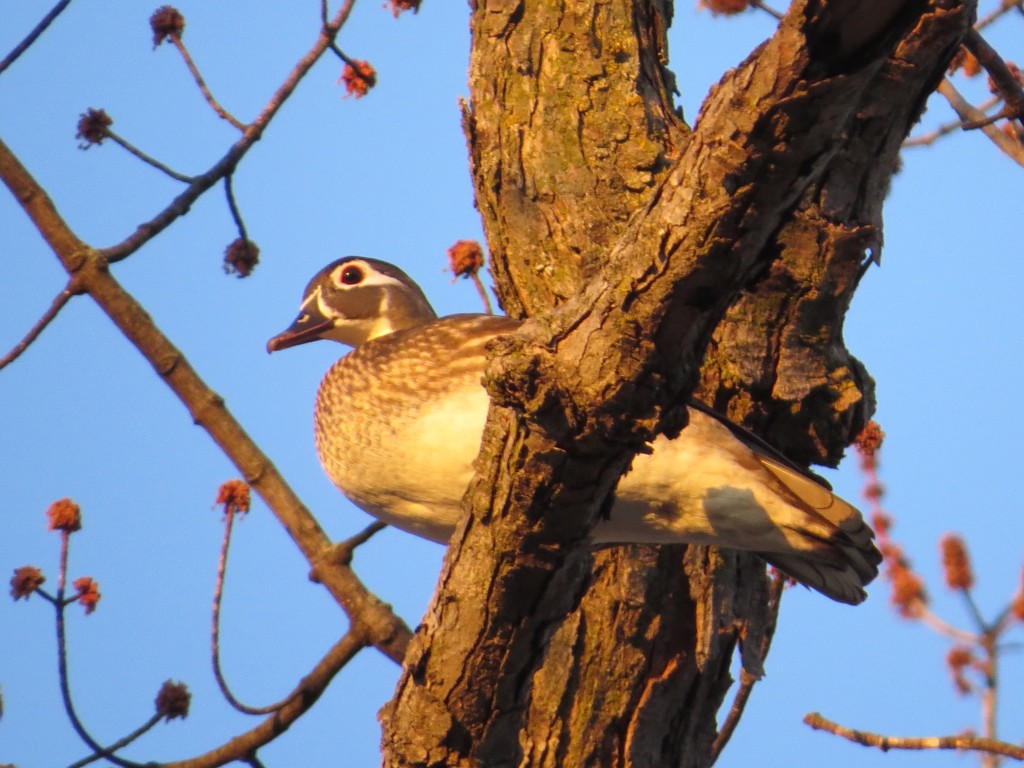
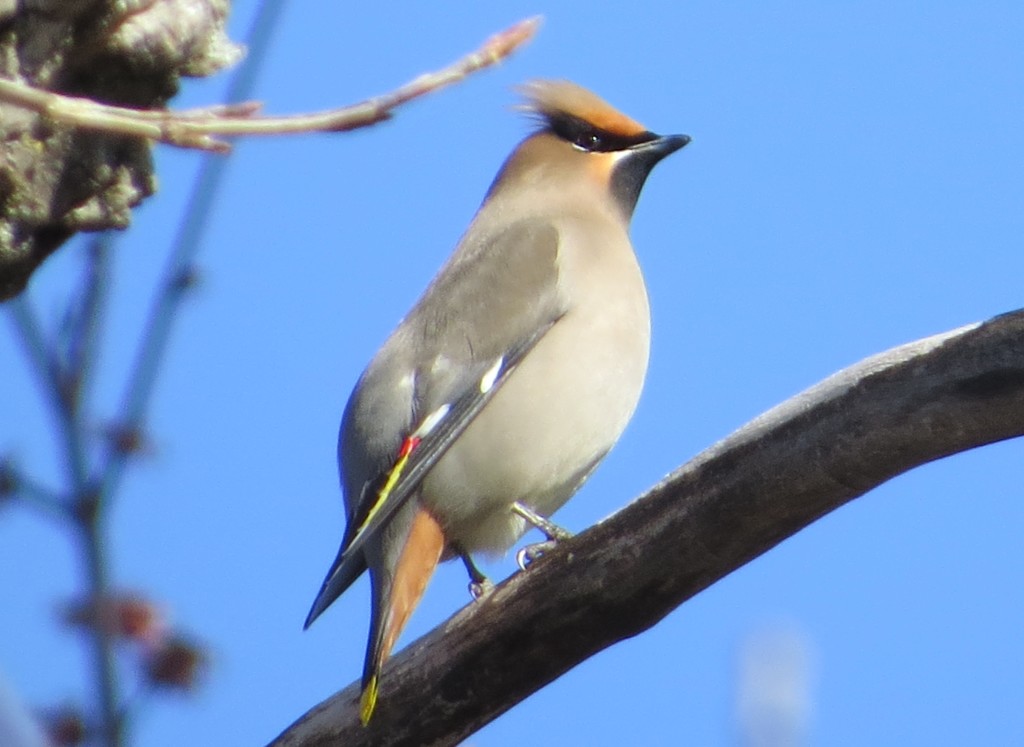
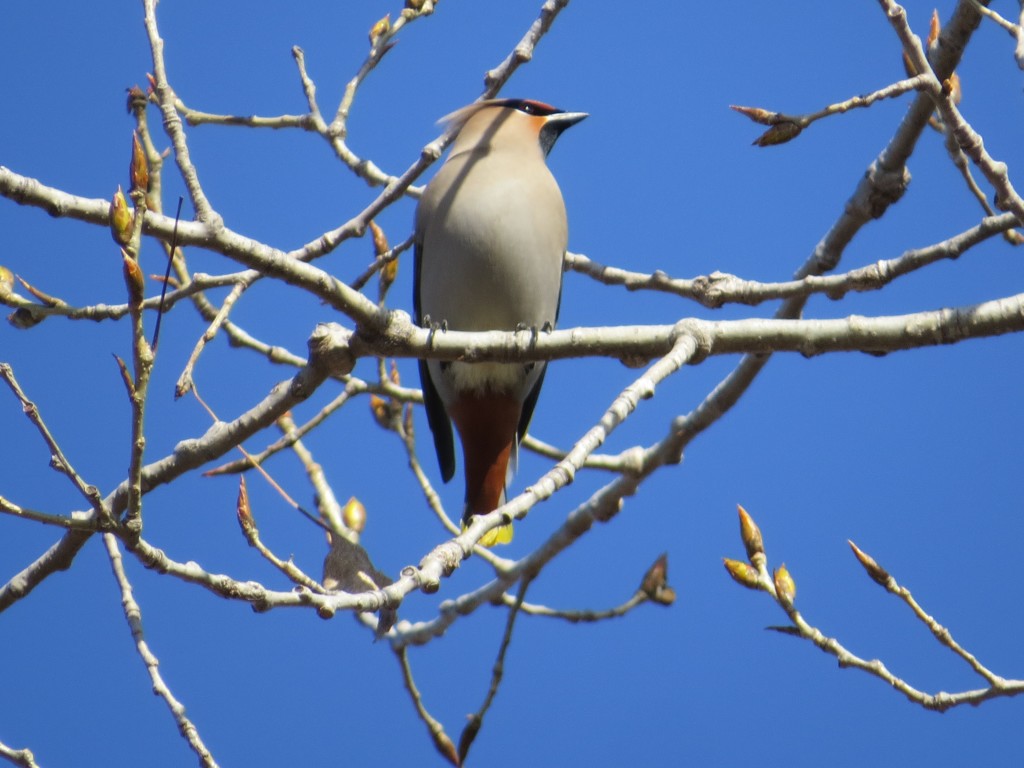
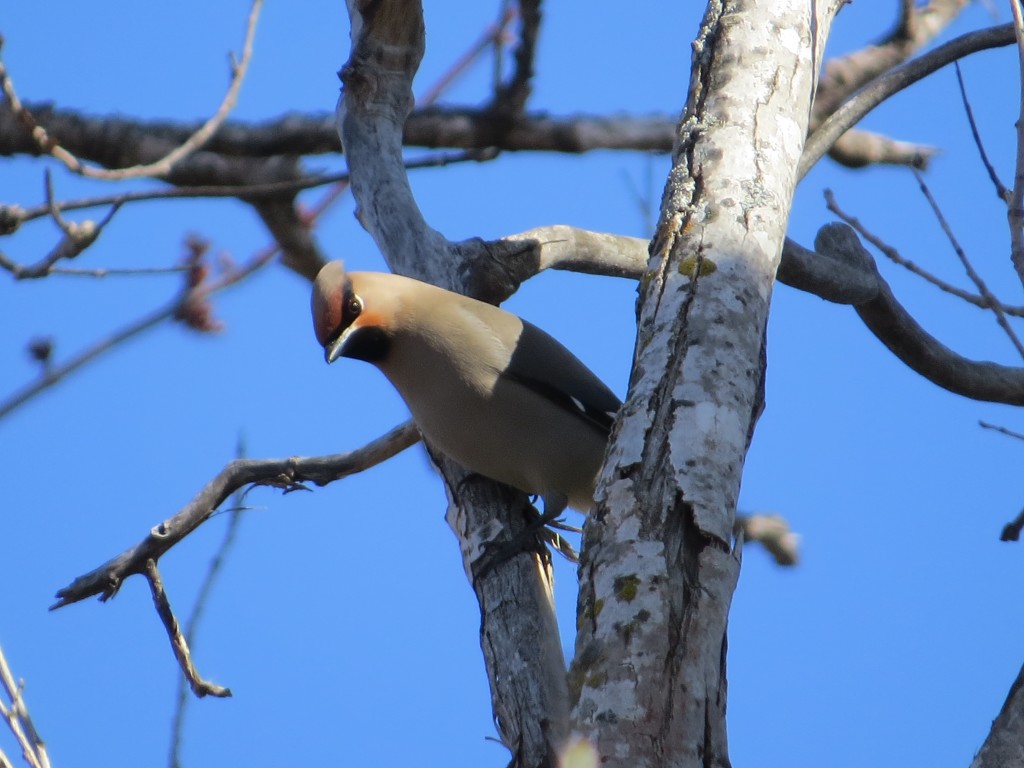
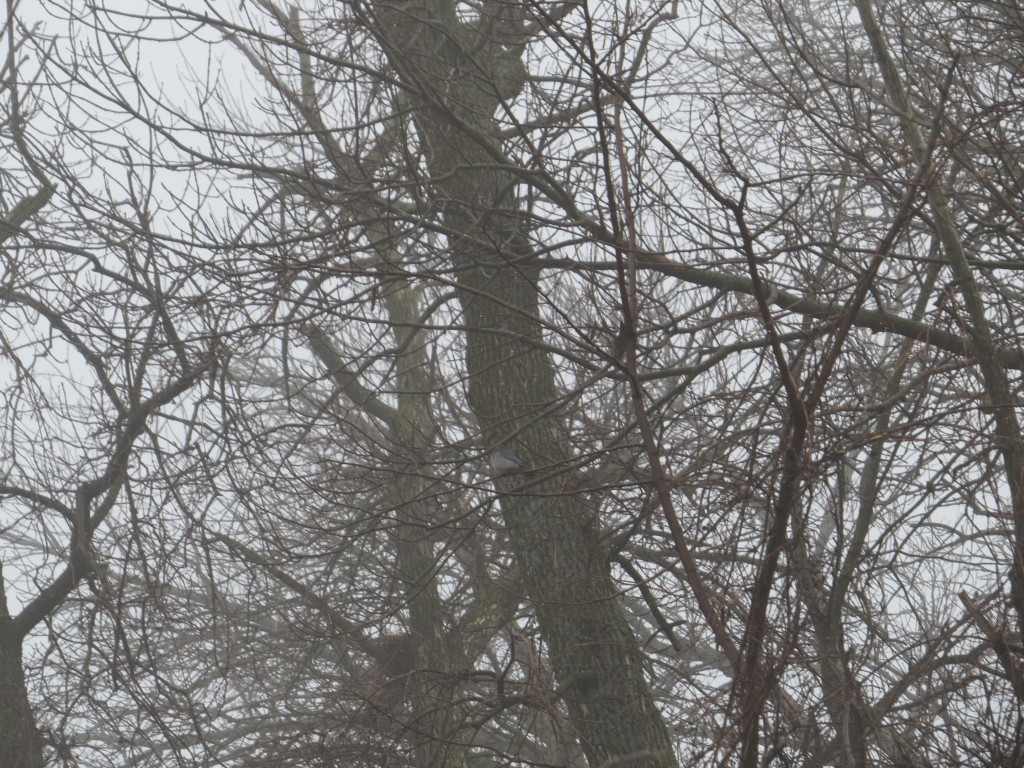
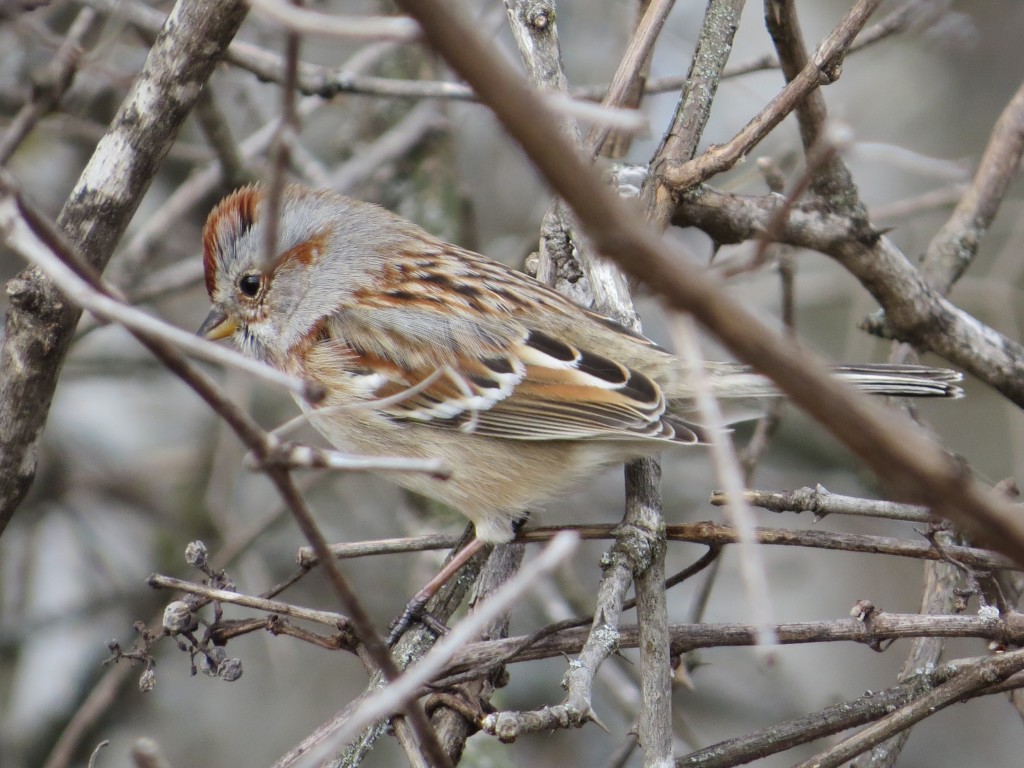
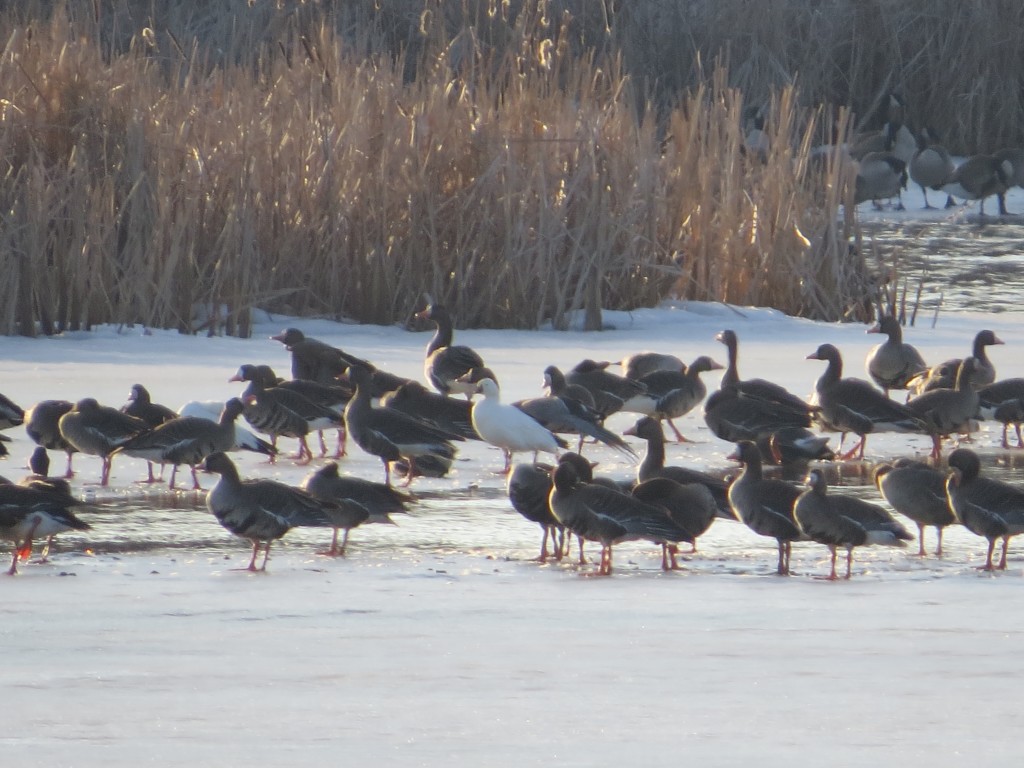 Another overdue addition was American Woodcock, peenting style. (Turn the volume way up)
Another overdue addition was American Woodcock, peenting style. (Turn the volume way up)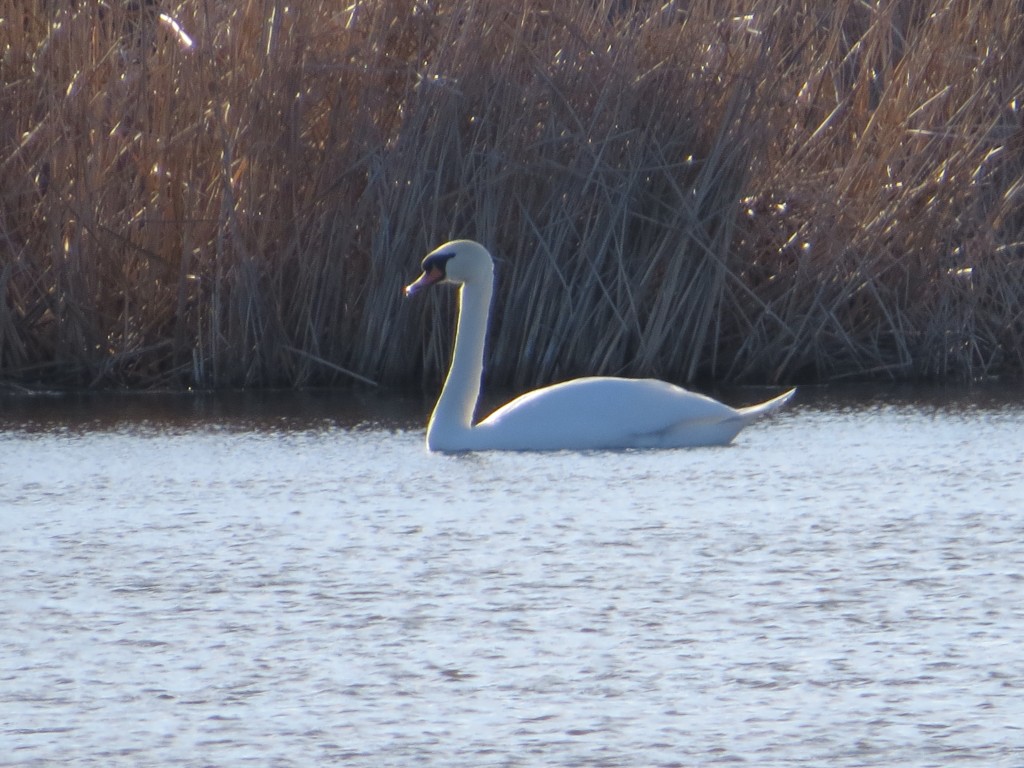
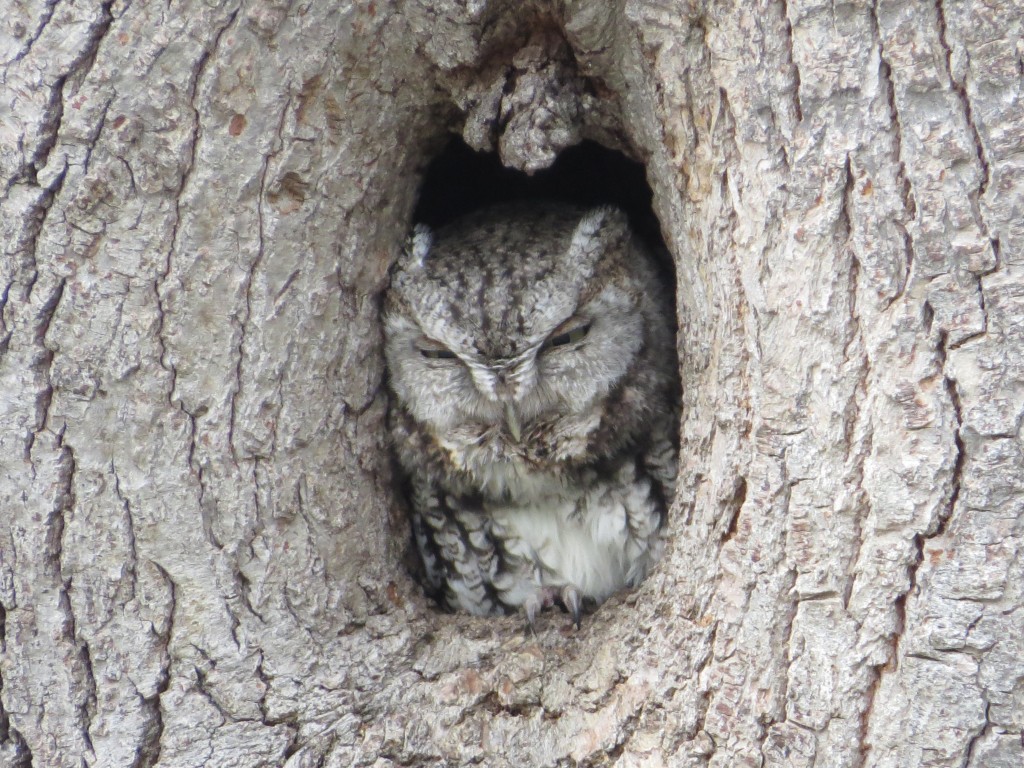
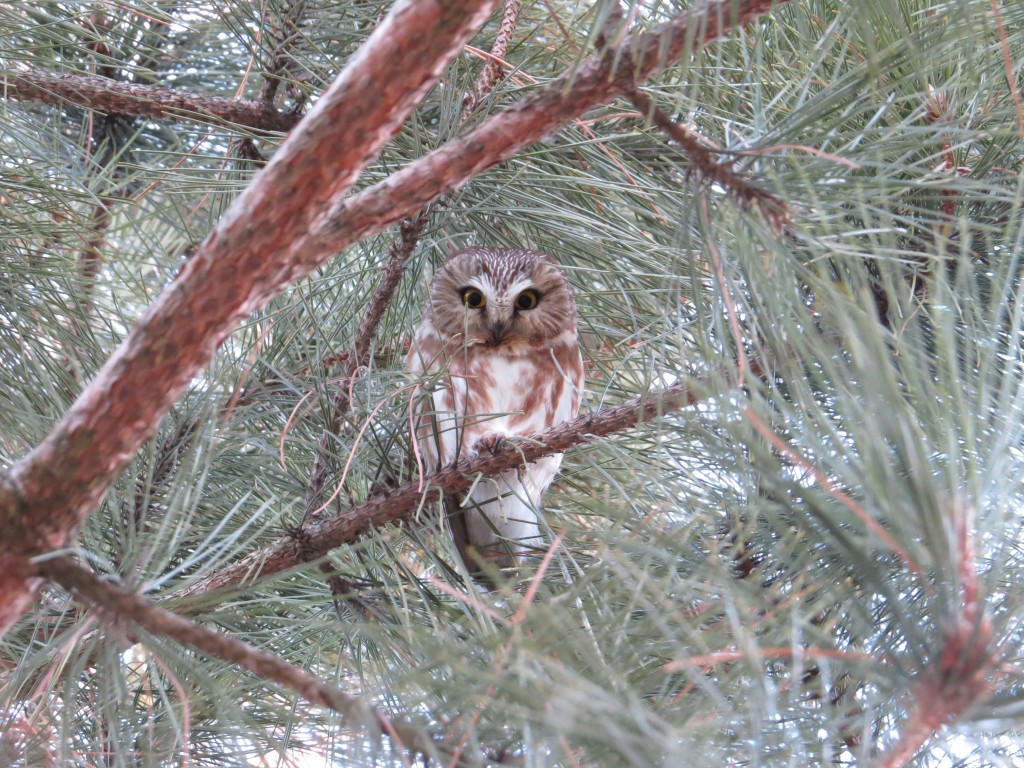 The Saw-whet is not much bigger than a pop can. I don’t think I’ve seen an animal that’s cuter. Jeremy’s friends pinpointed it for us right away. That was probably a good thing…
The Saw-whet is not much bigger than a pop can. I don’t think I’ve seen an animal that’s cuter. Jeremy’s friends pinpointed it for us right away. That was probably a good thing…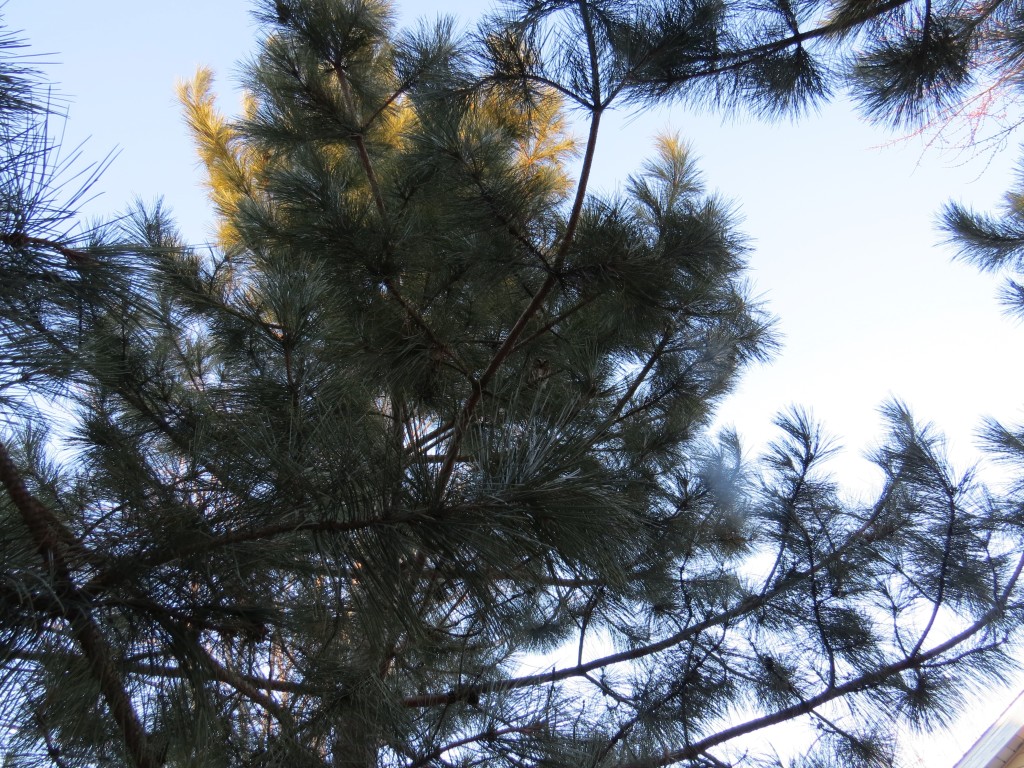
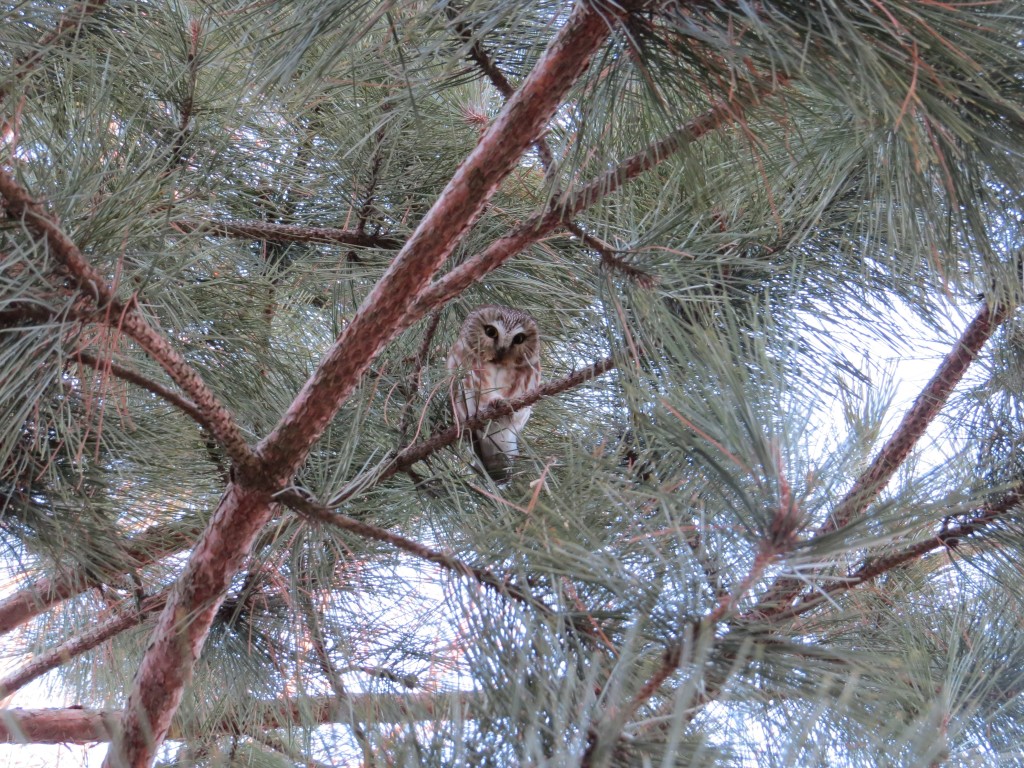
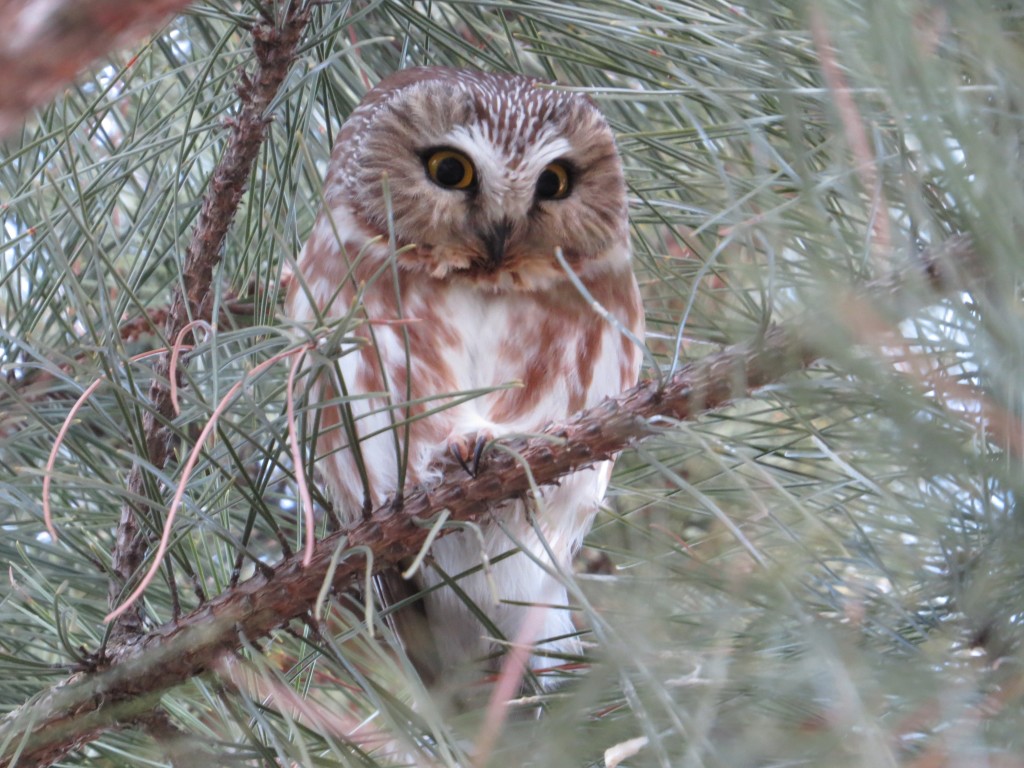 Occasionally it looked at me.
Occasionally it looked at me.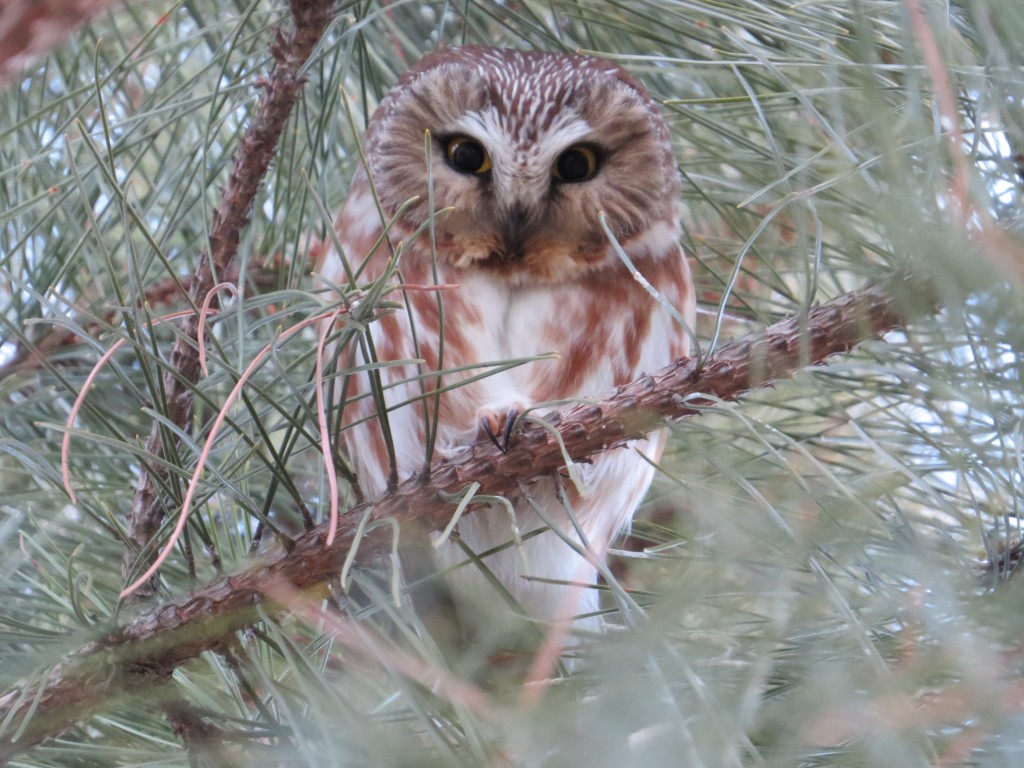 But it was mostly captivated by Steve.
But it was mostly captivated by Steve.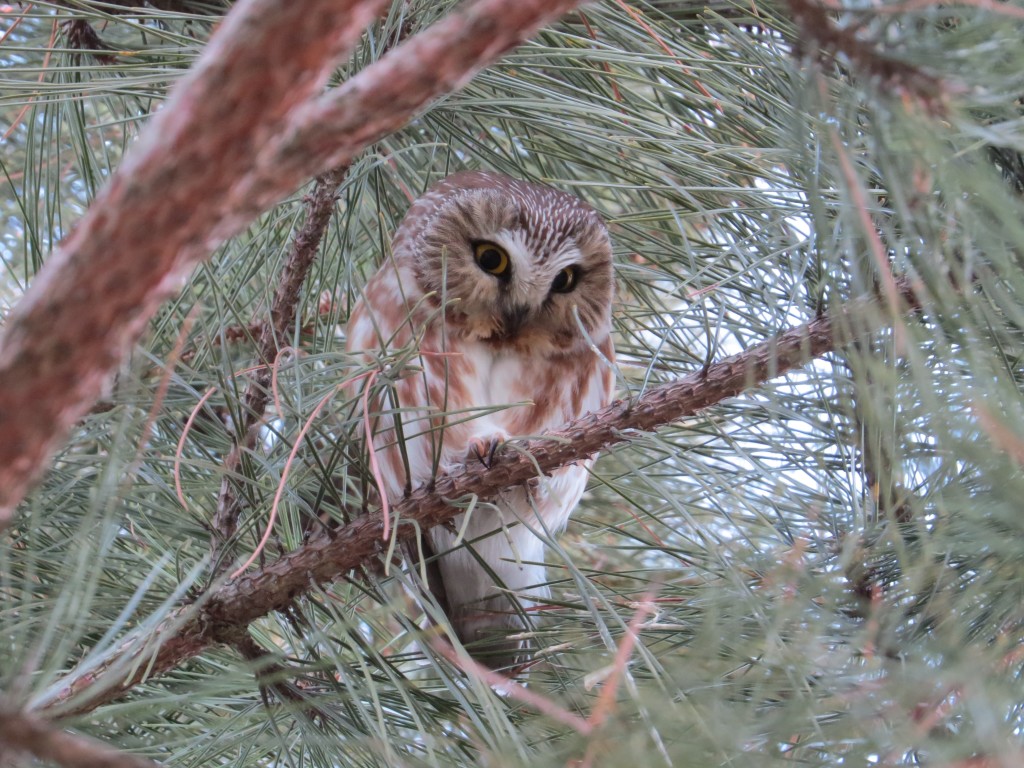
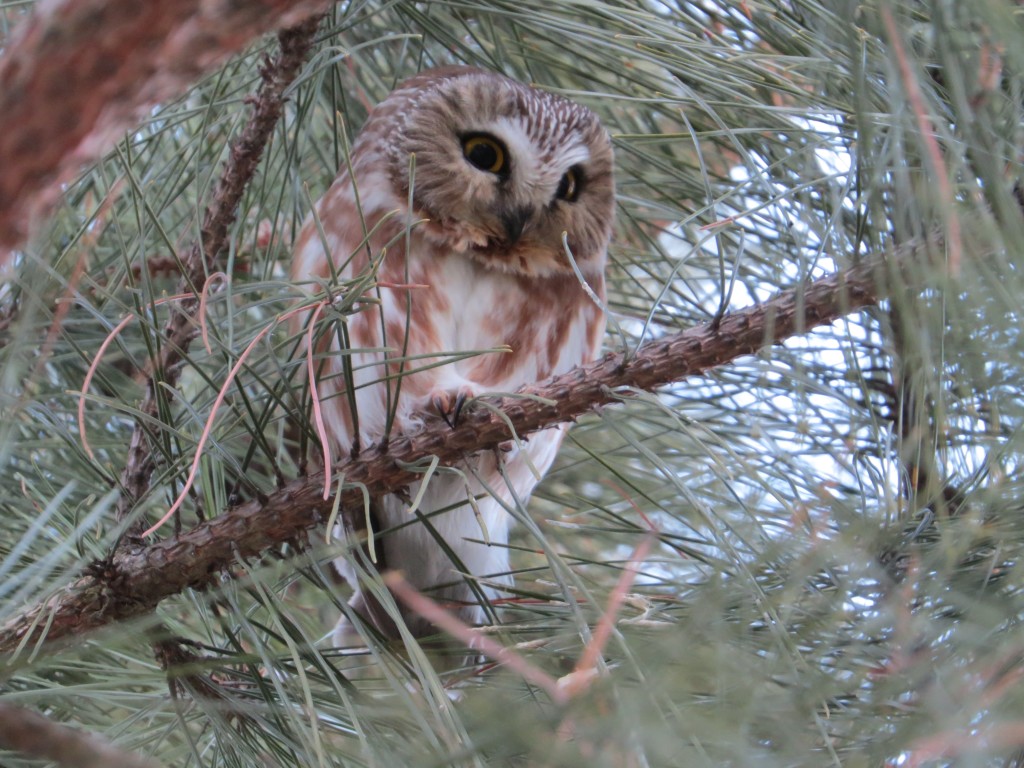 What was fascinating to me was how sloth-like this Owl was in moving its head. The movement was almost indiscernible. The fact that we were finally looking at a real Northern Saw-whet Owl combined with a close encounter with a tame bird makes this one of the best Owl experiences I’ve ever had.
What was fascinating to me was how sloth-like this Owl was in moving its head. The movement was almost indiscernible. The fact that we were finally looking at a real Northern Saw-whet Owl combined with a close encounter with a tame bird makes this one of the best Owl experiences I’ve ever had.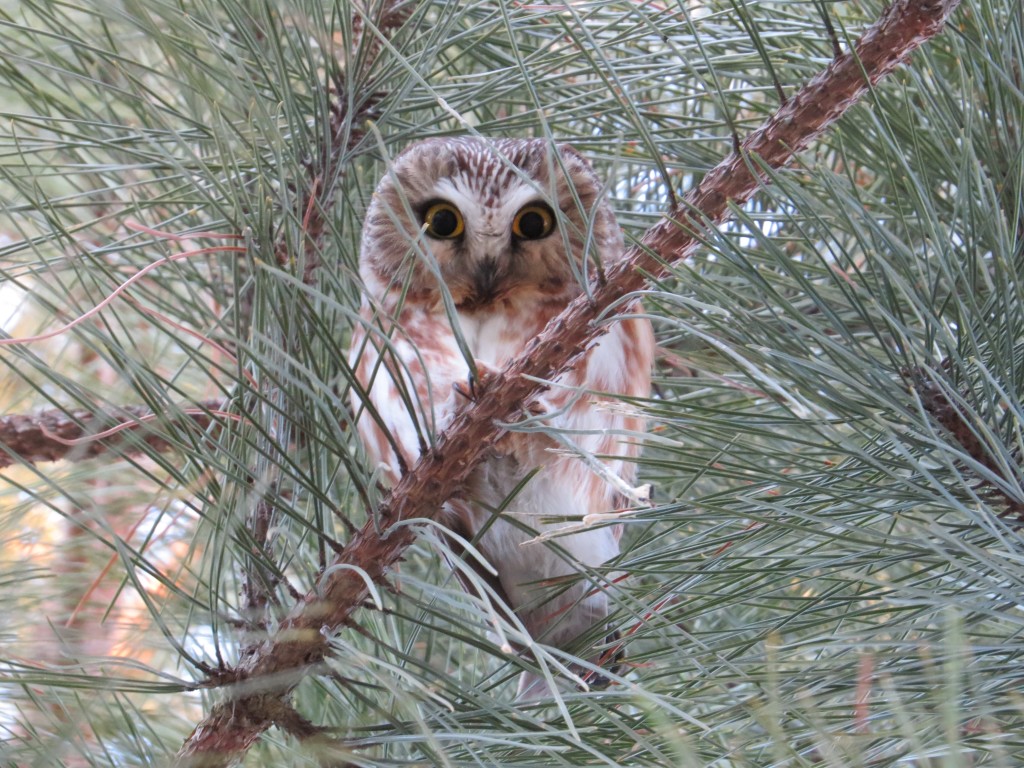 After taking last looks at the Owl and admiring the massive pile of pellets and all the whitewash from an Owl that has sat in this same spot every day for the winter, Steve and I thanked the homeowners and headed home feeling good…or evil. Steve called up his twin brother who is also a birder and rubbed in his new lifer. I went to the liquor store.
After taking last looks at the Owl and admiring the massive pile of pellets and all the whitewash from an Owl that has sat in this same spot every day for the winter, Steve and I thanked the homeowners and headed home feeling good…or evil. Steve called up his twin brother who is also a birder and rubbed in his new lifer. I went to the liquor store.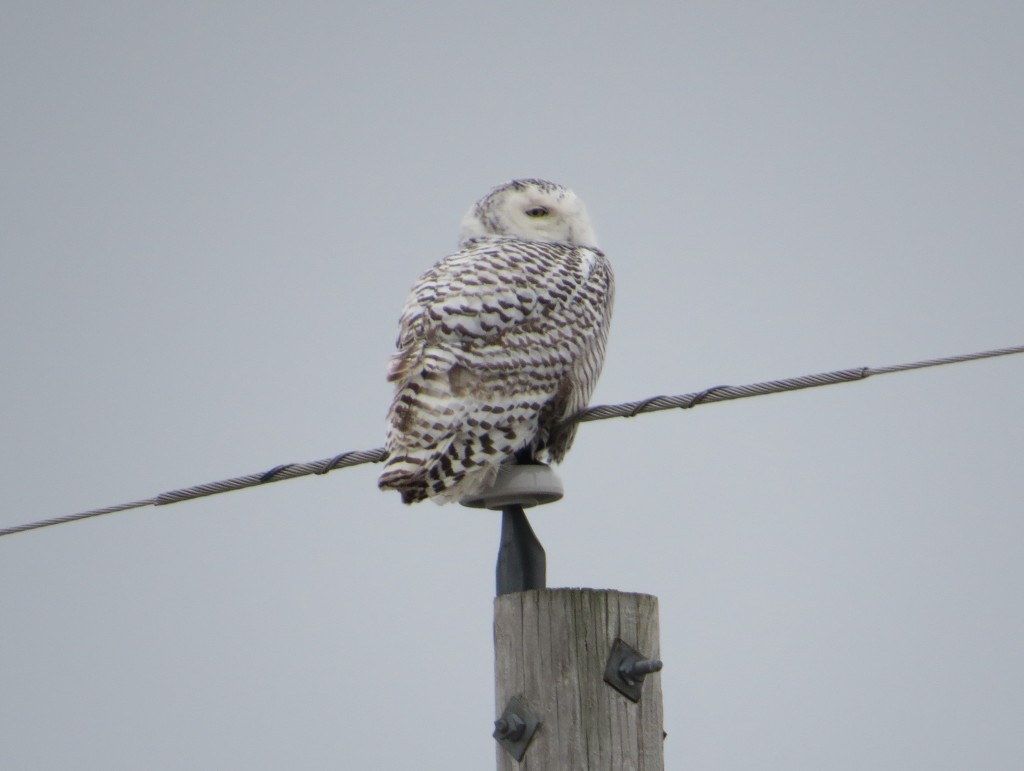 Long-time readers of ABWCH may recall that two years ago, my coworkers and students were feeding me sightings nearly daily of a crazy number of Snowy Owls. Those were the gold old days of the first of two consecutive irruption years. Fellow teacher, Bonnie, spotted this one this past weekend. Bonnie has a way with the SNOW–she found me two of them a couple years ago.
Long-time readers of ABWCH may recall that two years ago, my coworkers and students were feeding me sightings nearly daily of a crazy number of Snowy Owls. Those were the gold old days of the first of two consecutive irruption years. Fellow teacher, Bonnie, spotted this one this past weekend. Bonnie has a way with the SNOW–she found me two of them a couple years ago.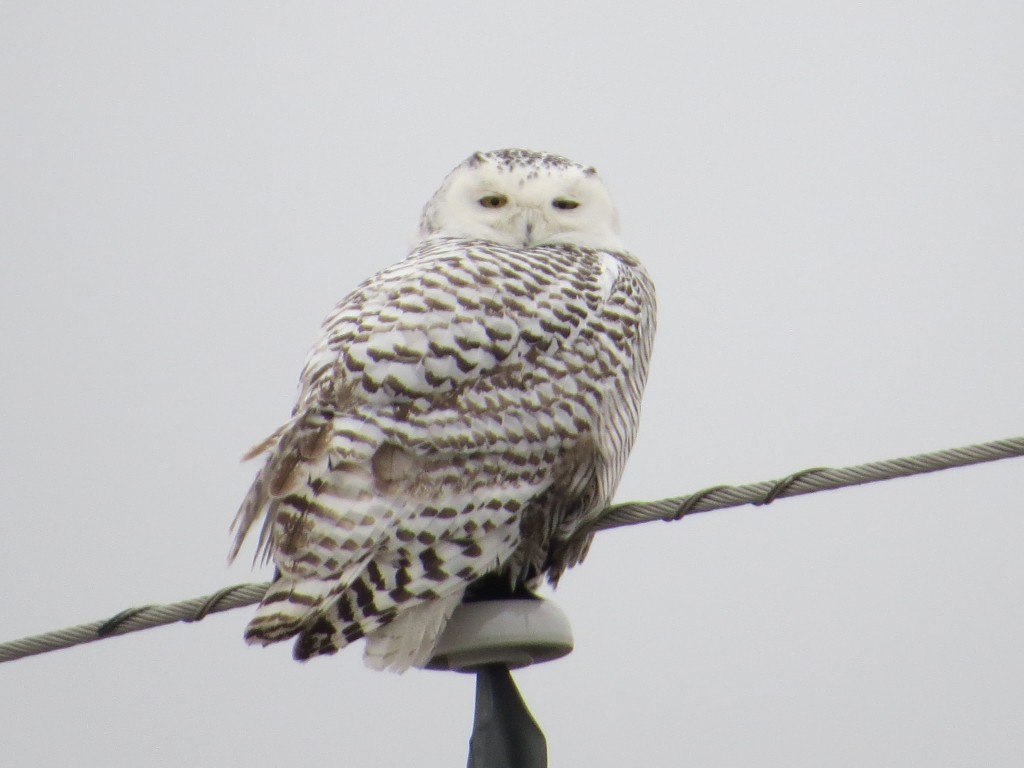 Despite this being a non-irruption year, I’ve had reports this winter of at least 5 Snowy Owls in my two-county birding area. This, however, is the first local one I’ve seen this season. Fellow teacher and birding friend Brad relocated Bonnie’s find Monday morning. Brad did the Minnesota-nice birder thing of babysitting it until I got on scene. Another birding/teacher friend, Theresa, also joined the mix. Monday was a scheduled day off for all of us, yet here we were holding a staff meeting in the open countryside. It was a pretty good meeting.
Despite this being a non-irruption year, I’ve had reports this winter of at least 5 Snowy Owls in my two-county birding area. This, however, is the first local one I’ve seen this season. Fellow teacher and birding friend Brad relocated Bonnie’s find Monday morning. Brad did the Minnesota-nice birder thing of babysitting it until I got on scene. Another birding/teacher friend, Theresa, also joined the mix. Monday was a scheduled day off for all of us, yet here we were holding a staff meeting in the open countryside. It was a pretty good meeting.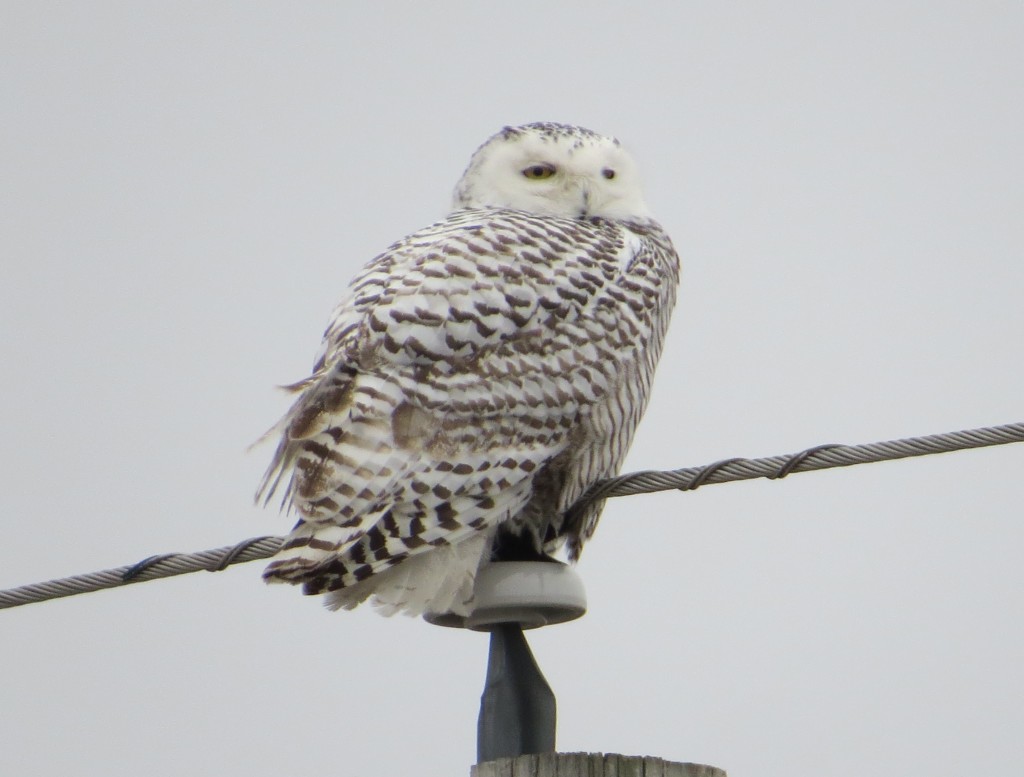 After this meeting of the minds, I actually went off to a real meeting at school. But then it was back to birding business as I traveled up to Sherburne National Wildlife Refuge that same day to look for the White-winged Crossbills that have become very reliable there. My previous lifer-sighting was a quick glimpse at a female; I was wanting to see and photograph a male.
After this meeting of the minds, I actually went off to a real meeting at school. But then it was back to birding business as I traveled up to Sherburne National Wildlife Refuge that same day to look for the White-winged Crossbills that have become very reliable there. My previous lifer-sighting was a quick glimpse at a female; I was wanting to see and photograph a male.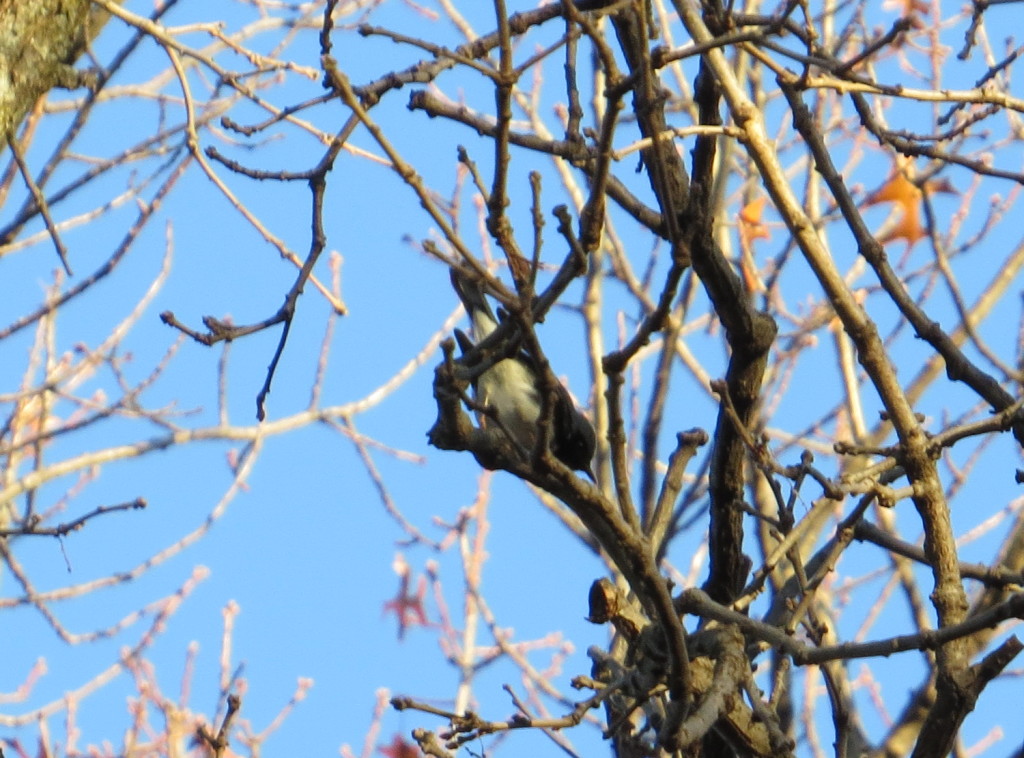
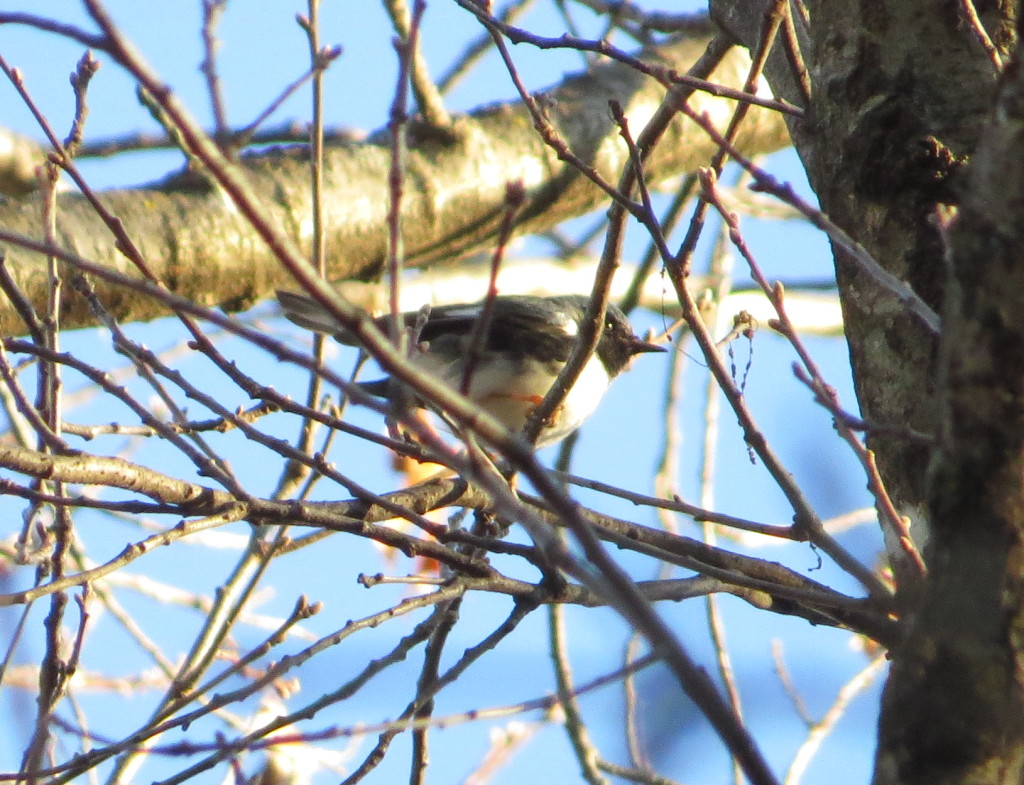
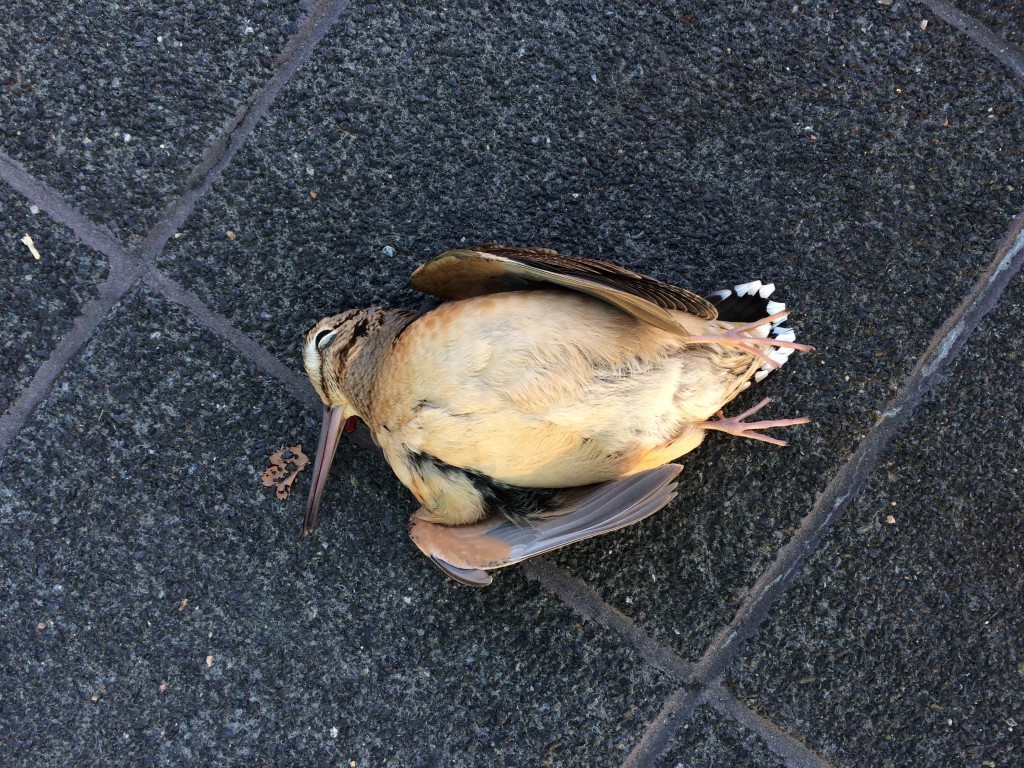
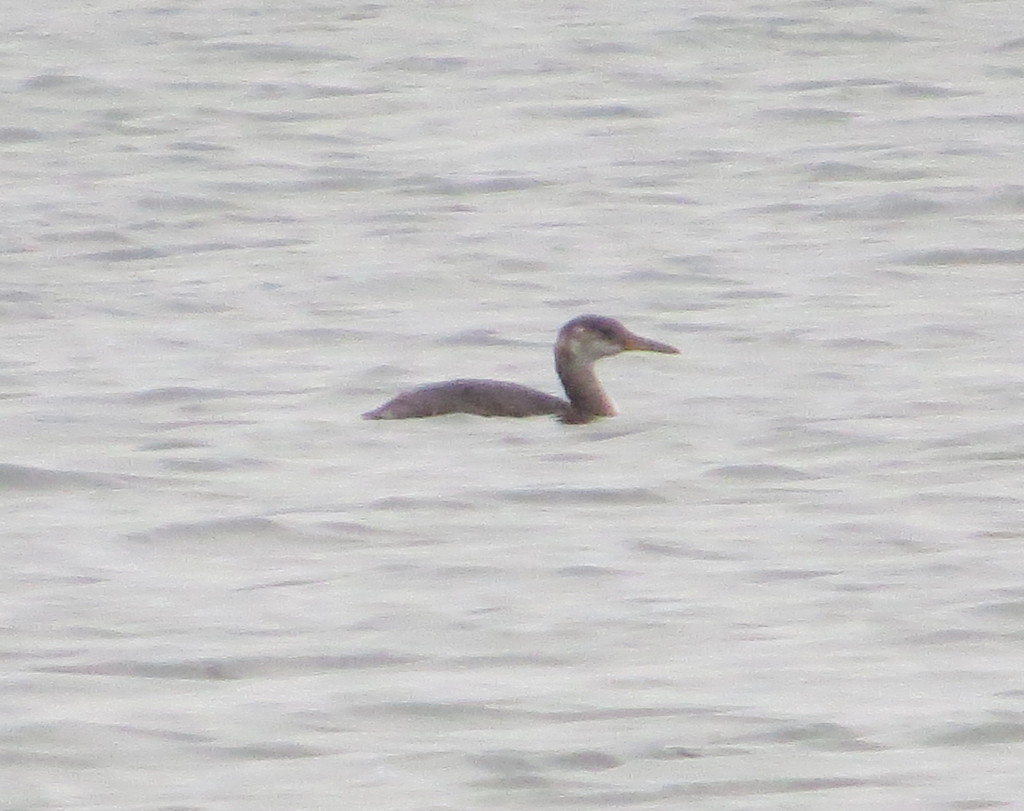 We shall see if AZ makes the next post, but it’s looking doubtful as the vagrant party just won’t stop. ABWCH will hopefully have a tidy little write-up from South Dakota after the weekend. Keep your fingers crossed everybody.
We shall see if AZ makes the next post, but it’s looking doubtful as the vagrant party just won’t stop. ABWCH will hopefully have a tidy little write-up from South Dakota after the weekend. Keep your fingers crossed everybody. I drove along the west shore of the lake and pulled into a boat launch to scan the waters. Right away I saw a binocular-clad gentleman loading a spotting scope into a shiny Prius–this birder could be spotted a mile away. I asked him if he saw the duck. He told me no and said he’d missed on it multiple times. Odd, I thought, as I recalled the duck being reported every single day for the better part of a week. After this exchange, he and I both headed to Orchard Lake Park on the south end of the lake where people had said was the best place from which to see the Scoter. He had the lead as I followed his car into the parking lot. Rather than parking in a stall, he faced his vehicle directly at the water. I parked, looked at the water and instantly saw a distant, giant, black-and-white blob that had Surf Scoter GISS written all over it. Before I could get my binoculars up to verify, the other birder, who never left his car, turned around after 30 seconds and drove out of the park! My desire to look at my Surf Scoter lifer was suddenly replaced by the fear that this guy might have, somehow, missed it. Was it diving when he looked? Did he not recognize this juvenile form of this species? Did he see it, get his tic, and just peel out? Even if the guy was just a lister, who doesn’t spend at least a couple minutes enjoying looking at an ocean-going Scoter in MINNESOTA? I panicked. I hesitated. Do I race after him on foot and pound on his trunk? Do I hop in my car and chase him down? You can’t save them all, I guess. Oh, well. Let’s have a look at that Surf Scoter…
I drove along the west shore of the lake and pulled into a boat launch to scan the waters. Right away I saw a binocular-clad gentleman loading a spotting scope into a shiny Prius–this birder could be spotted a mile away. I asked him if he saw the duck. He told me no and said he’d missed on it multiple times. Odd, I thought, as I recalled the duck being reported every single day for the better part of a week. After this exchange, he and I both headed to Orchard Lake Park on the south end of the lake where people had said was the best place from which to see the Scoter. He had the lead as I followed his car into the parking lot. Rather than parking in a stall, he faced his vehicle directly at the water. I parked, looked at the water and instantly saw a distant, giant, black-and-white blob that had Surf Scoter GISS written all over it. Before I could get my binoculars up to verify, the other birder, who never left his car, turned around after 30 seconds and drove out of the park! My desire to look at my Surf Scoter lifer was suddenly replaced by the fear that this guy might have, somehow, missed it. Was it diving when he looked? Did he not recognize this juvenile form of this species? Did he see it, get his tic, and just peel out? Even if the guy was just a lister, who doesn’t spend at least a couple minutes enjoying looking at an ocean-going Scoter in MINNESOTA? I panicked. I hesitated. Do I race after him on foot and pound on his trunk? Do I hop in my car and chase him down? You can’t save them all, I guess. Oh, well. Let’s have a look at that Surf Scoter…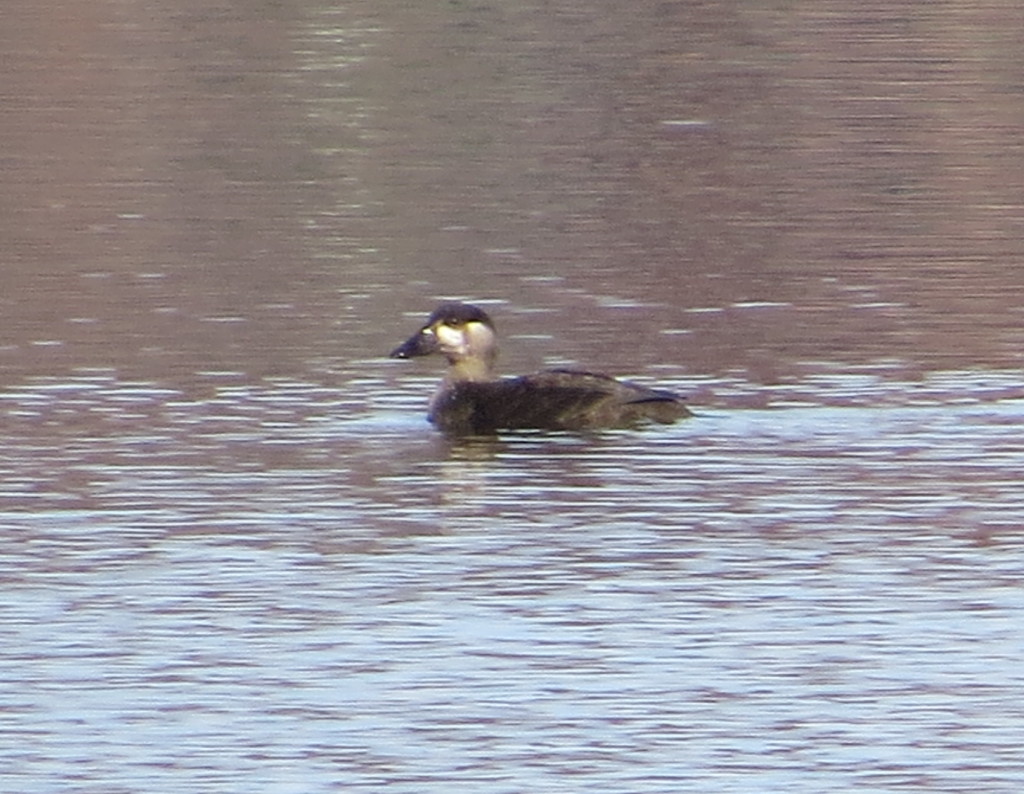 This is now my fifth species of sea duck in Minnesota with White-winged Scoter, Harlequin Duck, Common Eider, and Long-tailed Duck making up the others. I kind of prefer my sea ducks on the turbulent, cold waters of Lake Superior on a gray day. That kind of backdrop adds to the mystique and allure of sea ducks. Seeing one on a placid metro lake reflecting lingering fall colors on a 72° day is just kind of so-so.
This is now my fifth species of sea duck in Minnesota with White-winged Scoter, Harlequin Duck, Common Eider, and Long-tailed Duck making up the others. I kind of prefer my sea ducks on the turbulent, cold waters of Lake Superior on a gray day. That kind of backdrop adds to the mystique and allure of sea ducks. Seeing one on a placid metro lake reflecting lingering fall colors on a 72° day is just kind of so-so.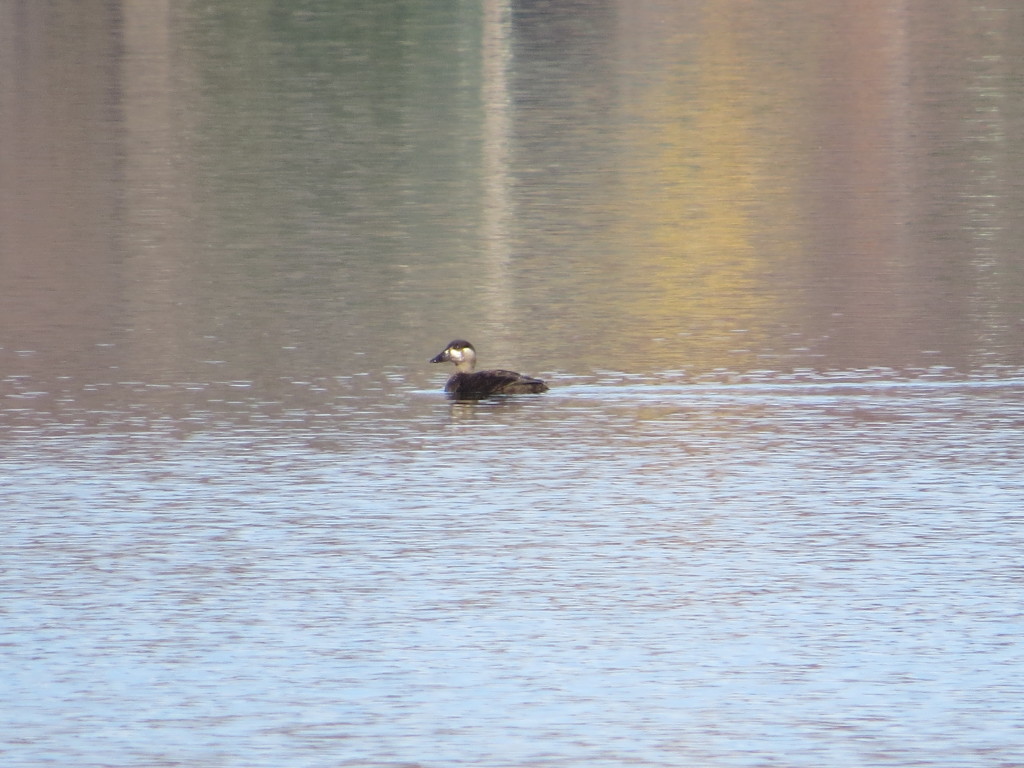 But even still. It’s cool. I mean, it’s a Scoter.
But even still. It’s cool. I mean, it’s a Scoter.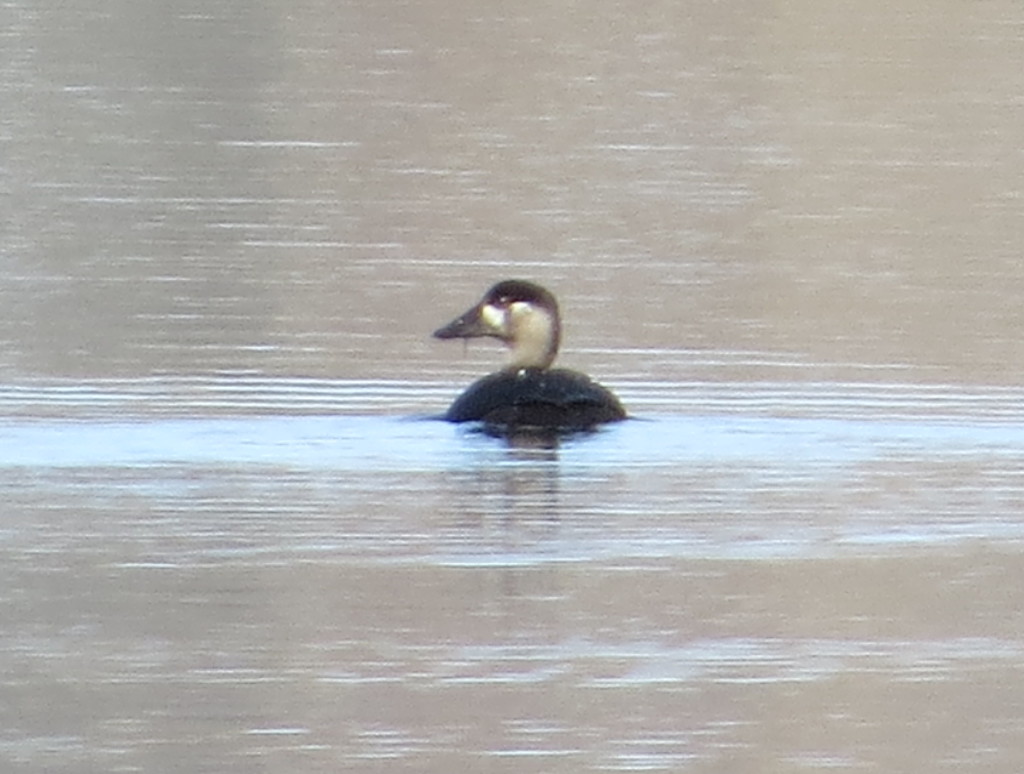
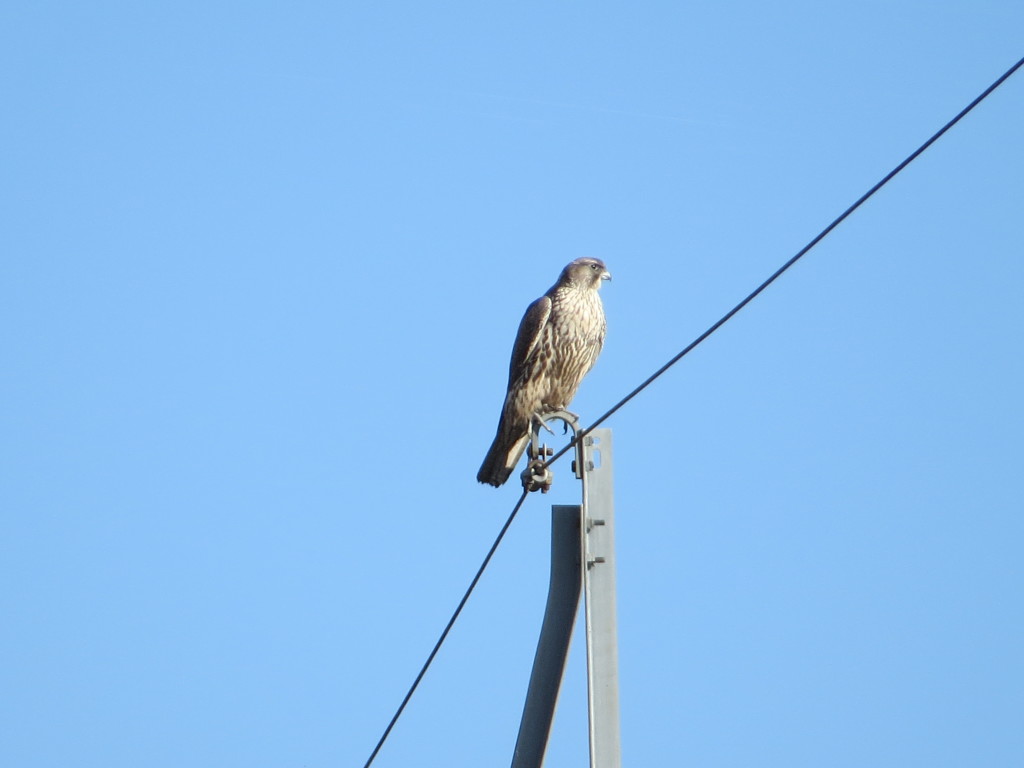
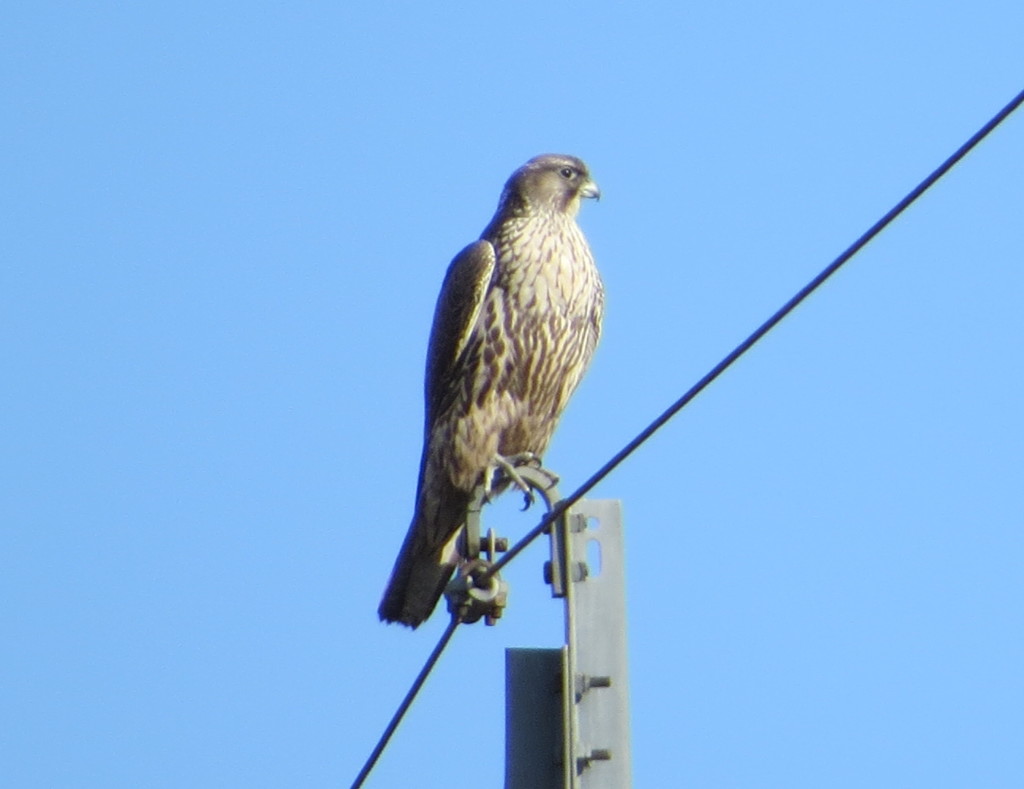
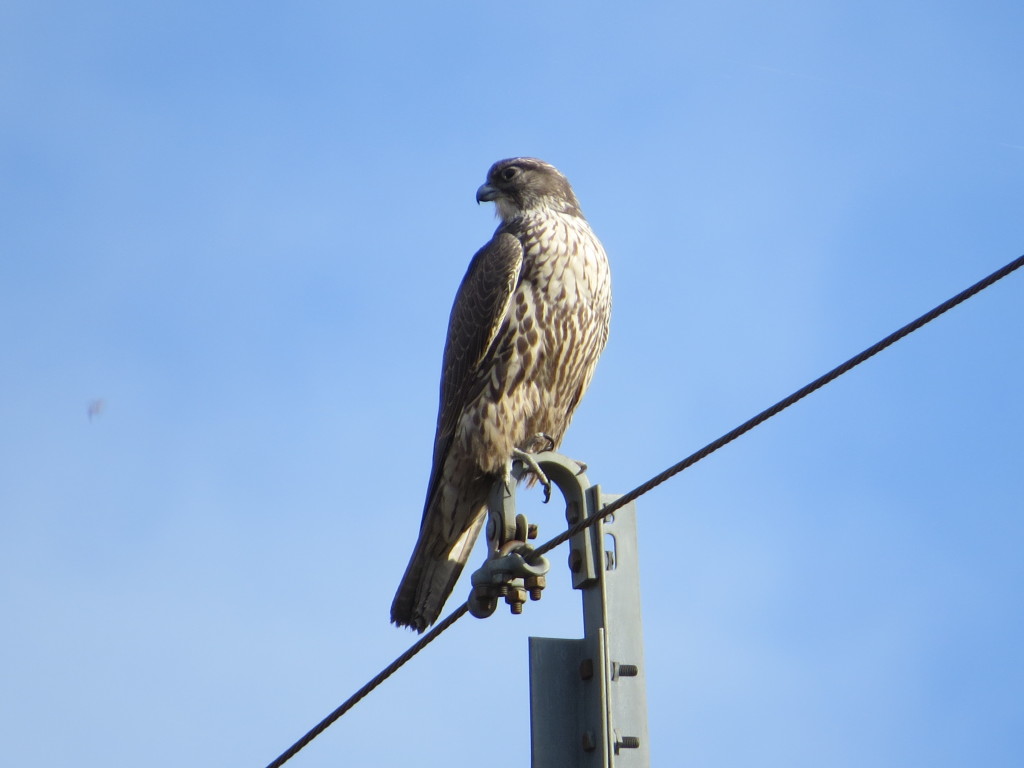
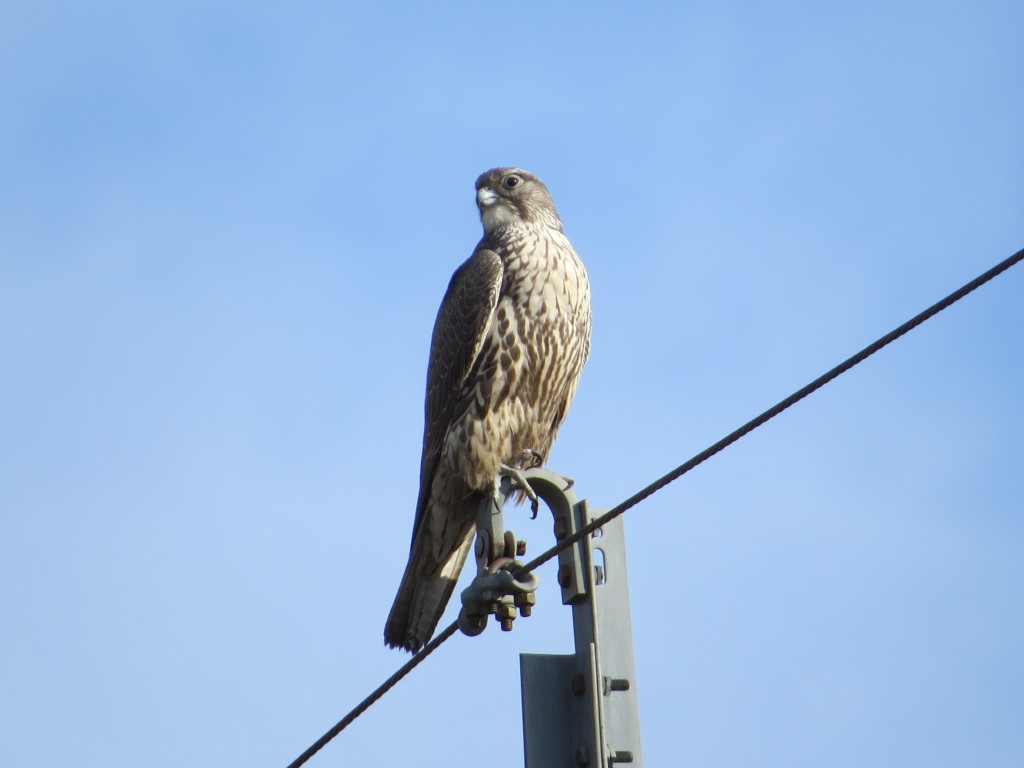
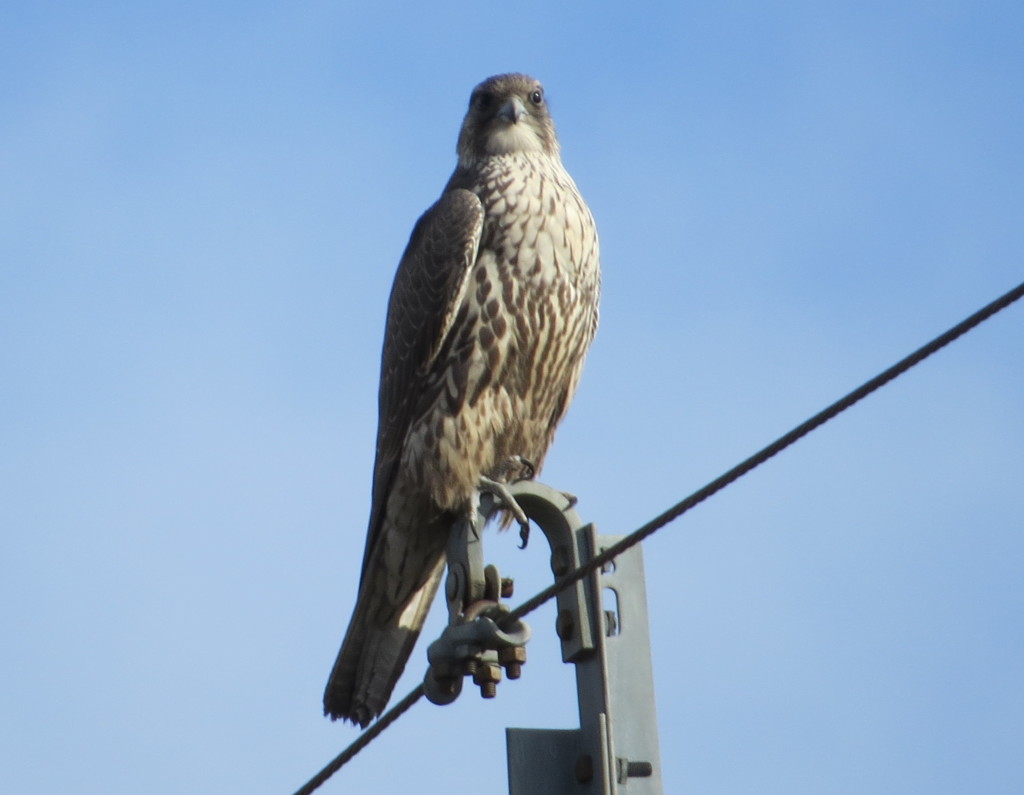 I still can’t believe I saw this bird; the adrenaline is still pumping. I thought it would be another 10 years at least before I’d get this arctic visitor on my Minnesota list (I got my lifer in WI last winter). Then I see a Gyrfalcon in my own county…and I never even knew it. I was caught off guard and completely unprepared for encountering such a rarity. It just goes to show that one can never study enough in this hobby and that even the most boring, familiar back roads can hold the monumental. So thanks, Bob, for chasing me down and pounding on my trunk.
I still can’t believe I saw this bird; the adrenaline is still pumping. I thought it would be another 10 years at least before I’d get this arctic visitor on my Minnesota list (I got my lifer in WI last winter). Then I see a Gyrfalcon in my own county…and I never even knew it. I was caught off guard and completely unprepared for encountering such a rarity. It just goes to show that one can never study enough in this hobby and that even the most boring, familiar back roads can hold the monumental. So thanks, Bob, for chasing me down and pounding on my trunk.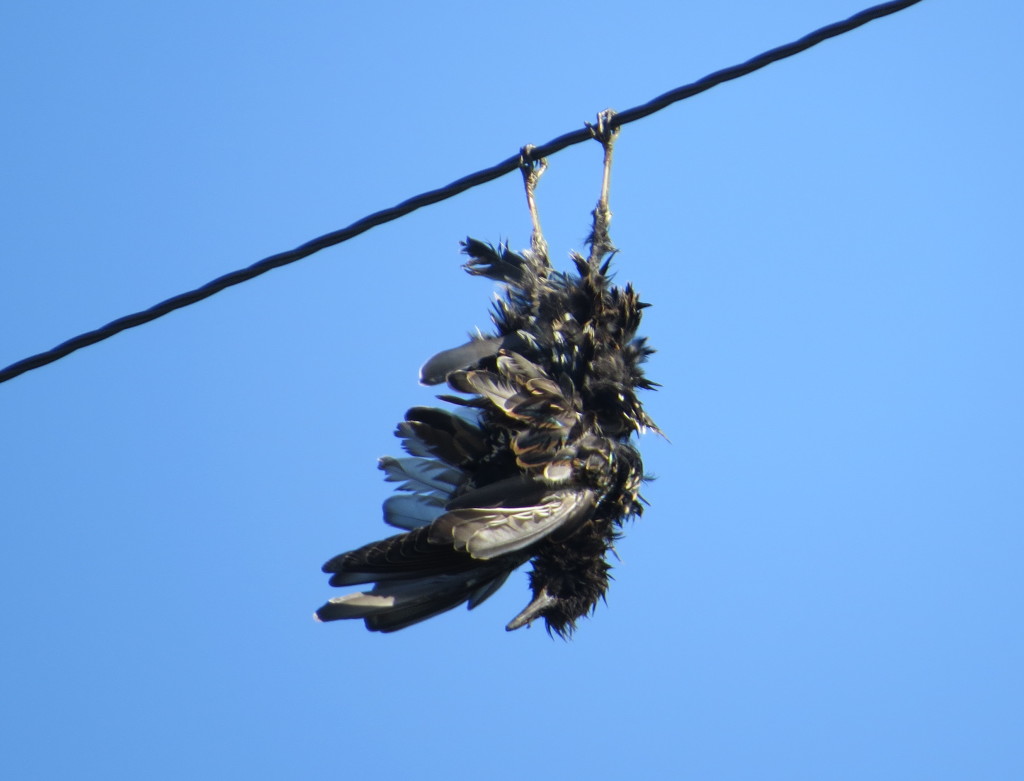
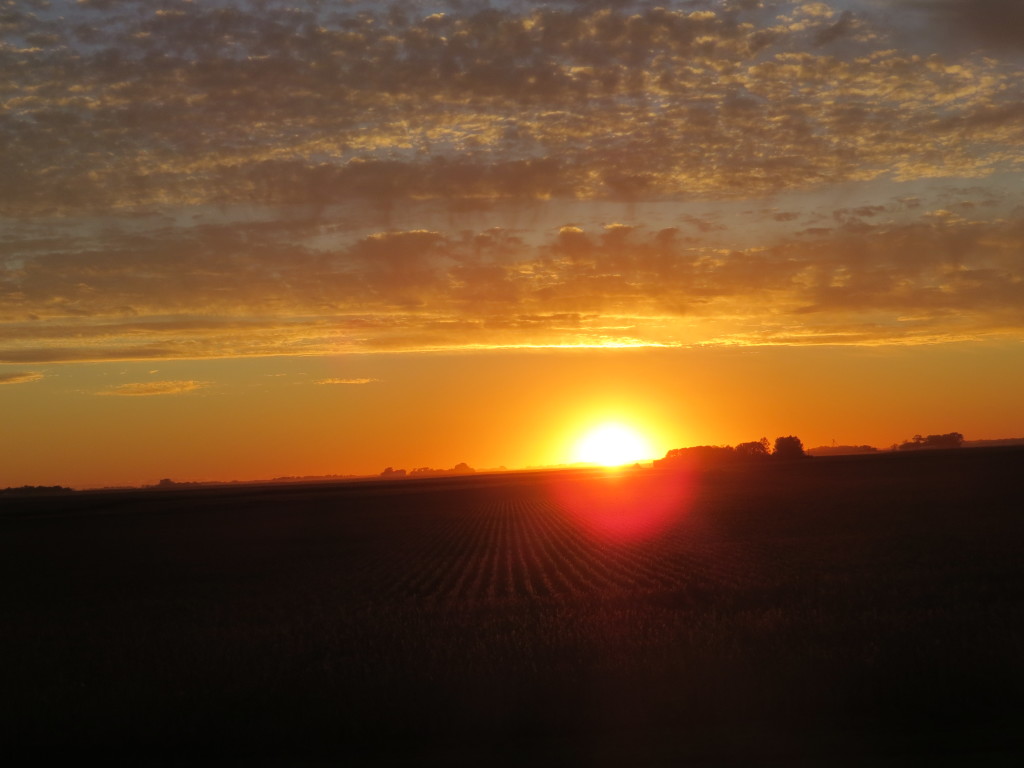
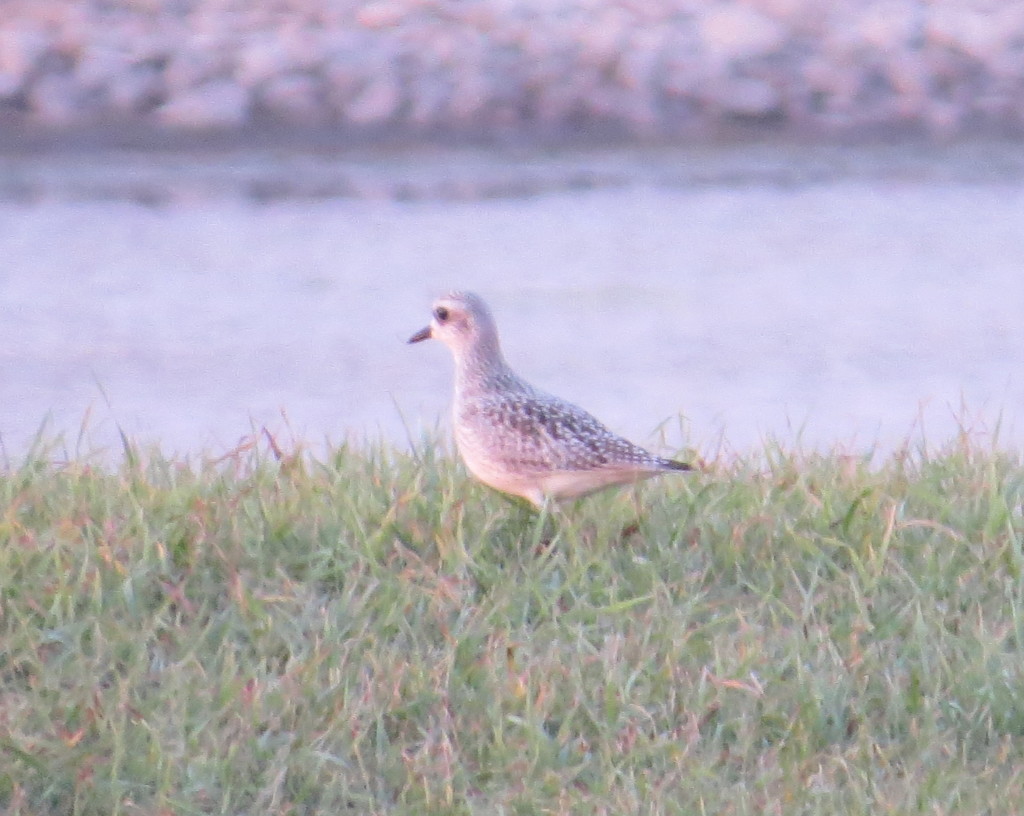
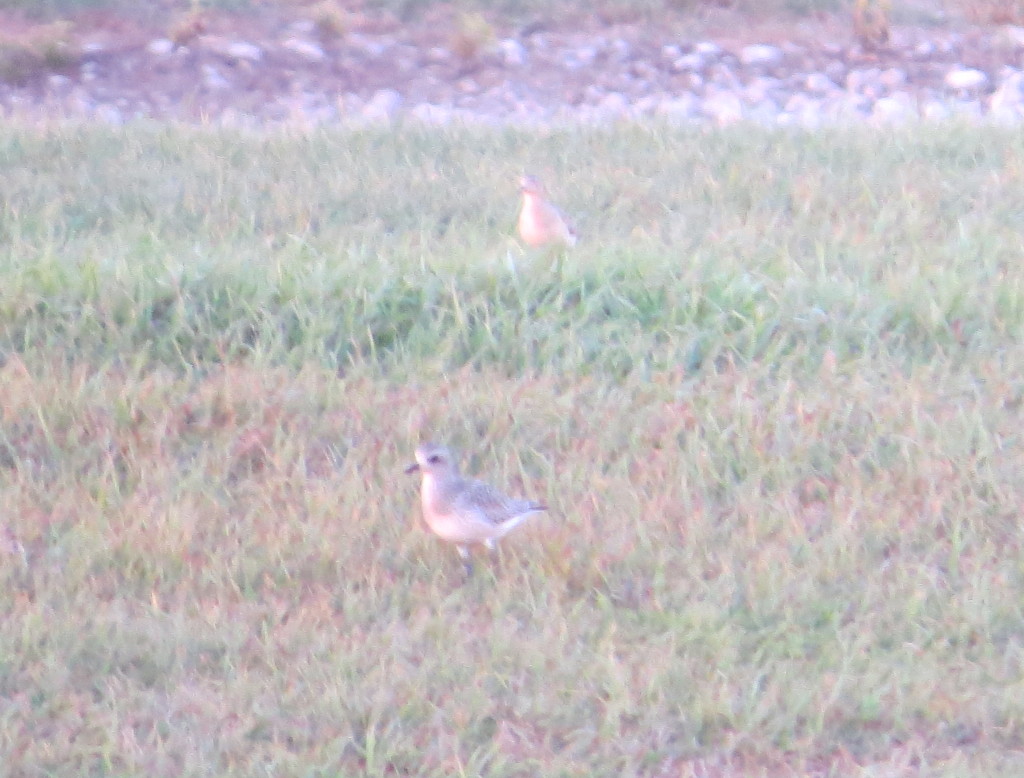 With the rapidly diminishing light, photos were getting harder to take and kids were getting colder. So we left the Plovers and snake holes and headed back to the van, occasionally looking behind us:
With the rapidly diminishing light, photos were getting harder to take and kids were getting colder. So we left the Plovers and snake holes and headed back to the van, occasionally looking behind us: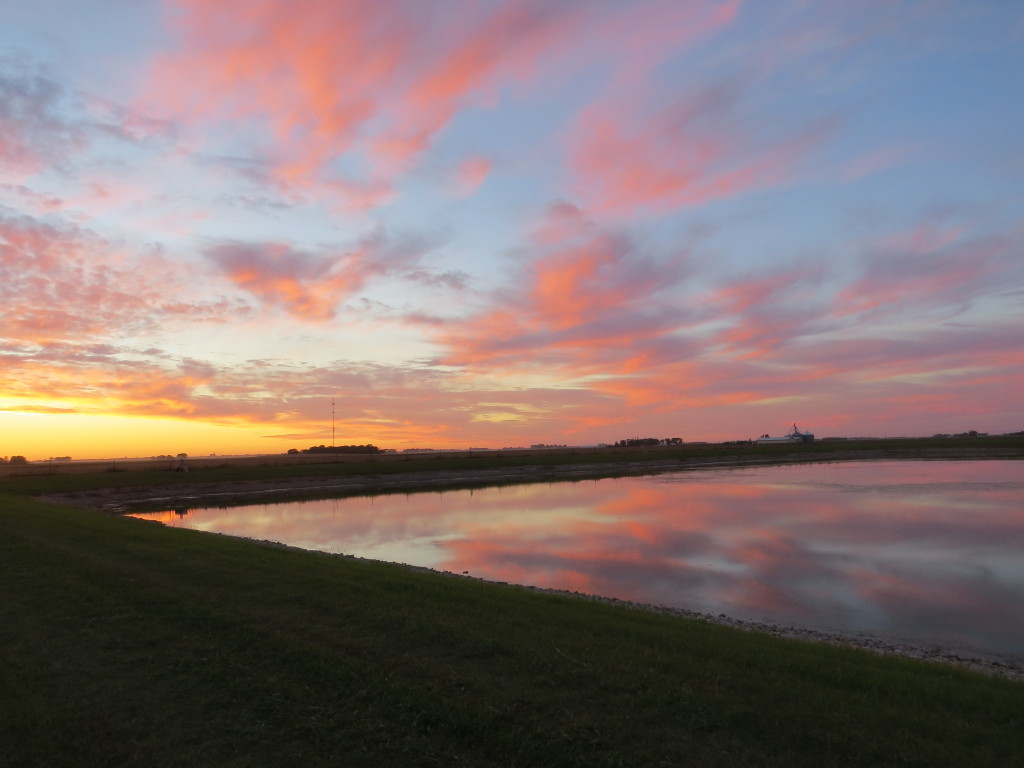 Time moves way too fast. But it is that quality of time that causes us to take note of the significance of certain things: 300 birds in a year, a sunset at the end of a day, or a rare, non-posed moment of affection between a brother and a sister.
Time moves way too fast. But it is that quality of time that causes us to take note of the significance of certain things: 300 birds in a year, a sunset at the end of a day, or a rare, non-posed moment of affection between a brother and a sister.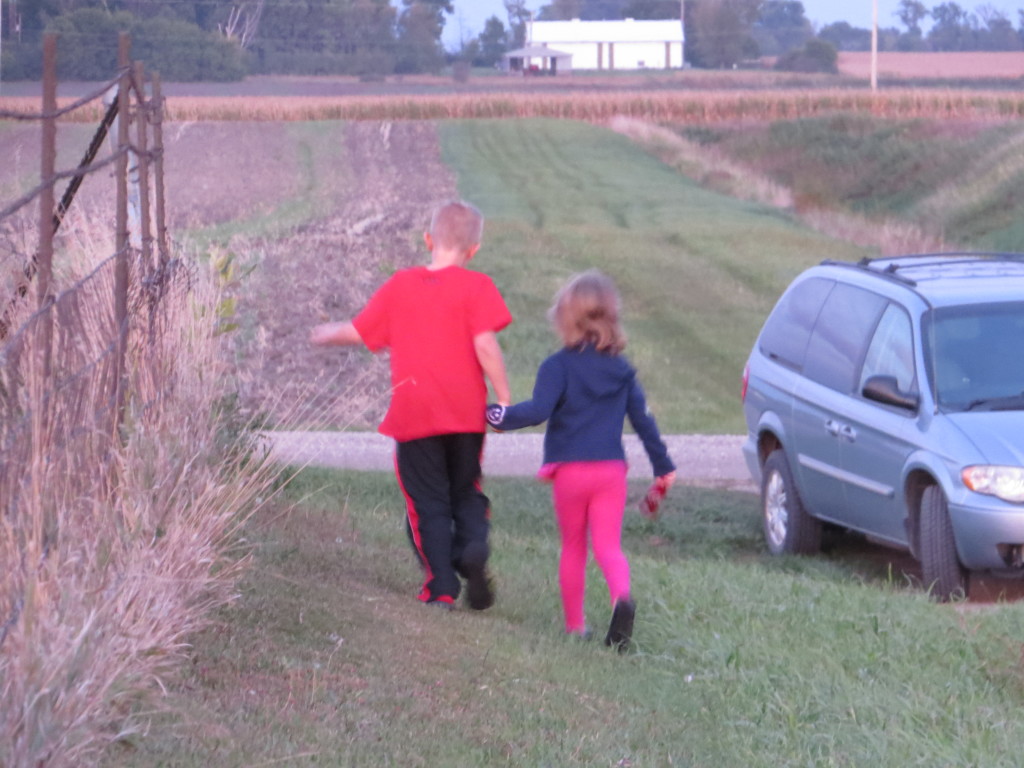 So what will the rest of this year hold? Who knows, but the adventures will continue–with or without napkins, with or without birds, and with or without two kids getting along.
So what will the rest of this year hold? Who knows, but the adventures will continue–with or without napkins, with or without birds, and with or without two kids getting along.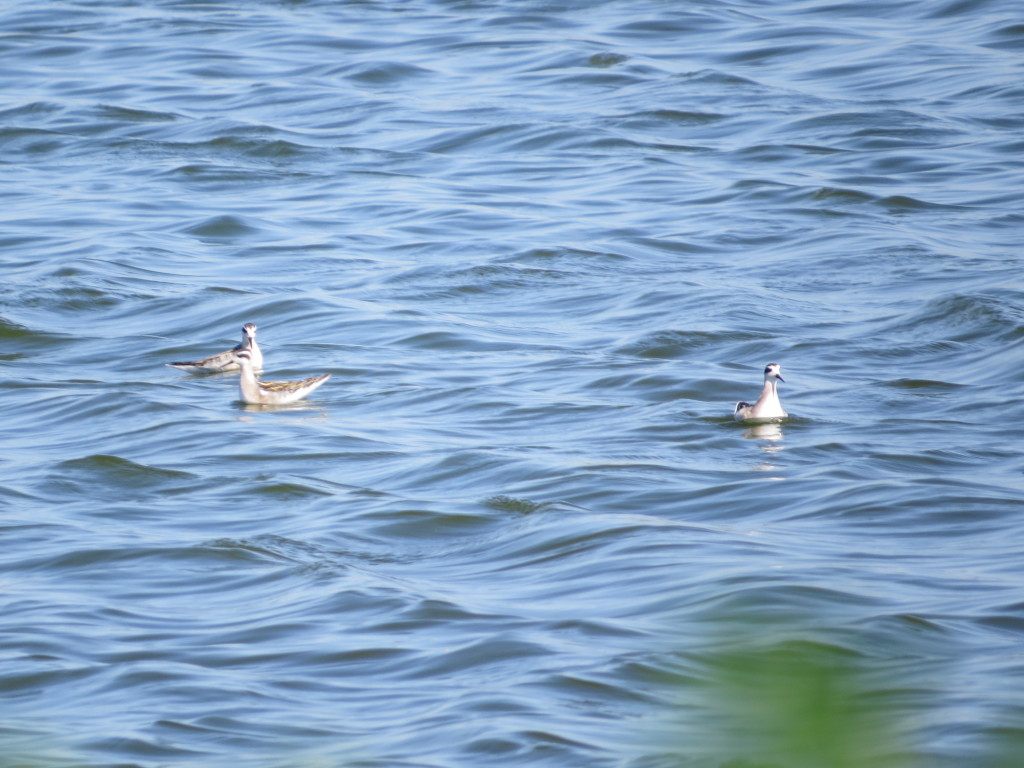
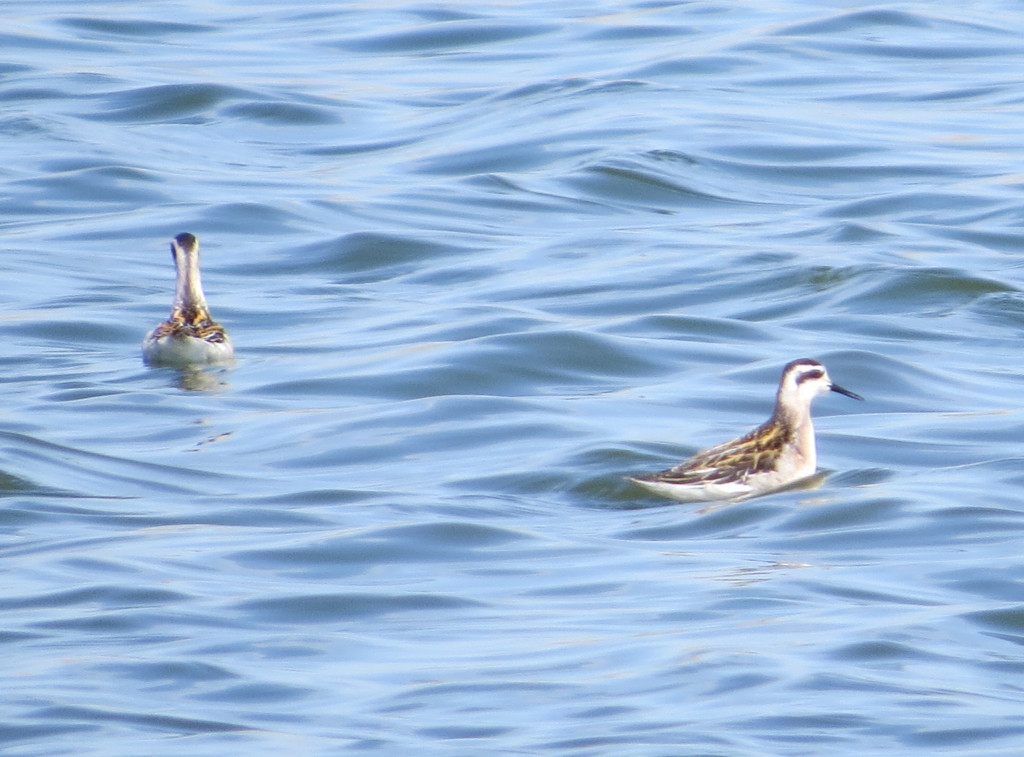
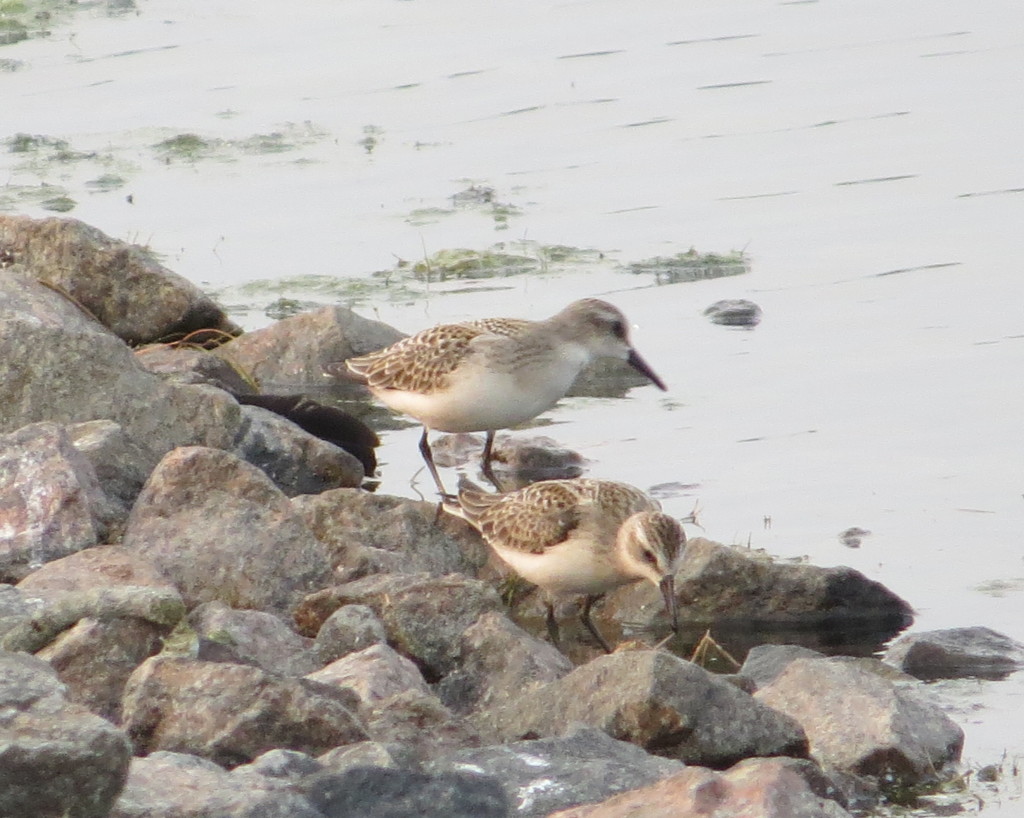
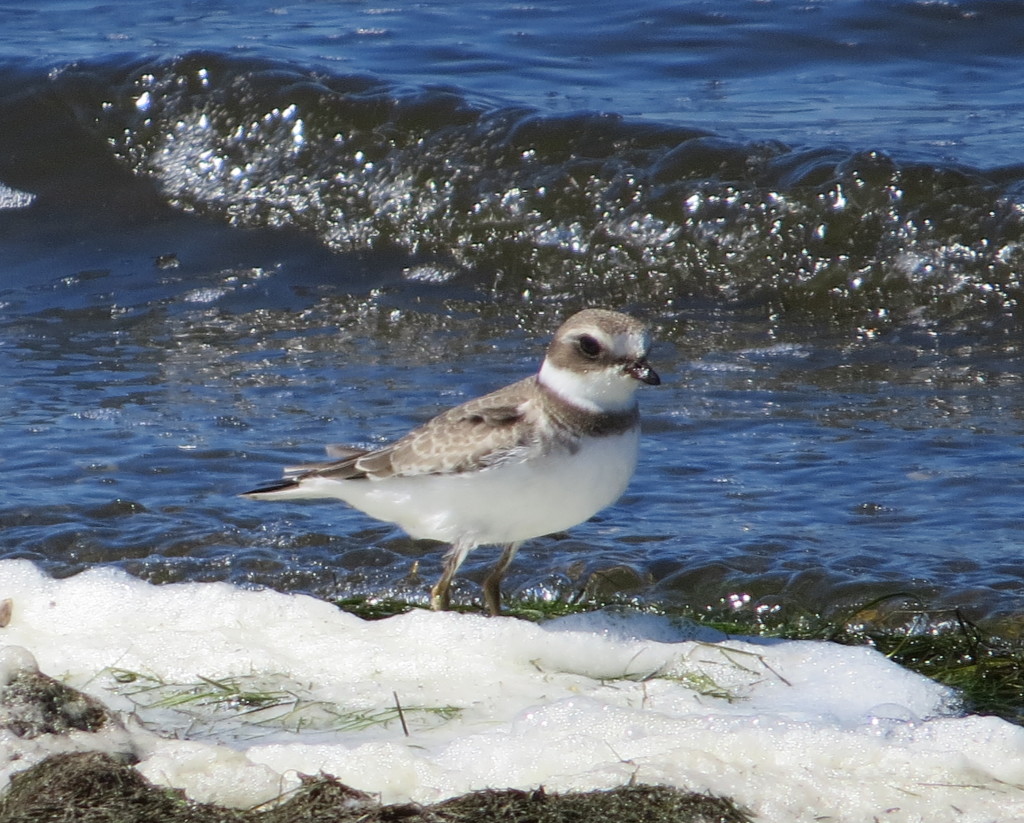
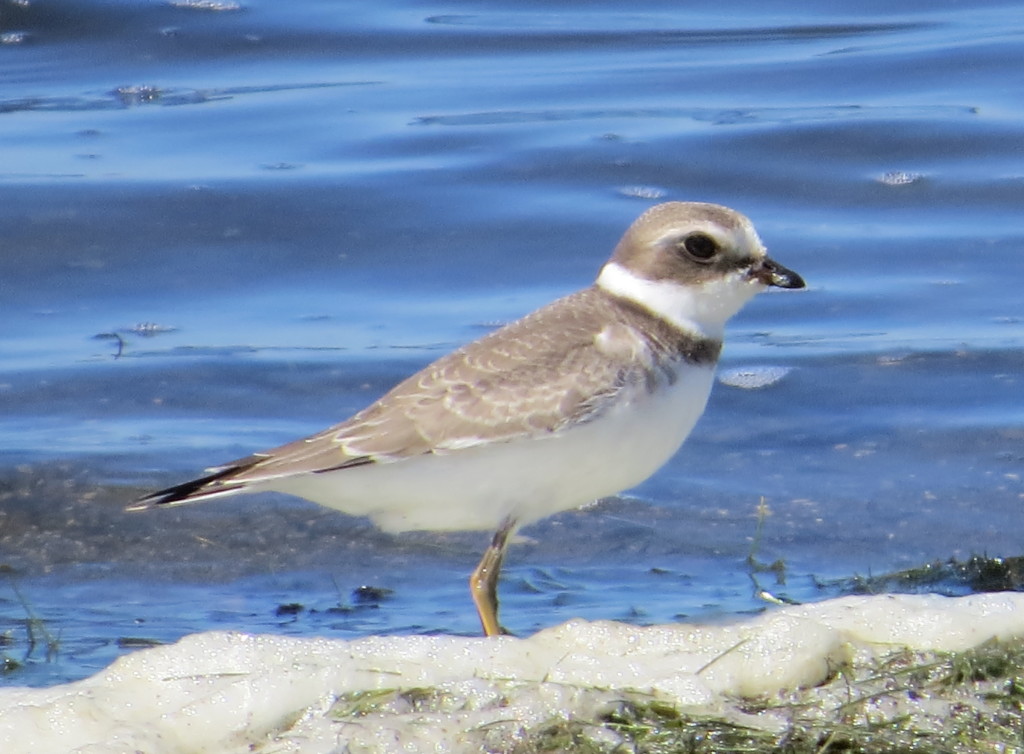
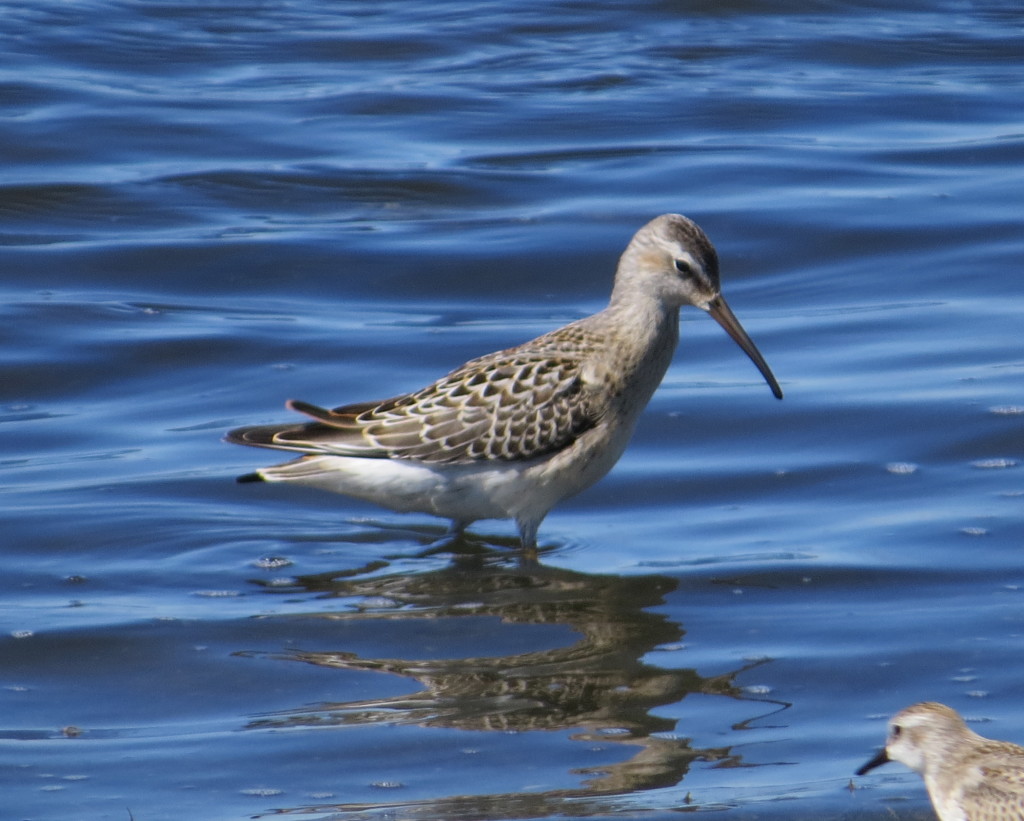
 The flooded drain tile intake that created this spot was only about two acres in size. When there is no other habitat around, that is all you need. At first, there was nothing but Killdeer and the odd Lesser Yellowlegs or two, harbingers of good things to come.
The flooded drain tile intake that created this spot was only about two acres in size. When there is no other habitat around, that is all you need. At first, there was nothing but Killdeer and the odd Lesser Yellowlegs or two, harbingers of good things to come.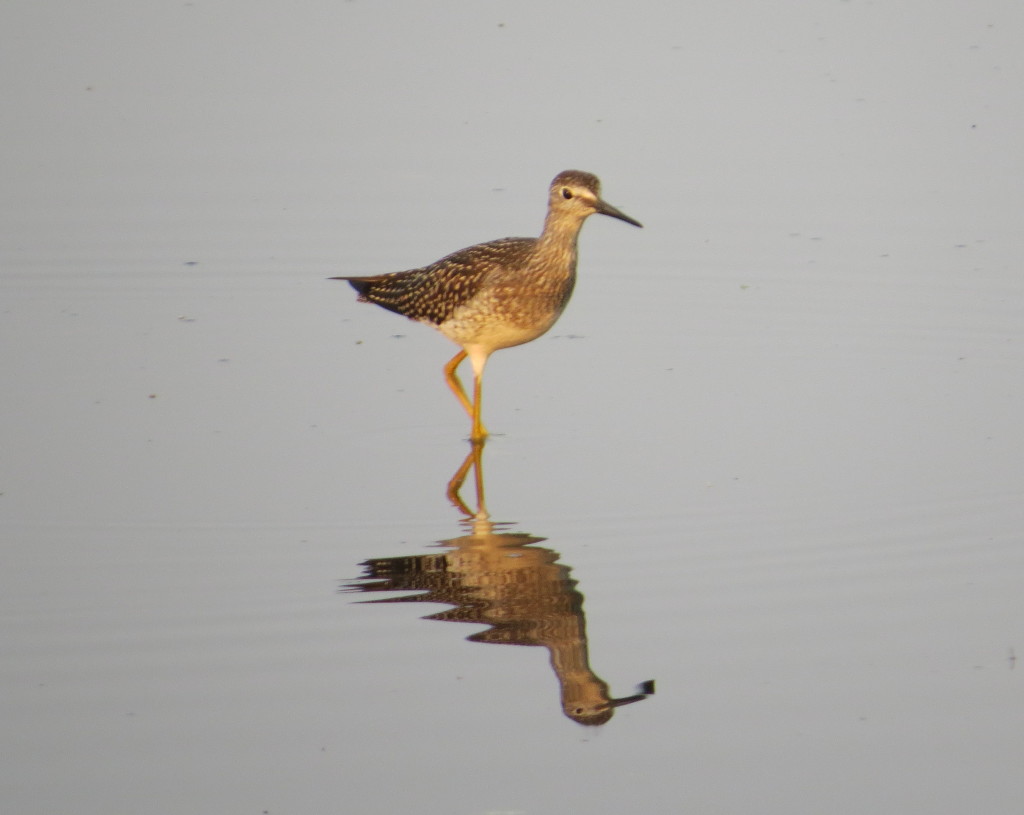 So this is the story of my accidental patch. Having it so close to home gave me the opportunity to check it multiple times a day, day after day. Before I knew it, I was becoming a devoted patch birder whose persistence started to pay dividends in things like a pair of dapper Baird’s Sandpipers.
So this is the story of my accidental patch. Having it so close to home gave me the opportunity to check it multiple times a day, day after day. Before I knew it, I was becoming a devoted patch birder whose persistence started to pay dividends in things like a pair of dapper Baird’s Sandpipers.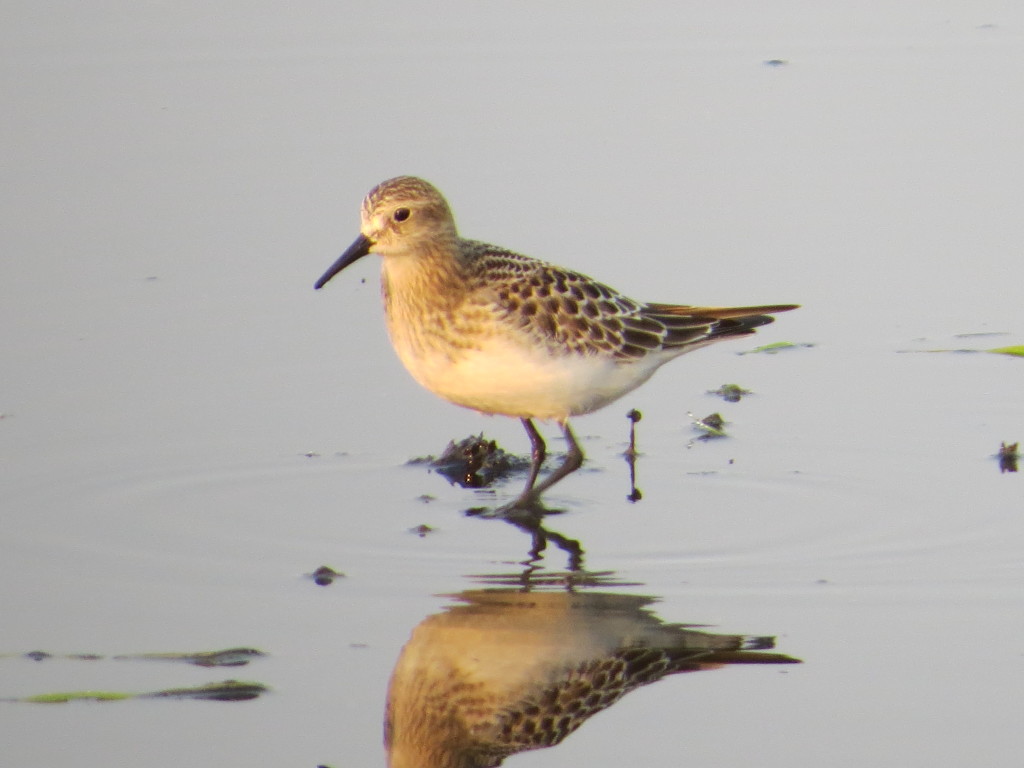
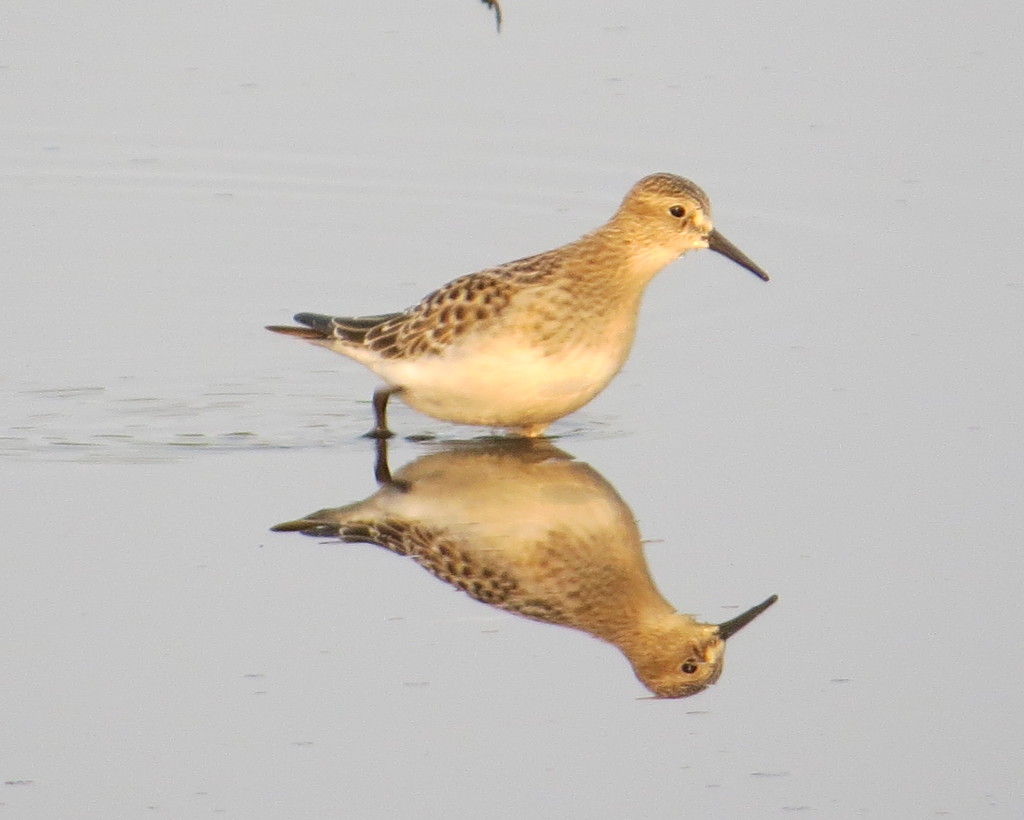
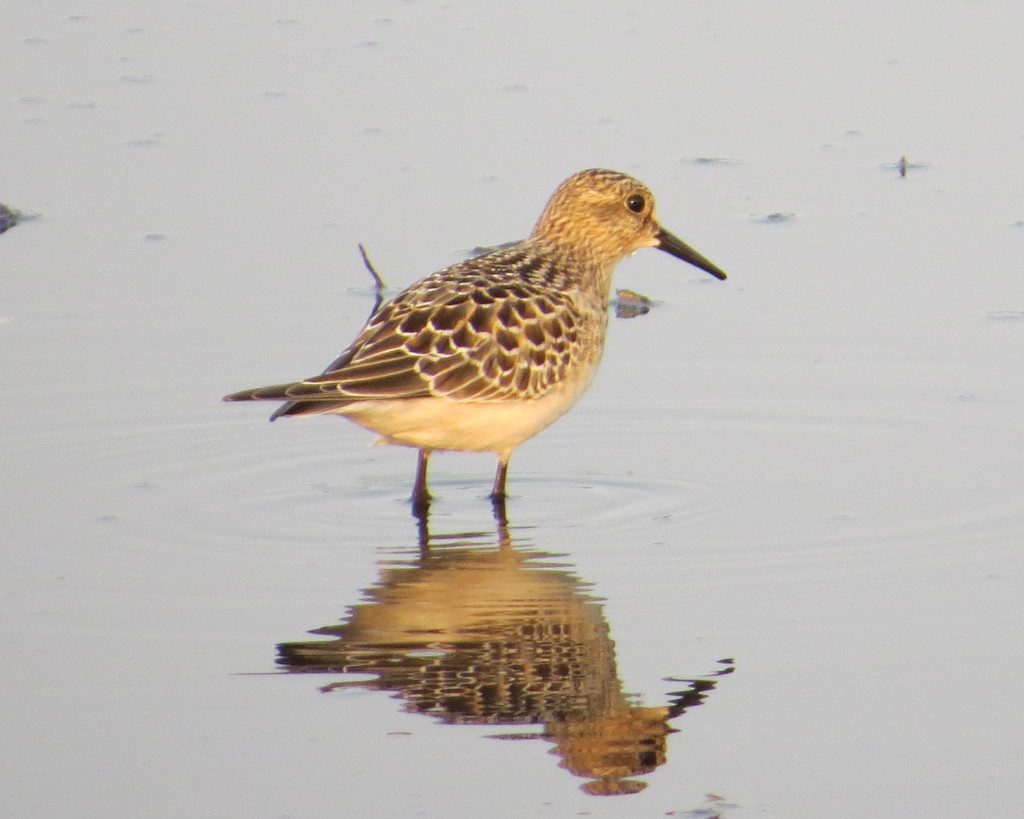
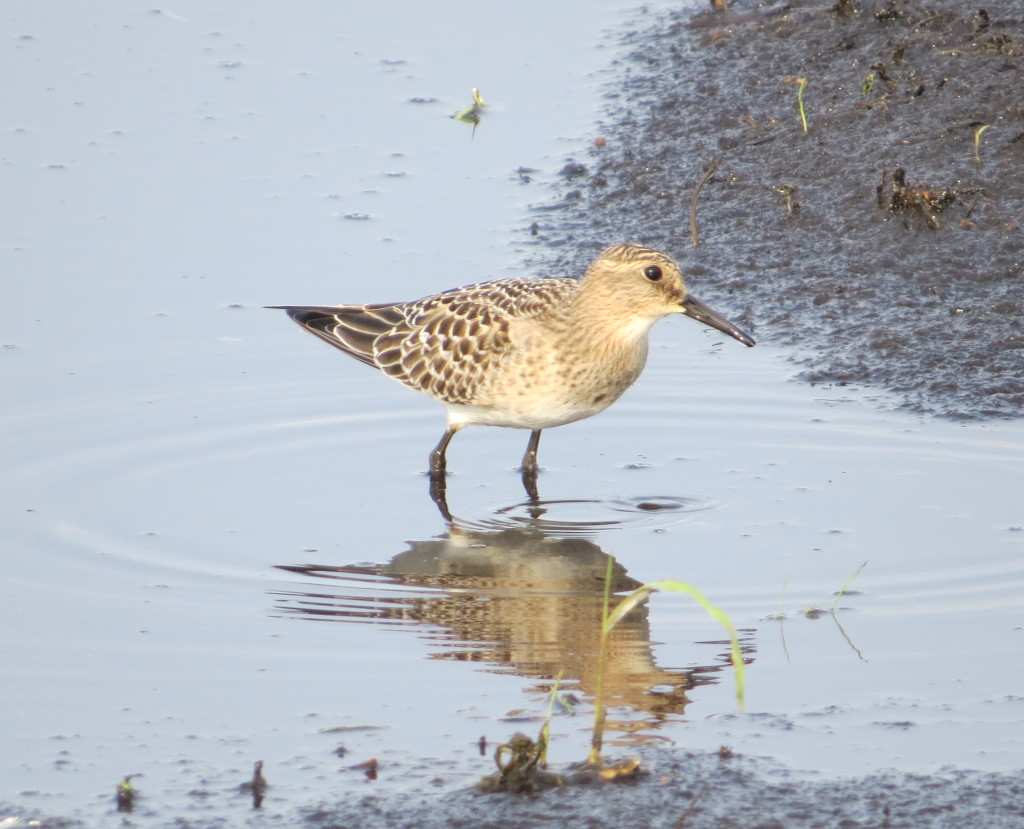 One of the benefits of a having a patch is that, in addition to looking for new birds that have joined the party, you can also keep tabs on the regulars, like the two Stilt Sandpipers that were there day in and day out.
One of the benefits of a having a patch is that, in addition to looking for new birds that have joined the party, you can also keep tabs on the regulars, like the two Stilt Sandpipers that were there day in and day out.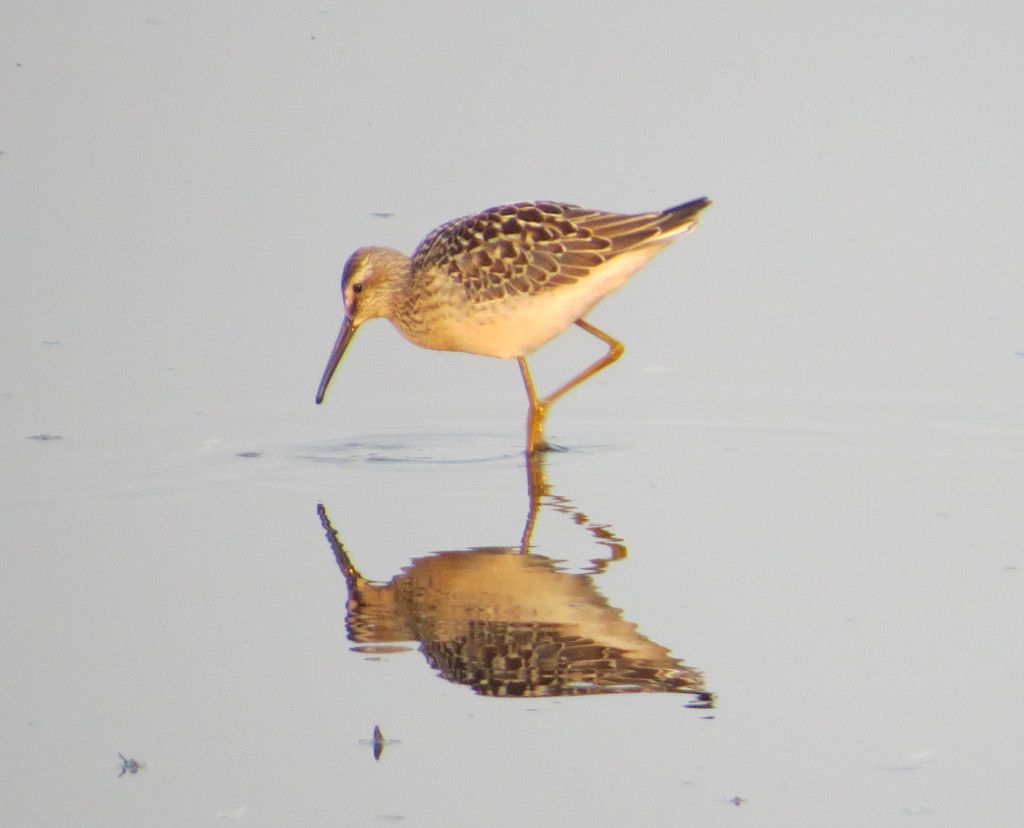
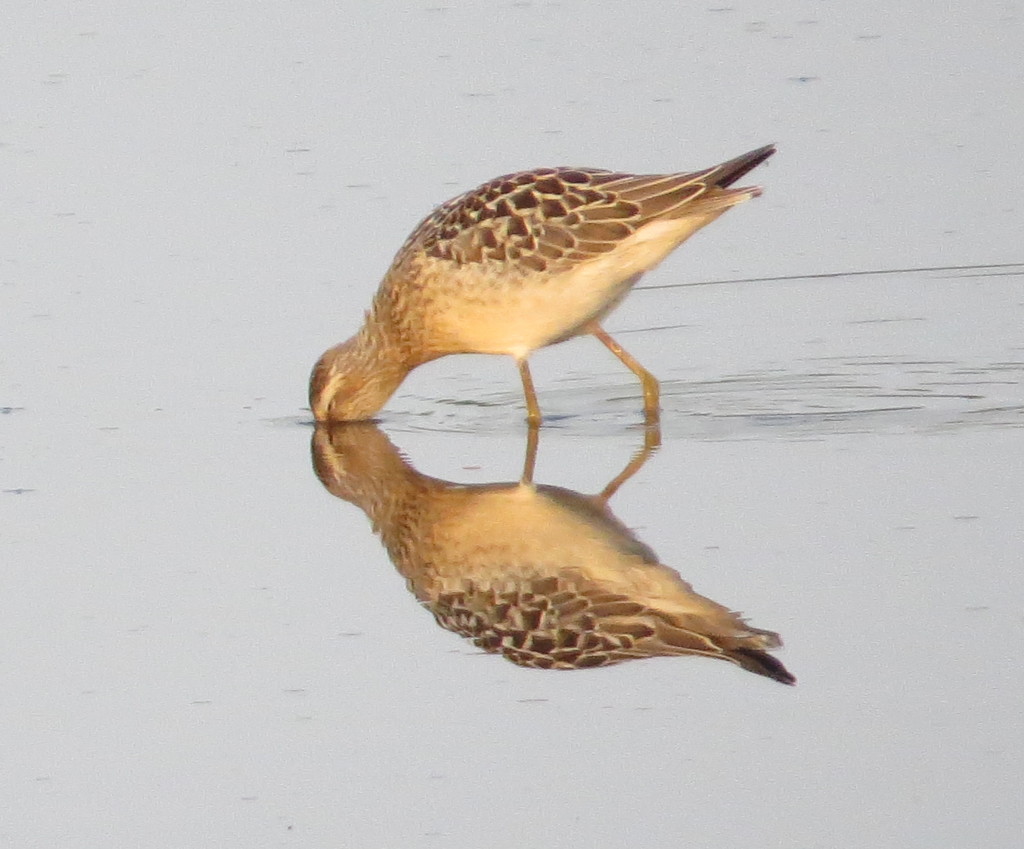
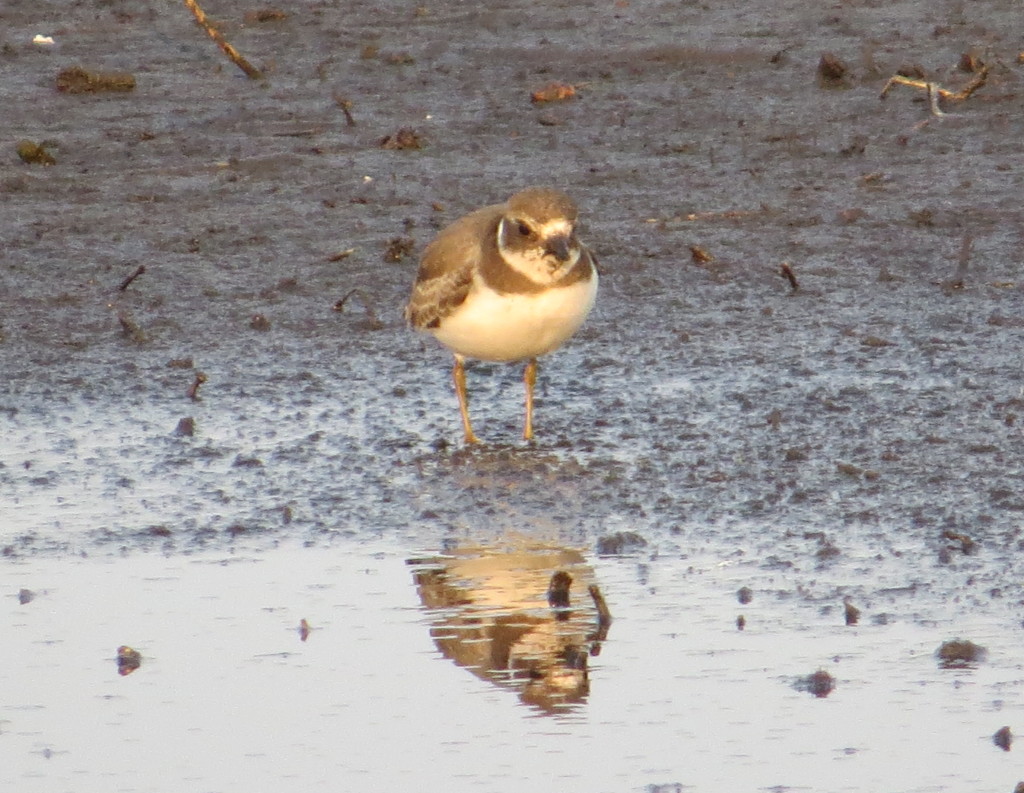
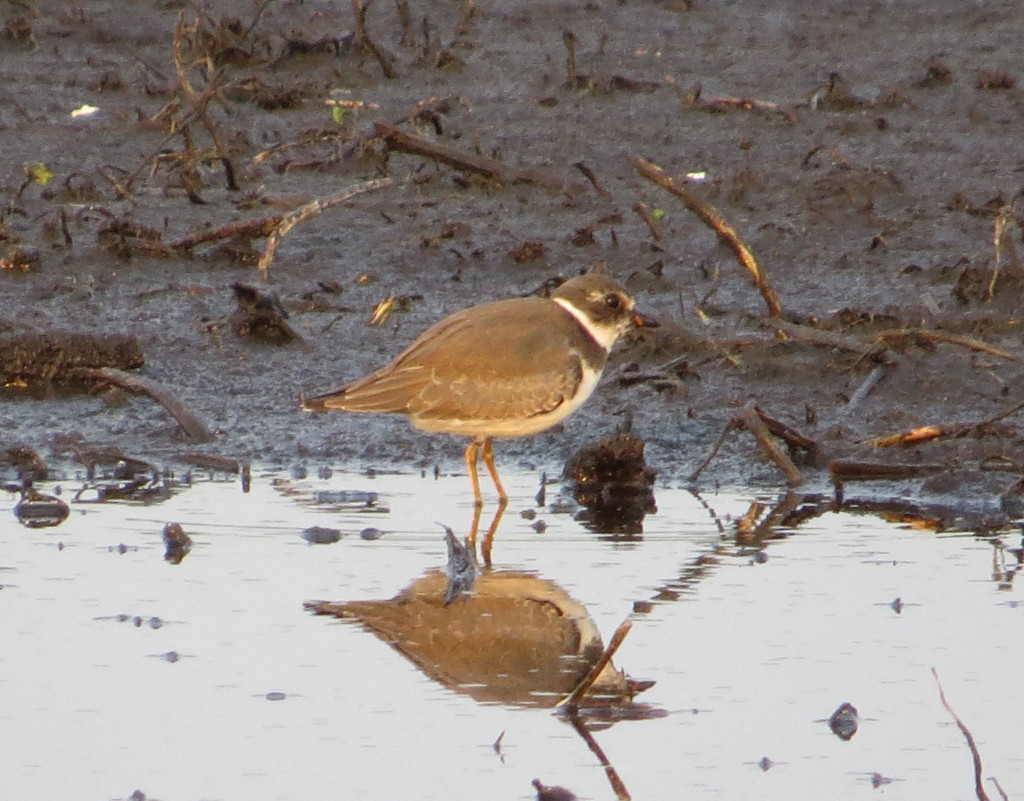
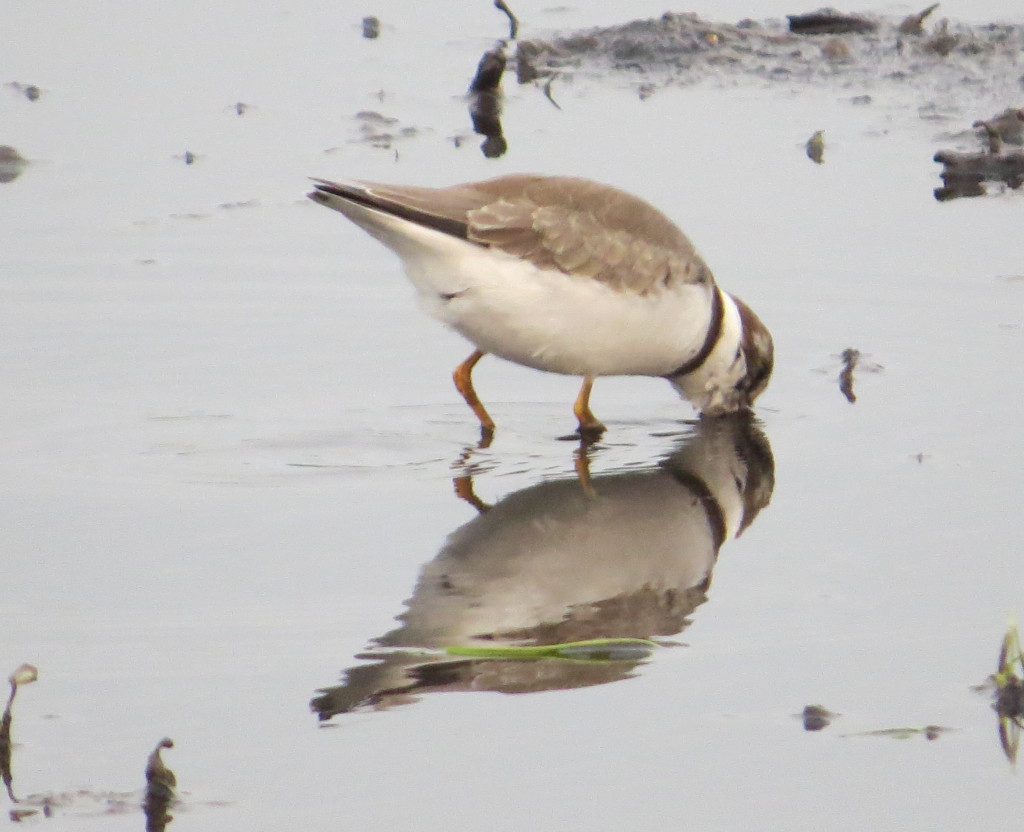 This patch I found turned out to be a great workshop on shorebird identification for myself. I had these birds close (30 feet or less) and in great light when I visited in the morning. I could clearly see subtle differences in coloration, differences in movements and behaviors, and relative size comparisons to other shorebirds. Even the ubiquitous Killdeer would sometimes do something interesting.
This patch I found turned out to be a great workshop on shorebird identification for myself. I had these birds close (30 feet or less) and in great light when I visited in the morning. I could clearly see subtle differences in coloration, differences in movements and behaviors, and relative size comparisons to other shorebirds. Even the ubiquitous Killdeer would sometimes do something interesting.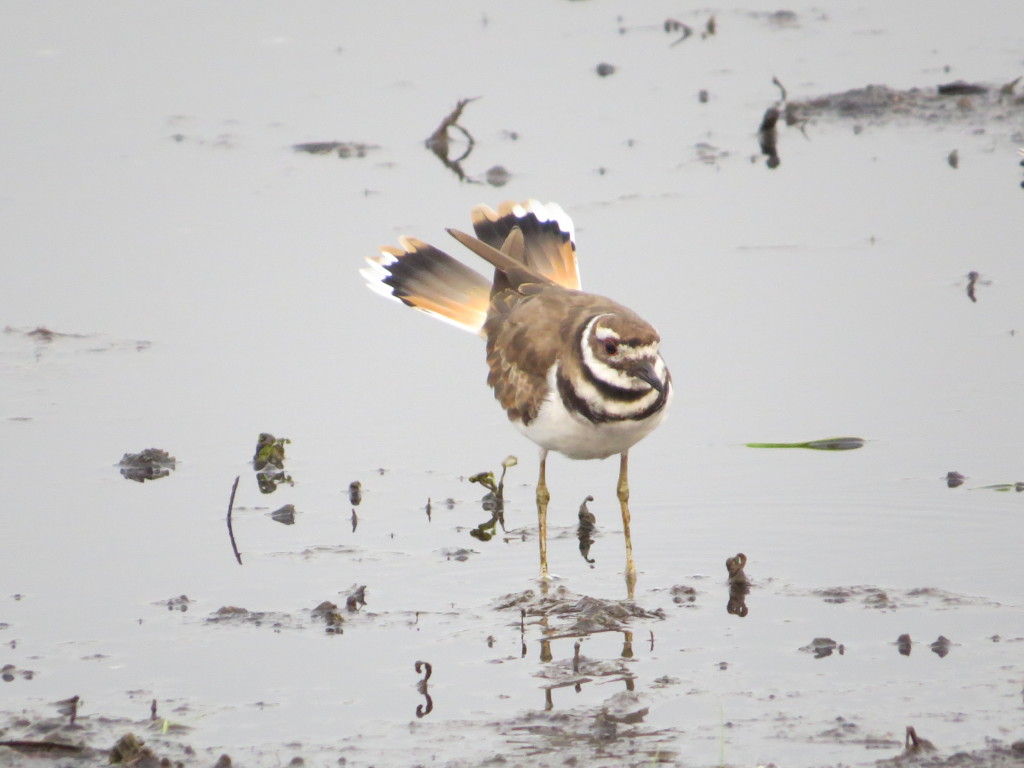
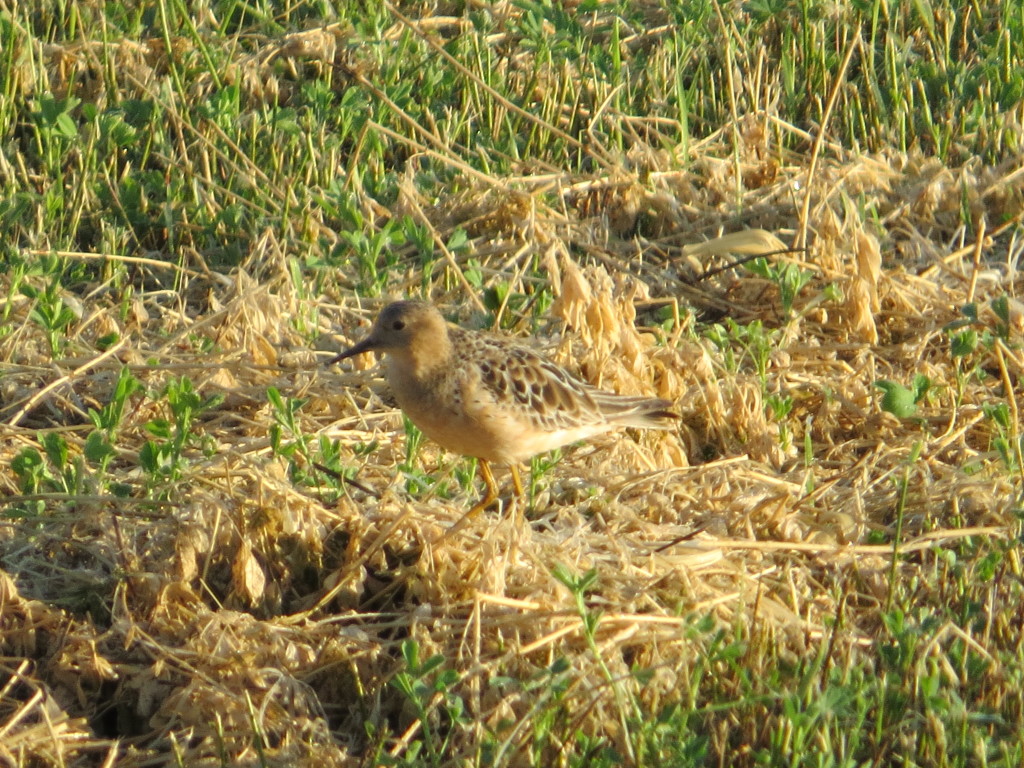
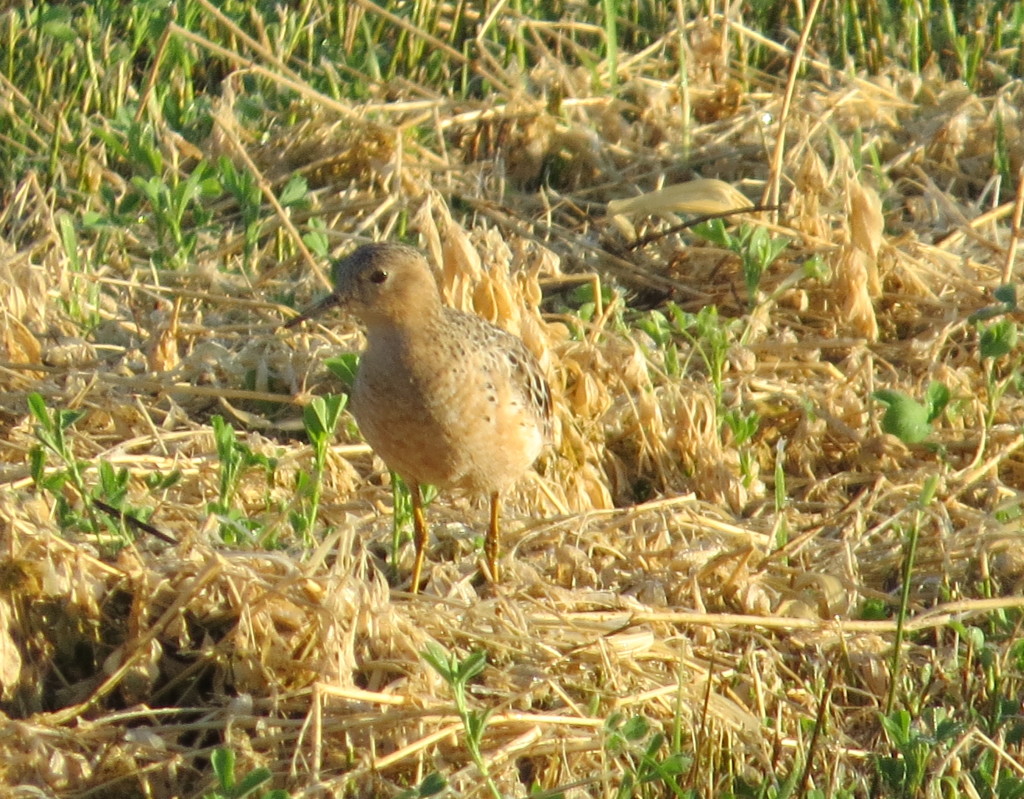 This ripped bird was a lifer for Dad.
This ripped bird was a lifer for Dad.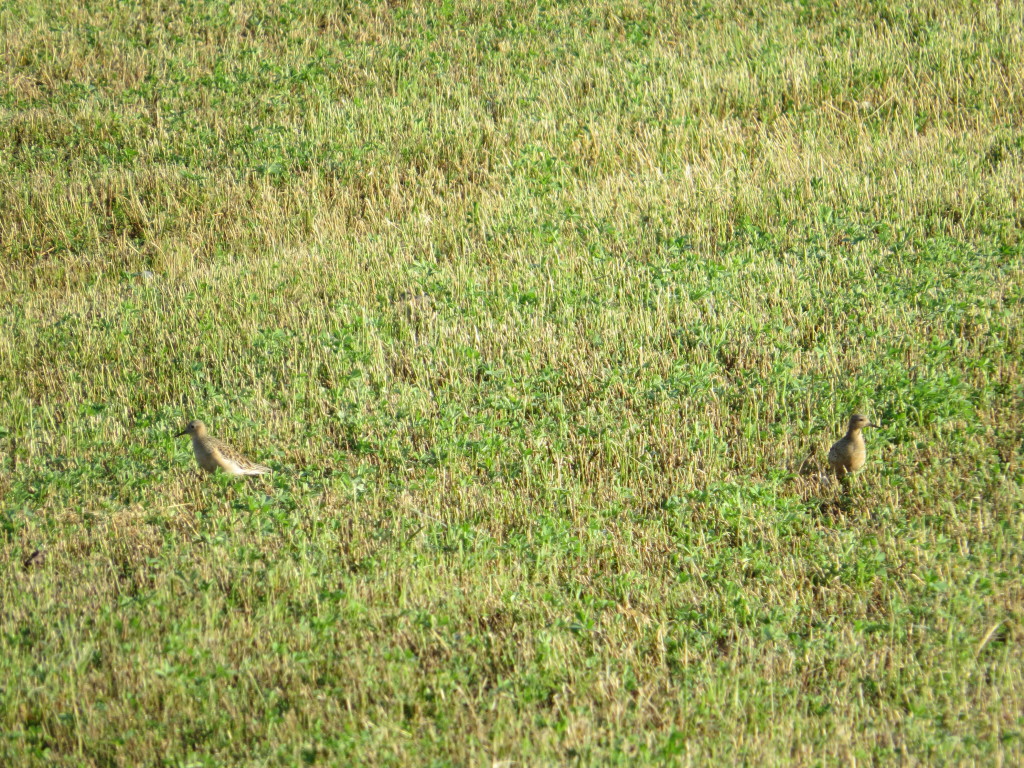
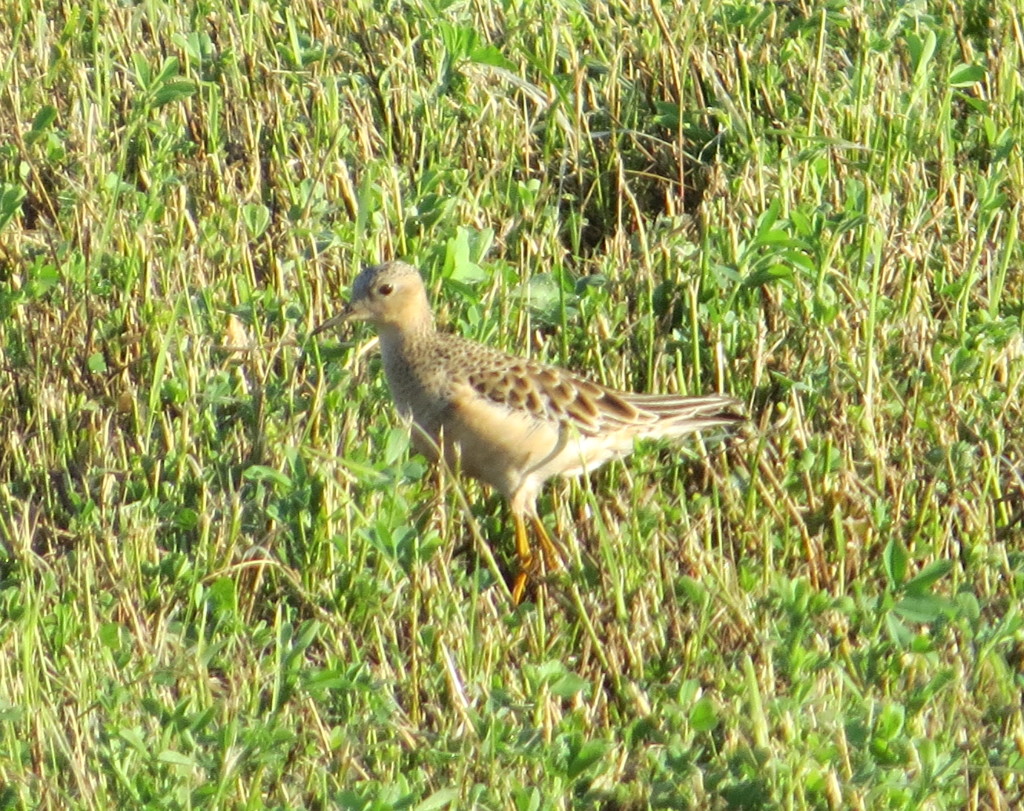 I did not take this photo-op for granted. These birds are usually only found with the aid of scopes. Having them 100 feet out the car window is about as good as it gets.
I did not take this photo-op for granted. These birds are usually only found with the aid of scopes. Having them 100 feet out the car window is about as good as it gets.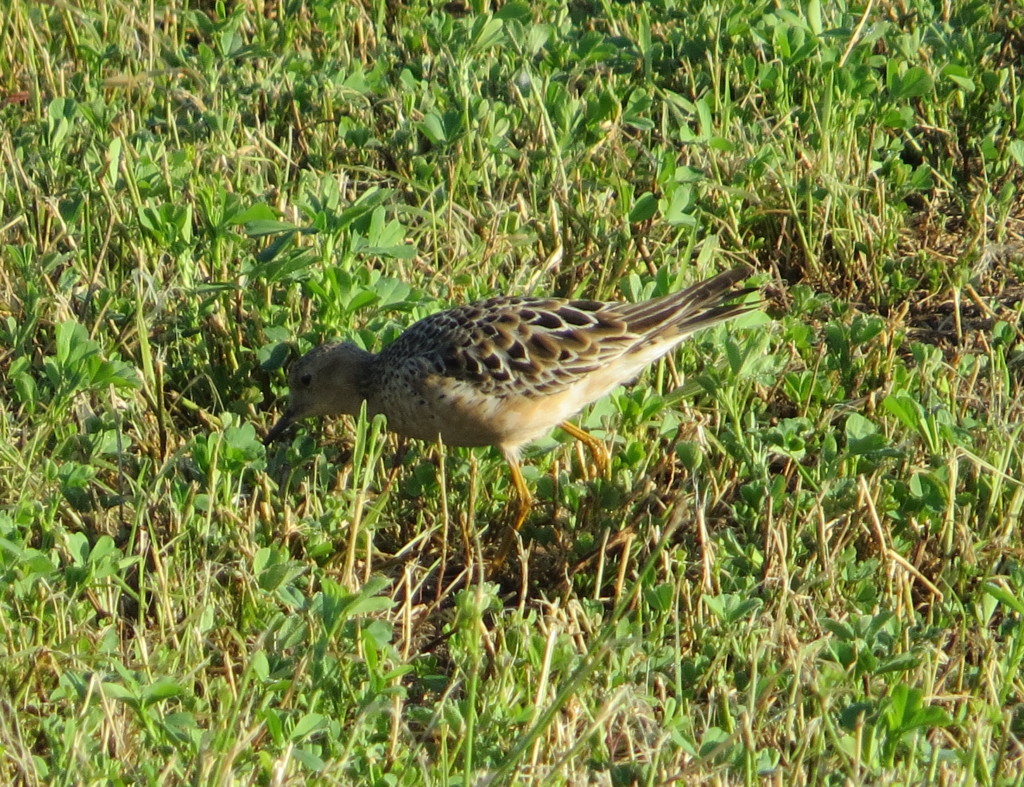
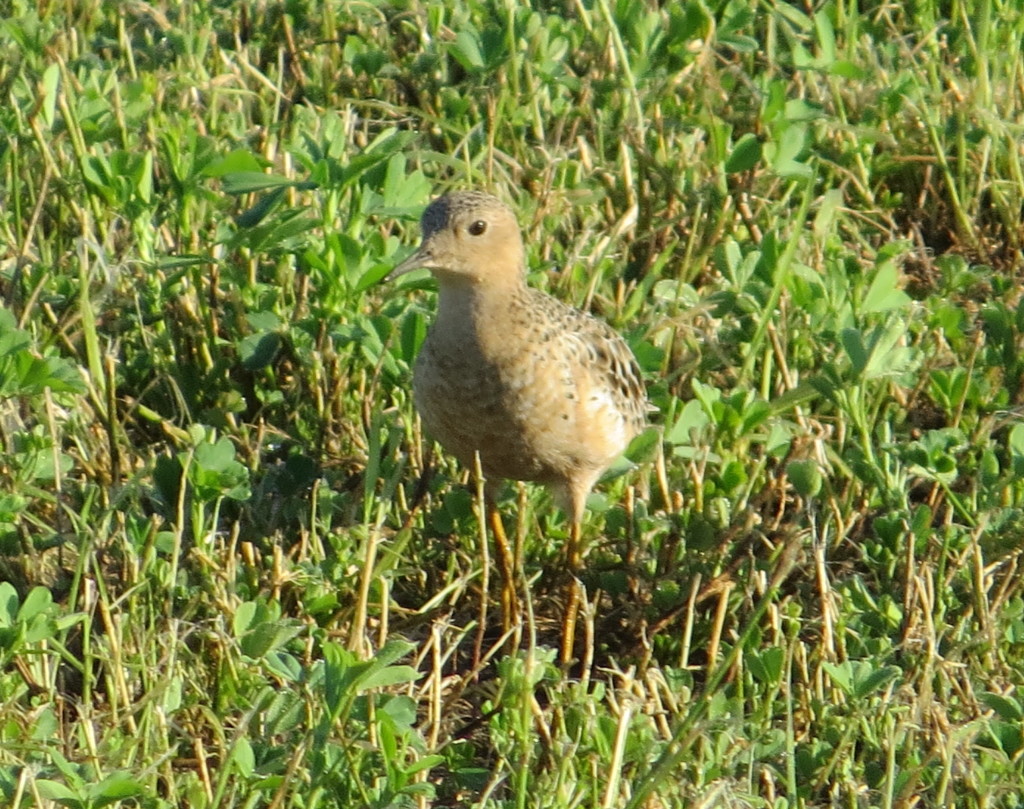
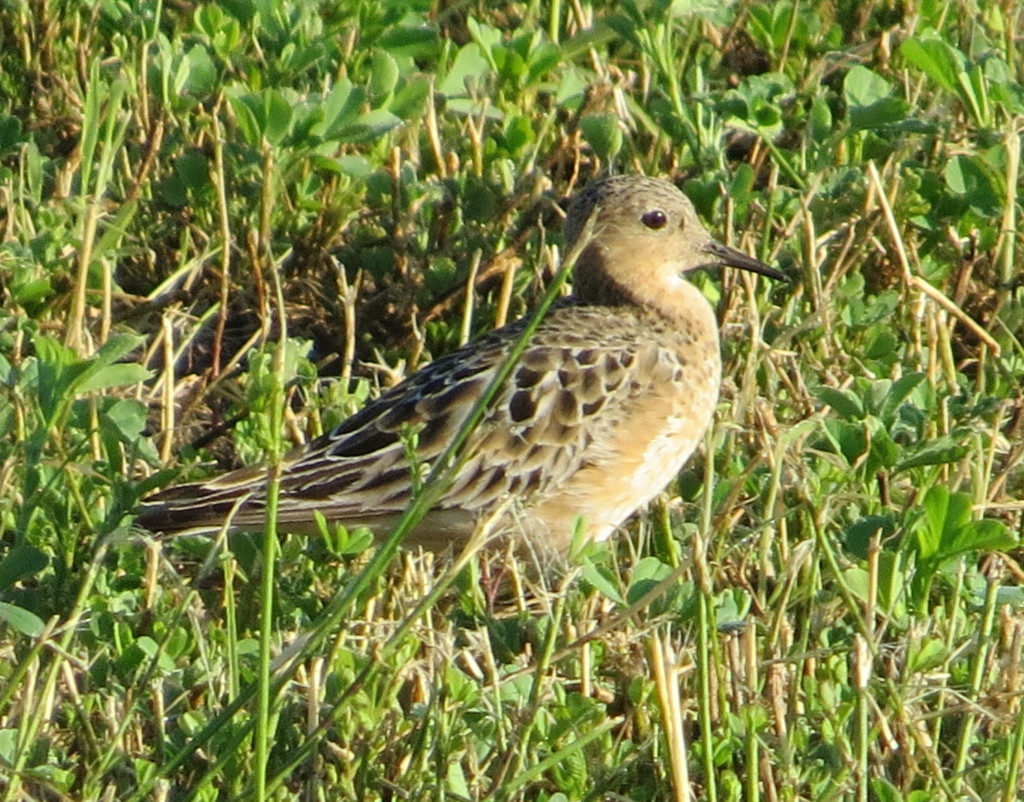
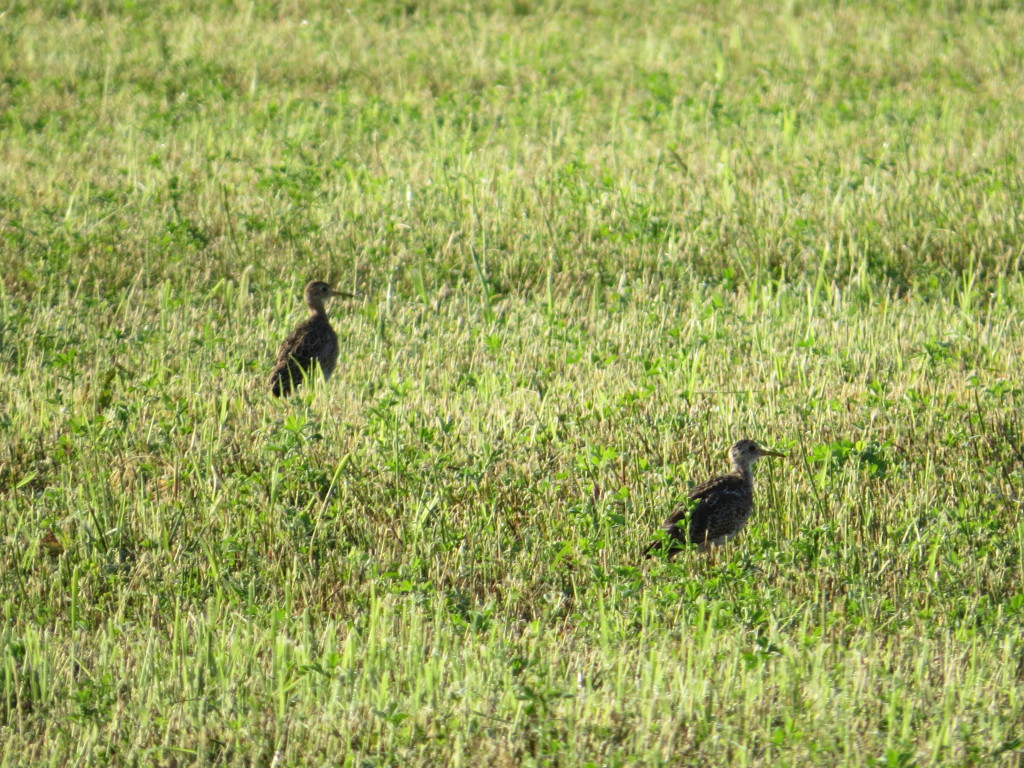 Dad’s not sure if this is a lifer or not. No doubt about its existence on his list now though.
Dad’s not sure if this is a lifer or not. No doubt about its existence on his list now though.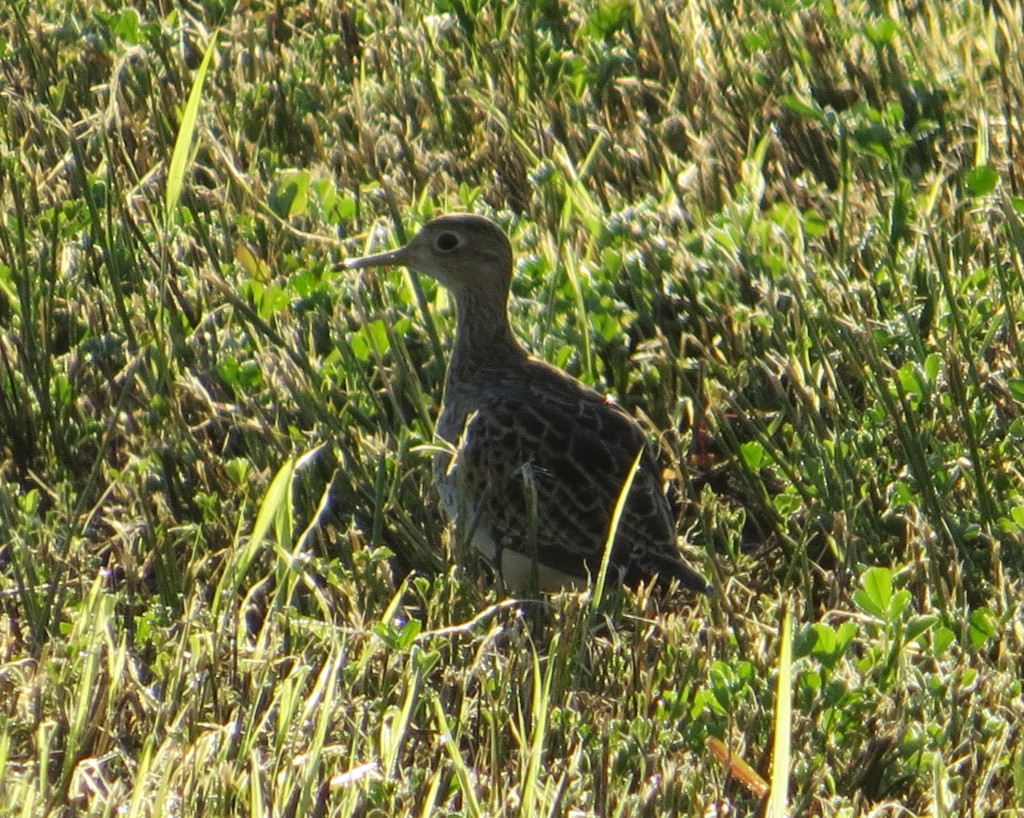
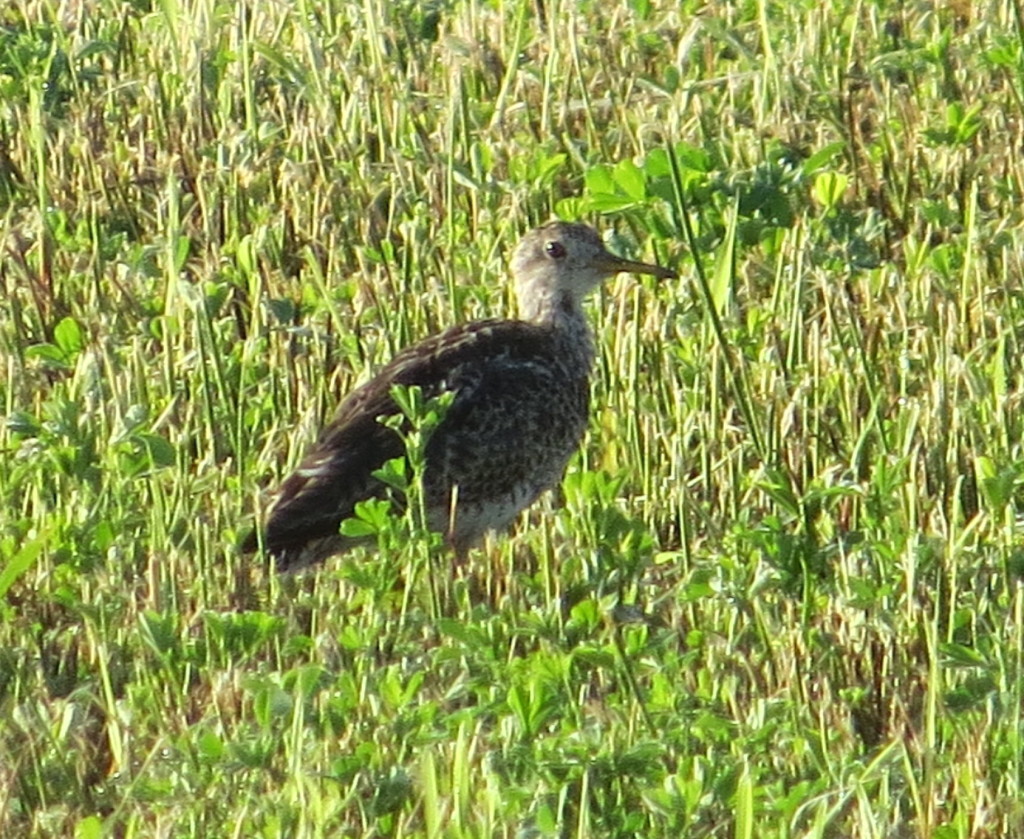 As delightful as the Sandpiper appetizers were, it was time for the main course: Blue Grosbeaks. We struck out on finding the one closest to the hay field, but not the other one a mile away. As soon as I rolled down my window I heard that sweet, sweet familiar sound of a singing male. After a bit of patience I was able to get Dad his life look at this special bird.
As delightful as the Sandpiper appetizers were, it was time for the main course: Blue Grosbeaks. We struck out on finding the one closest to the hay field, but not the other one a mile away. As soon as I rolled down my window I heard that sweet, sweet familiar sound of a singing male. After a bit of patience I was able to get Dad his life look at this special bird.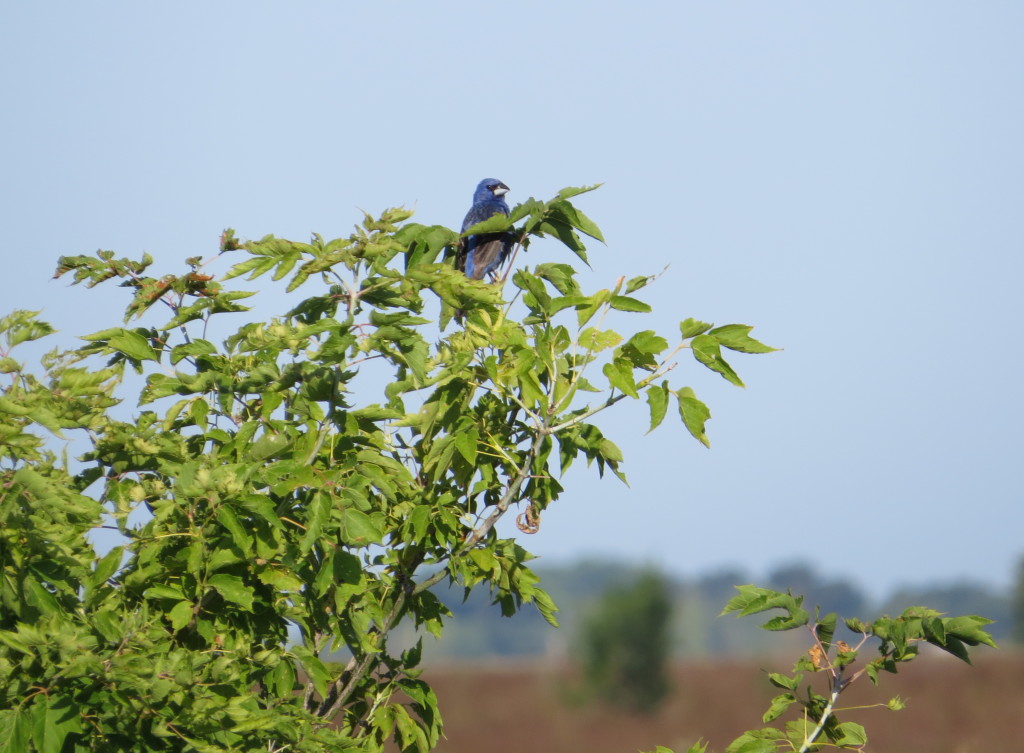 Even though this male impressed us with his vocal abilities over and over and over, he did not want to show off his studly rusty wing patch.
Even though this male impressed us with his vocal abilities over and over and over, he did not want to show off his studly rusty wing patch.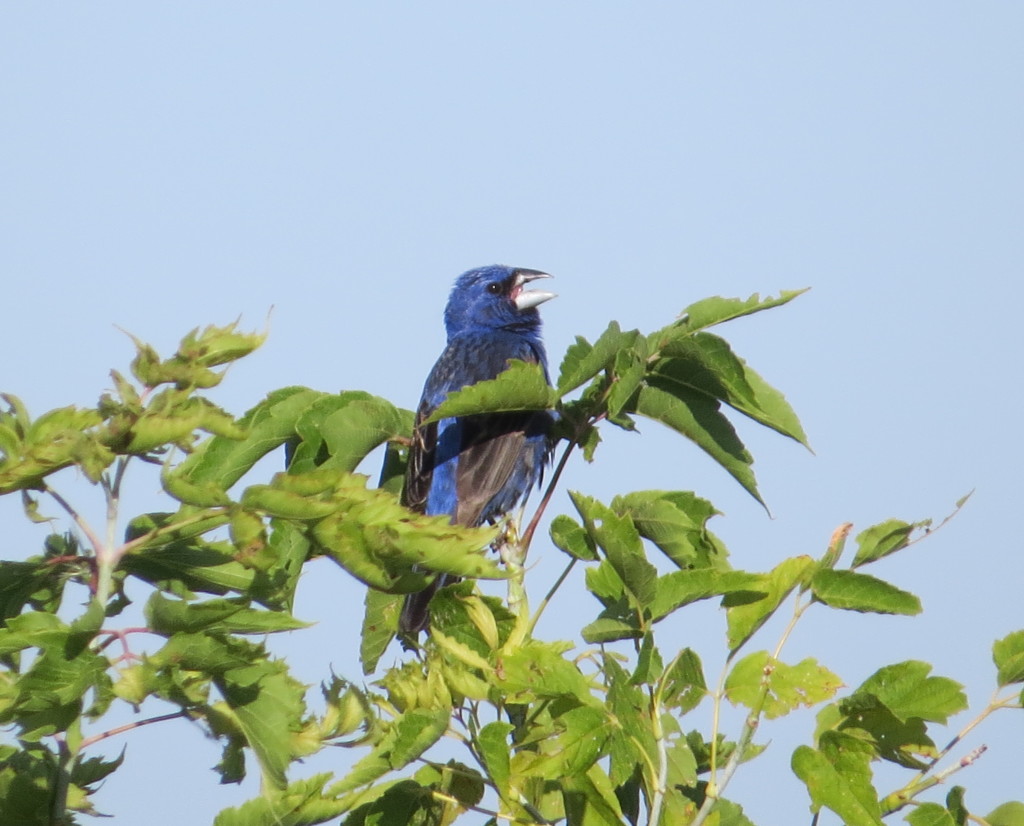 Dad was getting some good looks at his lifer, but I wanted him to get the full effect and see that wing patch. Eventually the bird bared it all with pride and great gusto.
Dad was getting some good looks at his lifer, but I wanted him to get the full effect and see that wing patch. Eventually the bird bared it all with pride and great gusto.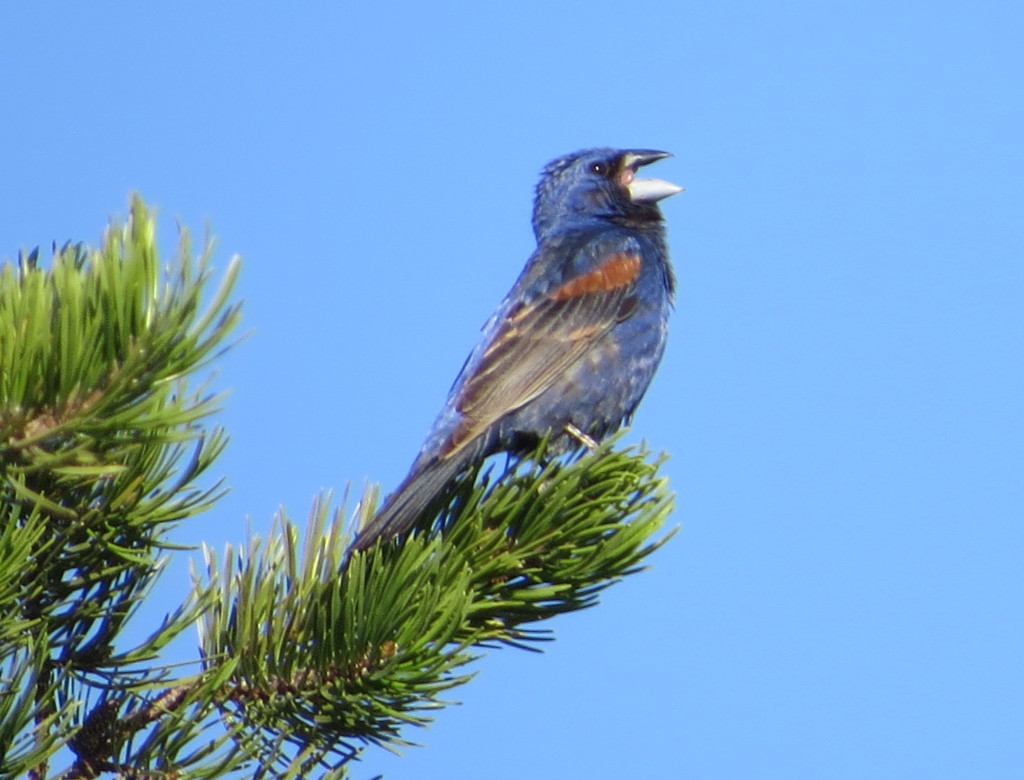
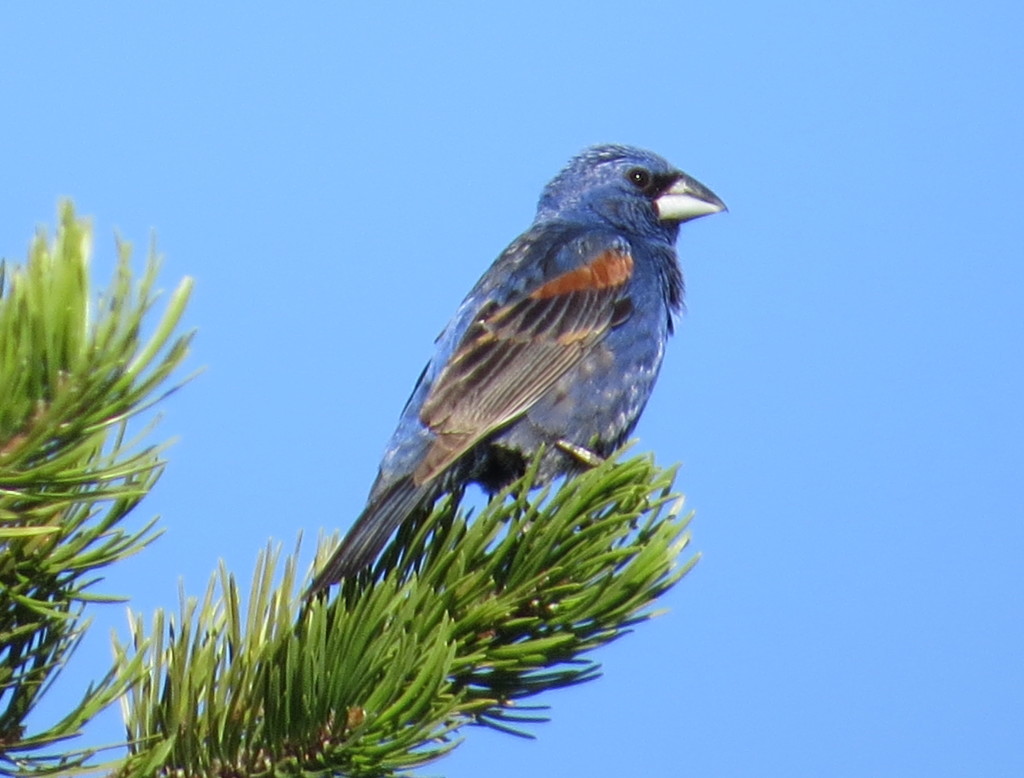 So where does the birding and blogging go after a morning like this? Nowhere but down again, of course.
So where does the birding and blogging go after a morning like this? Nowhere but down again, of course.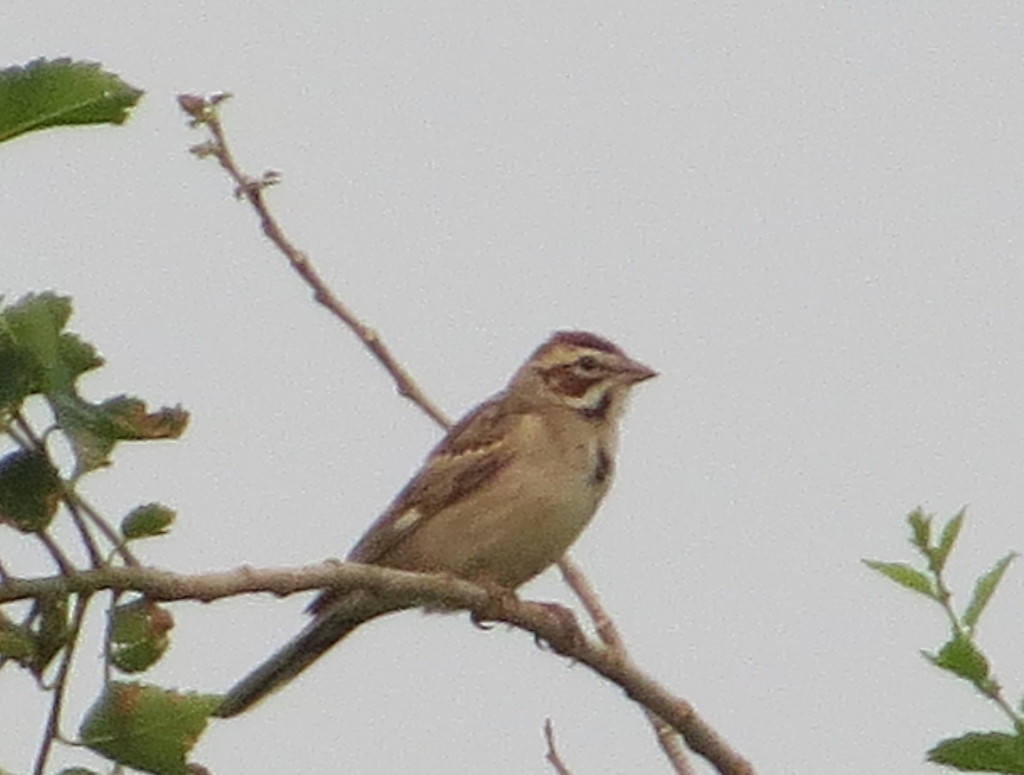
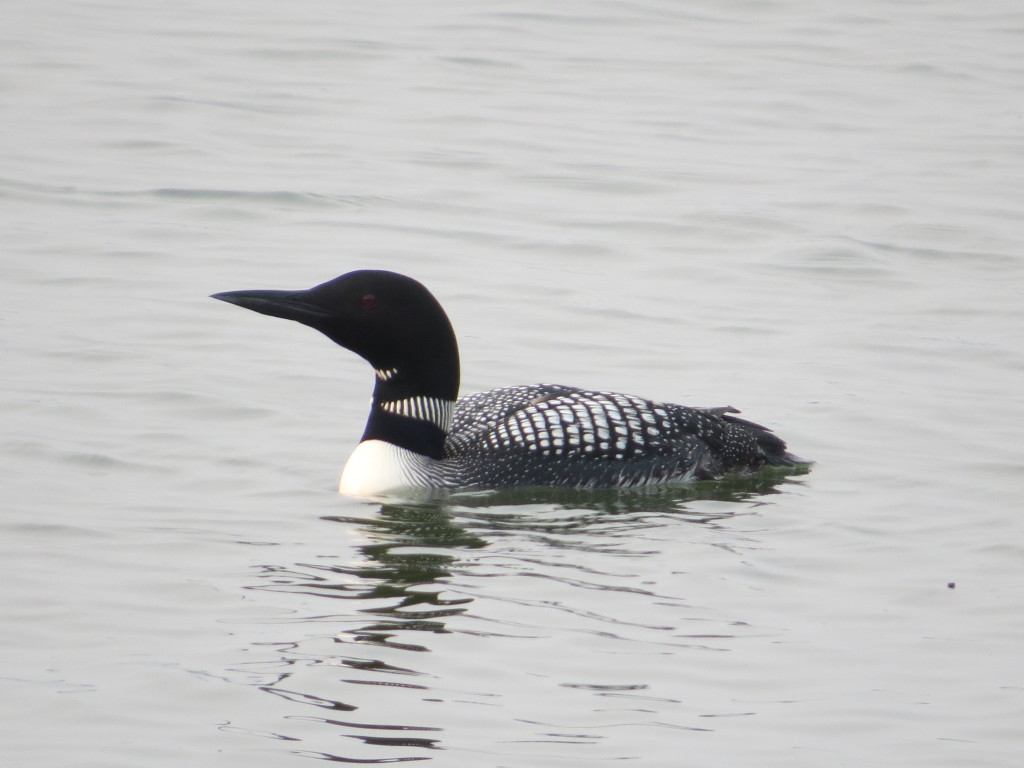 Hmmm…I wonder why they didn’t have a chick with them. It’s best not to think about that.
Hmmm…I wonder why they didn’t have a chick with them. It’s best not to think about that.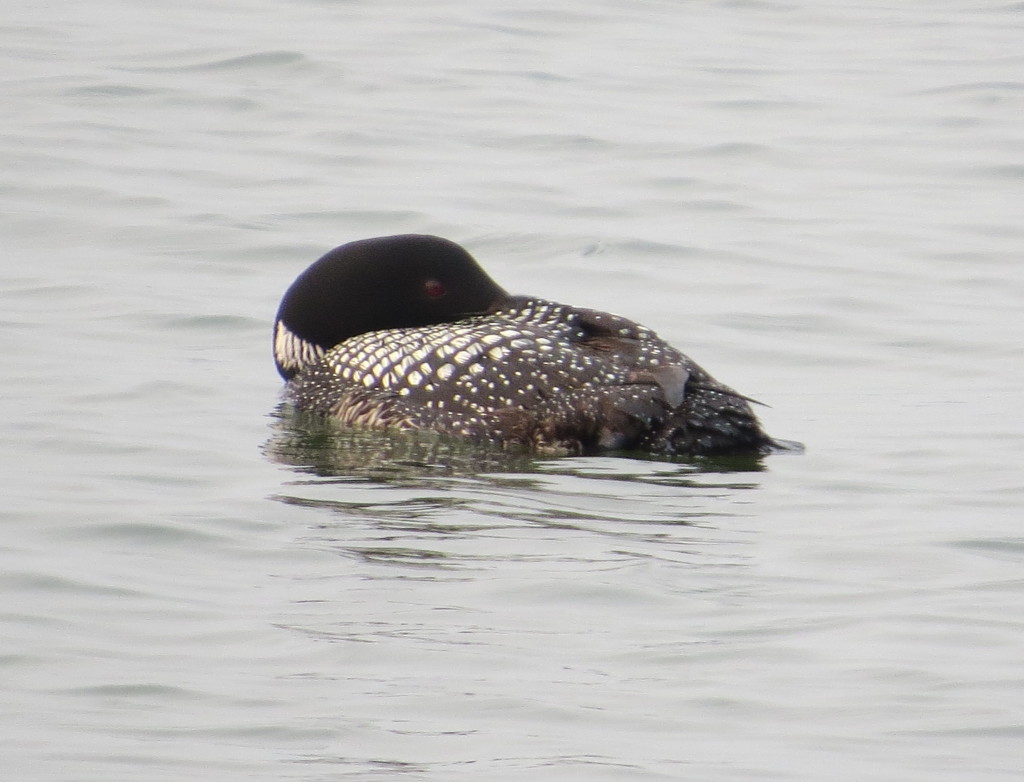 I got back to the house, happy with my morning, and was busy documenting my LASP sighting. Then an email came in that changed the course of my day. After nearly 15 hours of observing the mystery Kingbird over the course of a week, Bruce Fall clinched the ID after hearing the Kingbird vocalize when a Brown-headed Cowbird got too close for comfort. Tropical Kingbird. Holy smokes. This is a scarce bird in even the tiny corners of Arizona and Texas that it calls home. I told Melissa I would have to try to squeeze in a fast trip to the Cities to try for this one. This was a Minnesota first state record of a Tropical Kingbird after all.
I got back to the house, happy with my morning, and was busy documenting my LASP sighting. Then an email came in that changed the course of my day. After nearly 15 hours of observing the mystery Kingbird over the course of a week, Bruce Fall clinched the ID after hearing the Kingbird vocalize when a Brown-headed Cowbird got too close for comfort. Tropical Kingbird. Holy smokes. This is a scarce bird in even the tiny corners of Arizona and Texas that it calls home. I told Melissa I would have to try to squeeze in a fast trip to the Cities to try for this one. This was a Minnesota first state record of a Tropical Kingbird after all.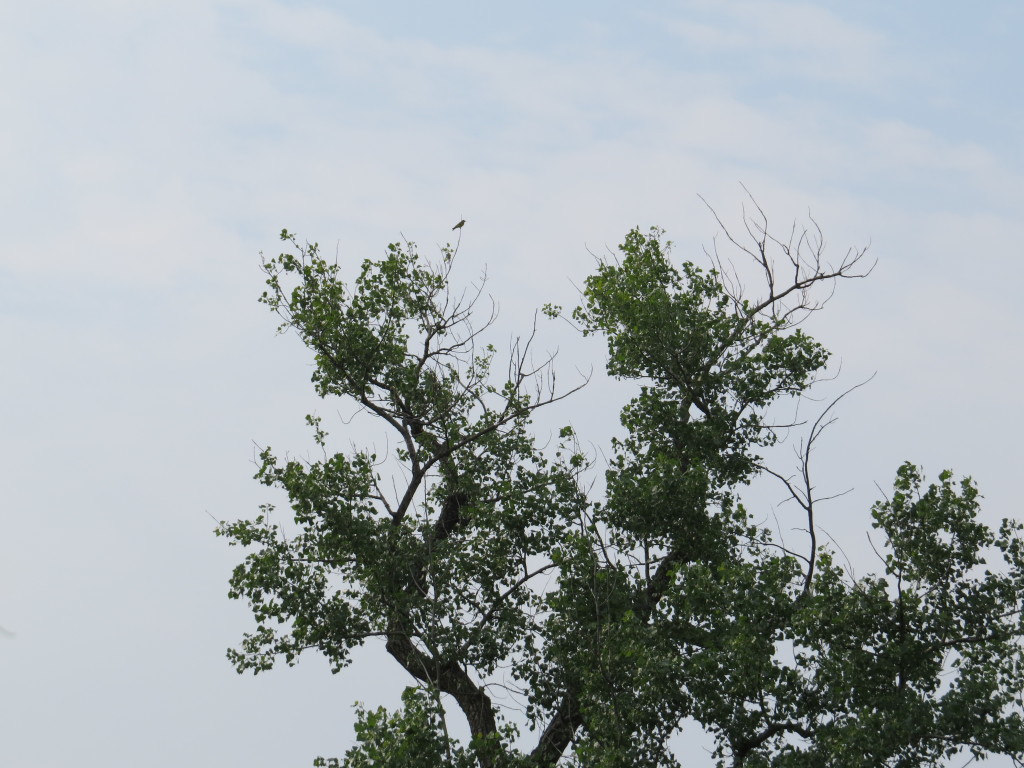
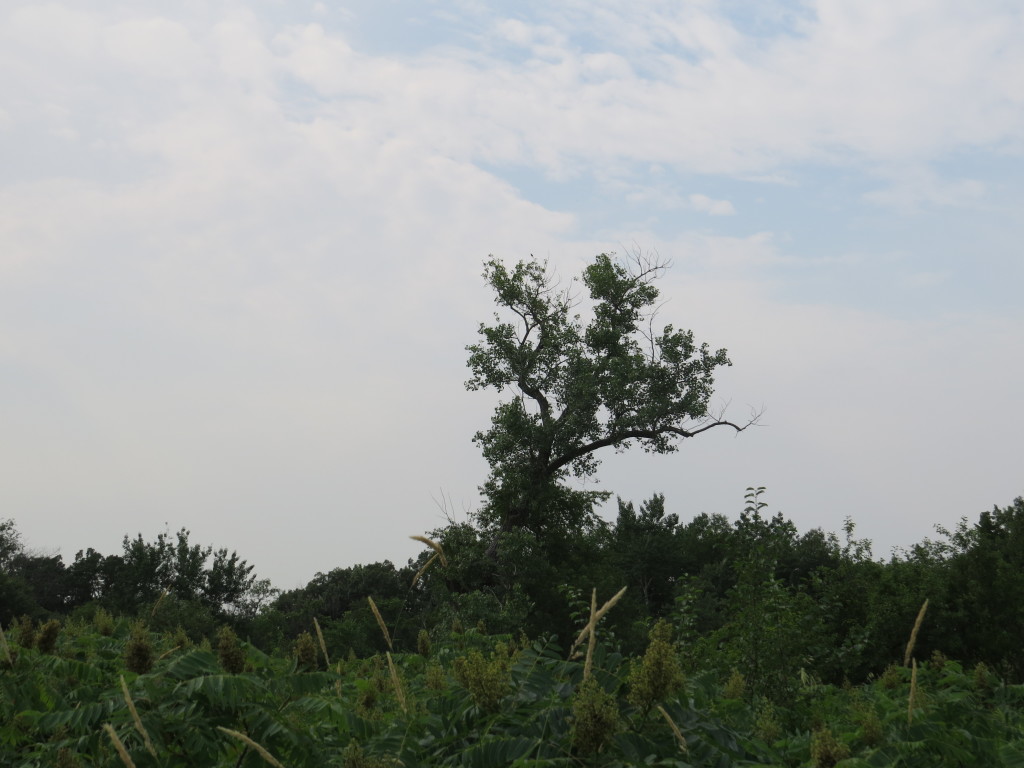
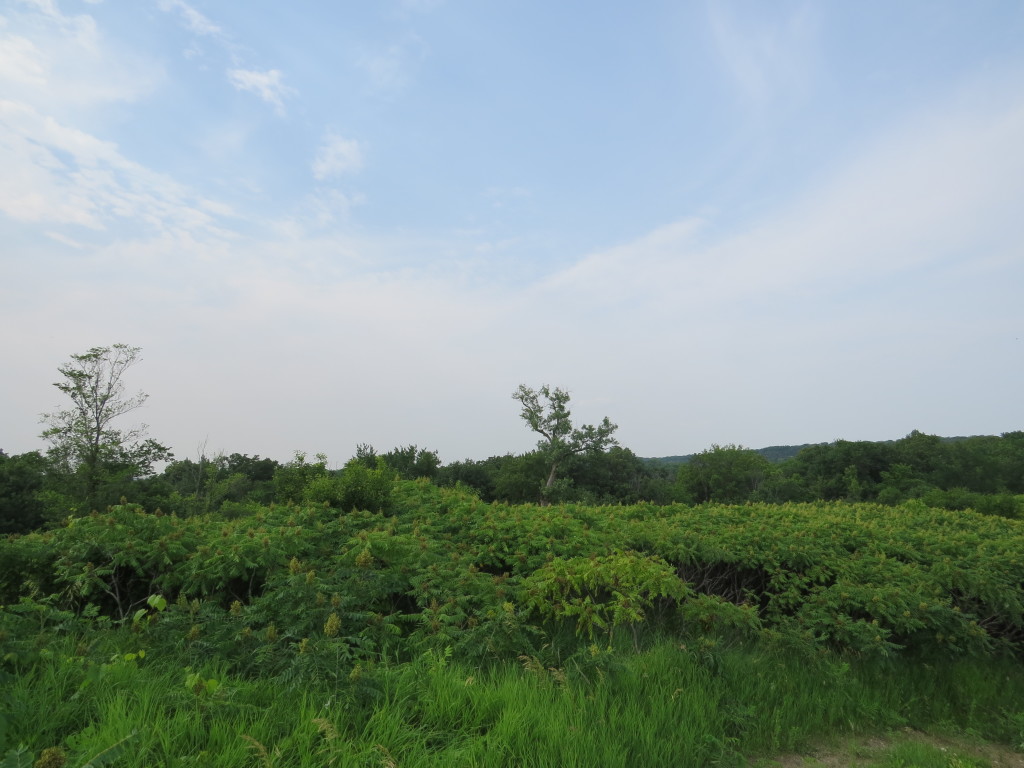 The bird was out there a ways, so I did the best I could for photos.
The bird was out there a ways, so I did the best I could for photos.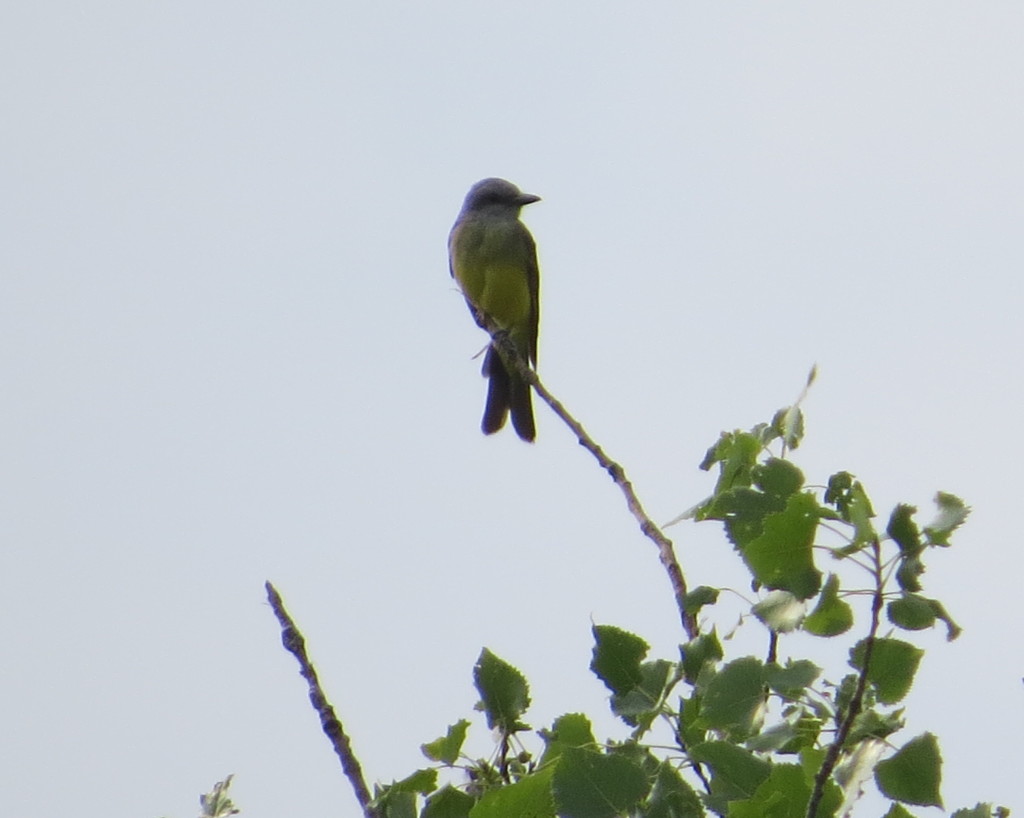
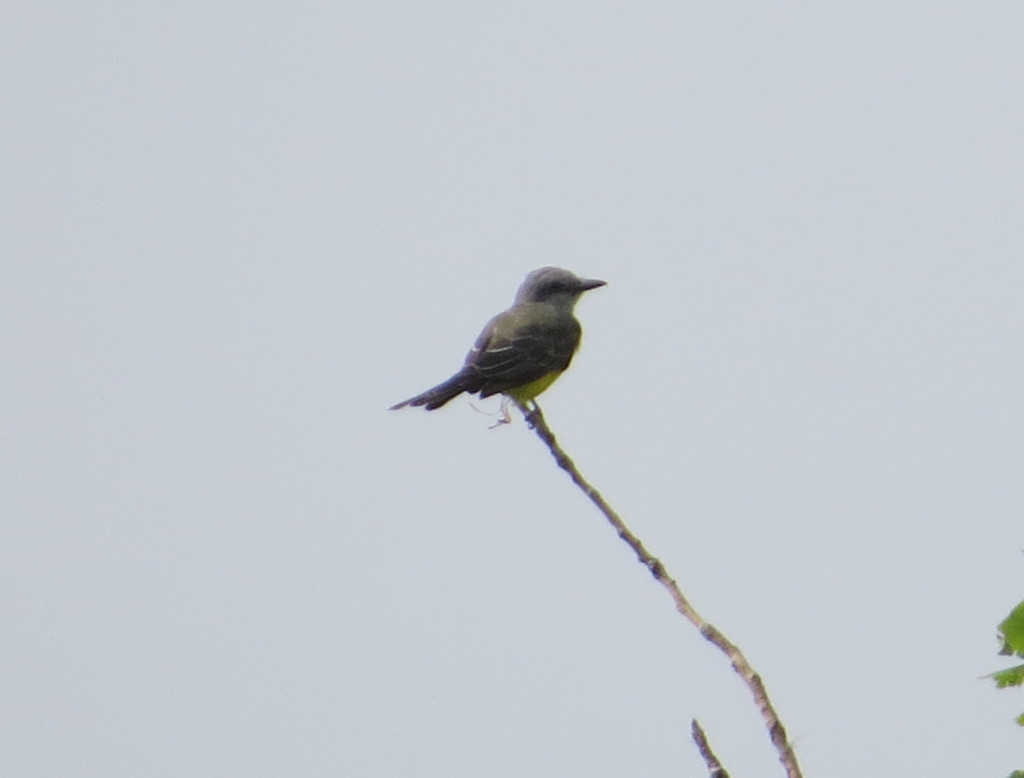 I showed the kids the bird on the camera’s LCD. With another check mark for his list, Evan was out of there (and Melissa and Marin too).
I showed the kids the bird on the camera’s LCD. With another check mark for his list, Evan was out of there (and Melissa and Marin too).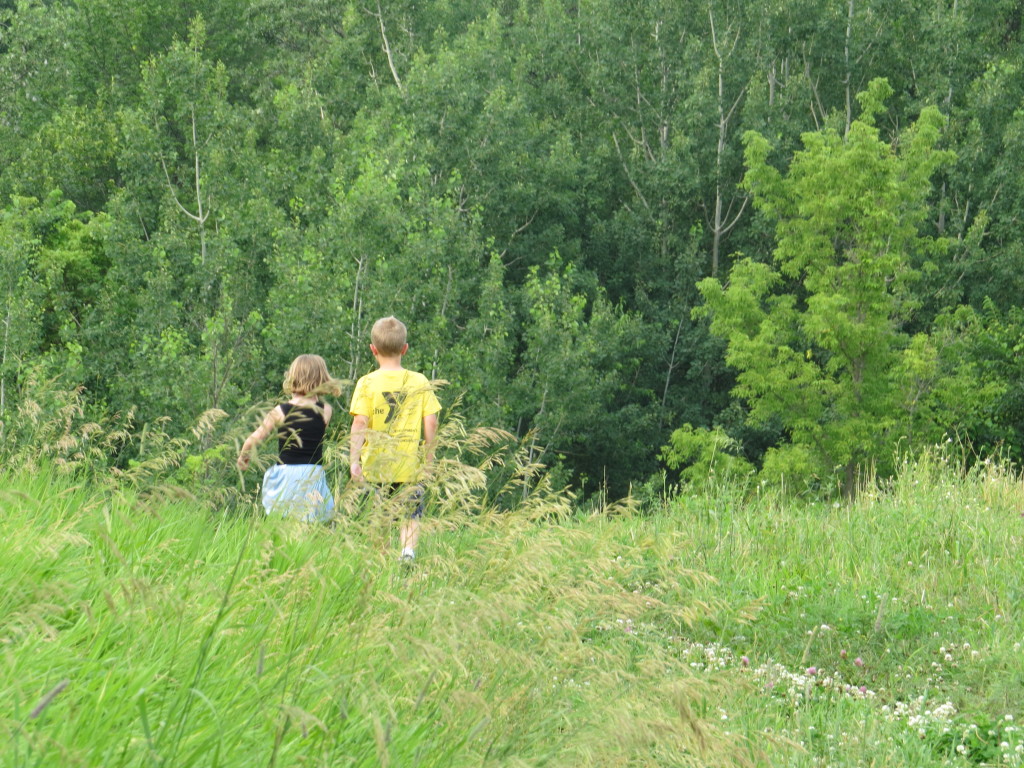 I was hoping for better photos, so I stayed for a little while. After ten minutes of observation, something incredible happened that two other birders present and myself witnessed: the Tropical Kingbird stretched out its neck, pulled its wings behind its back, and vocalized! It was a 1-second higher-pitched trill. I later listened to the sounds of TRKI on the iPod, and it was a match for the first call listed. I felt bad for all the birders that have watched and watched this bird just waiting for such a moment. Luck of the draw I guess. Just like when something even better then happened–the Kingbird flew to a low perch right on the path! Matt Stratmoen, his 600 mm lense, and I hustled down the path to get near it. We’d snap some photos, creep closer, snap, creep, snap, etc. We eventually got within 100 feet or less.
I was hoping for better photos, so I stayed for a little while. After ten minutes of observation, something incredible happened that two other birders present and myself witnessed: the Tropical Kingbird stretched out its neck, pulled its wings behind its back, and vocalized! It was a 1-second higher-pitched trill. I later listened to the sounds of TRKI on the iPod, and it was a match for the first call listed. I felt bad for all the birders that have watched and watched this bird just waiting for such a moment. Luck of the draw I guess. Just like when something even better then happened–the Kingbird flew to a low perch right on the path! Matt Stratmoen, his 600 mm lense, and I hustled down the path to get near it. We’d snap some photos, creep closer, snap, creep, snap, etc. We eventually got within 100 feet or less.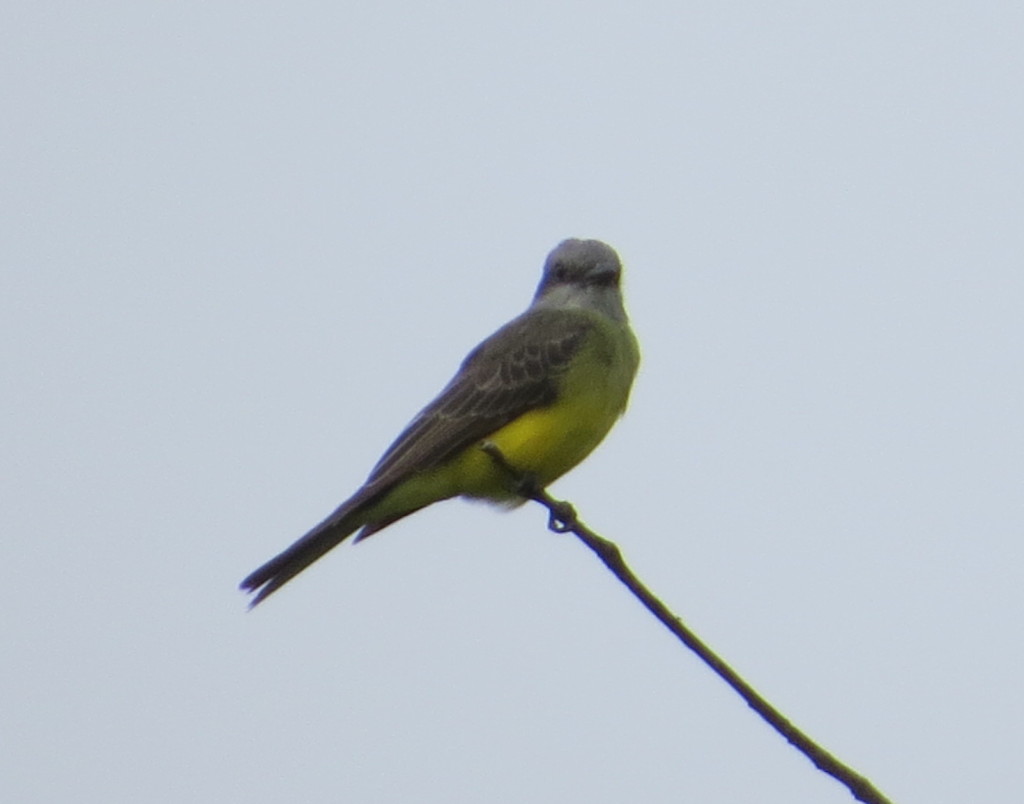 Matt is the one who took that amazing image of the Orr Black-backed Woodpeckers with the mom and dad in profile perched on either side of the nest hole with the baby sticking his head out screaming. Amazing image. It’s on
Matt is the one who took that amazing image of the Orr Black-backed Woodpeckers with the mom and dad in profile perched on either side of the nest hole with the baby sticking his head out screaming. Amazing image. It’s on 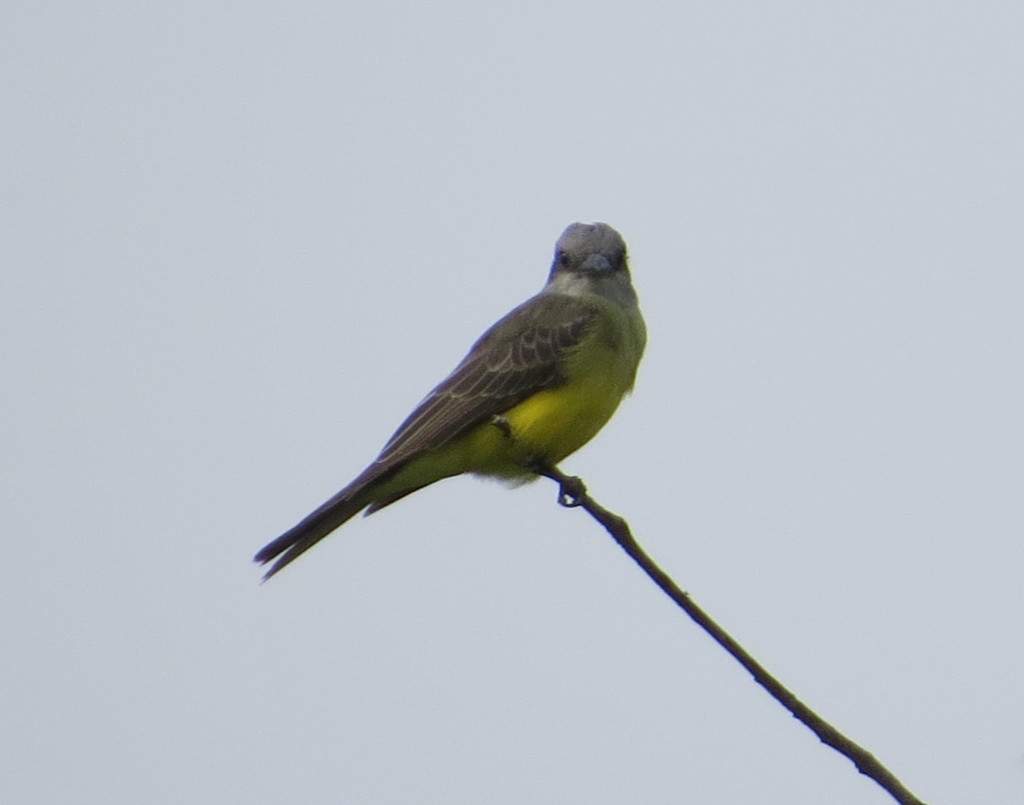 We won’t talk about the quality difference between Matt’s photos and mine of the Tropical Kingbird from the same distance. But I can live with mine. The views were phenomenal and more than I hoped for.
We won’t talk about the quality difference between Matt’s photos and mine of the Tropical Kingbird from the same distance. But I can live with mine. The views were phenomenal and more than I hoped for.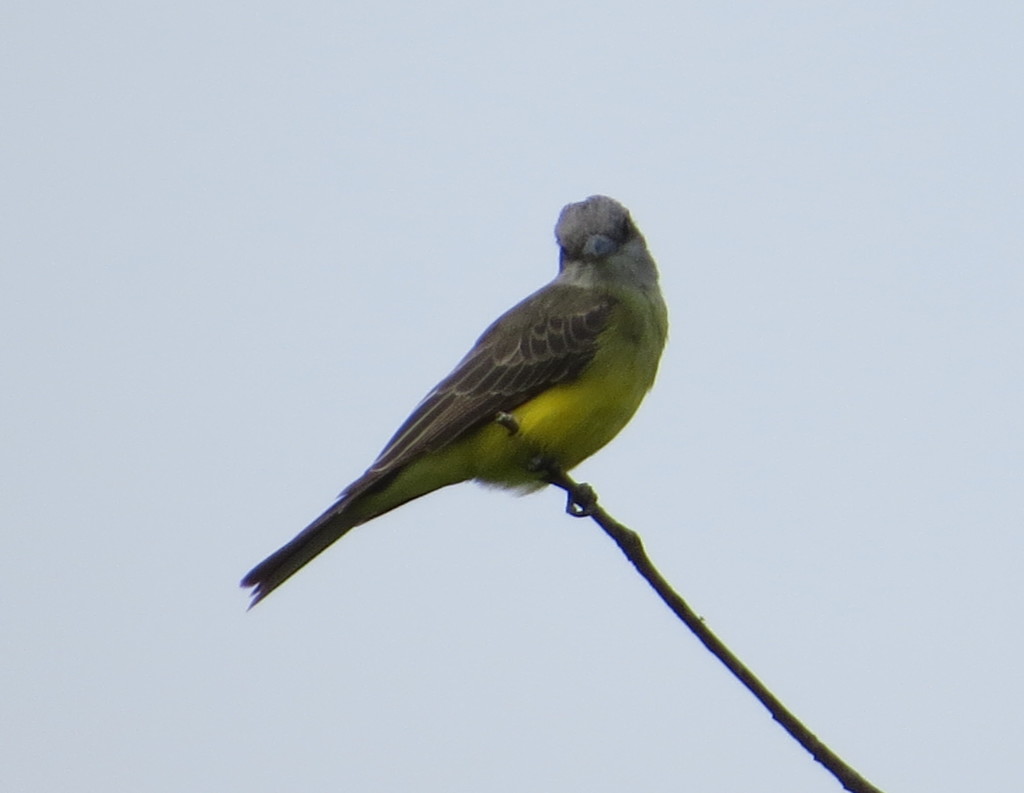
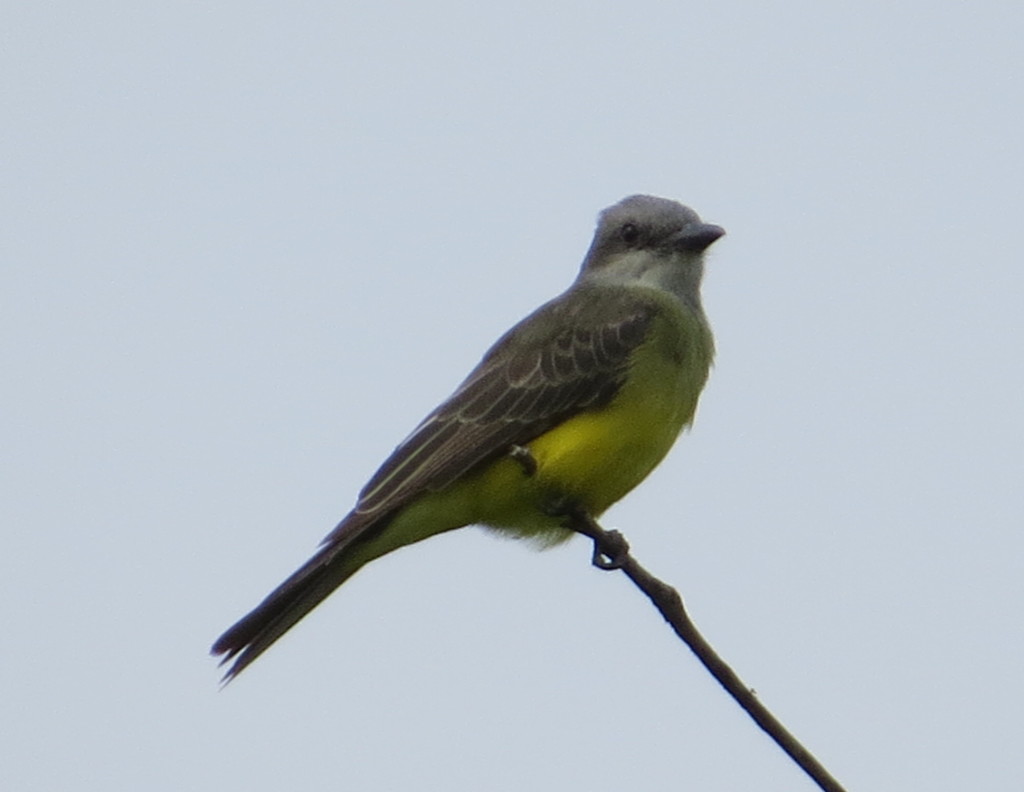 The Kingbird had enough of this low perch and went back to his tall, remote Cottonwood. I got what I came for and then some, so I hustled back to the van after just a half hour of observation. After all, Swedish meatballs and a fight loading Ikea furniture in the van were calling my name.
The Kingbird had enough of this low perch and went back to his tall, remote Cottonwood. I got what I came for and then some, so I hustled back to the van after just a half hour of observation. After all, Swedish meatballs and a fight loading Ikea furniture in the van were calling my name.